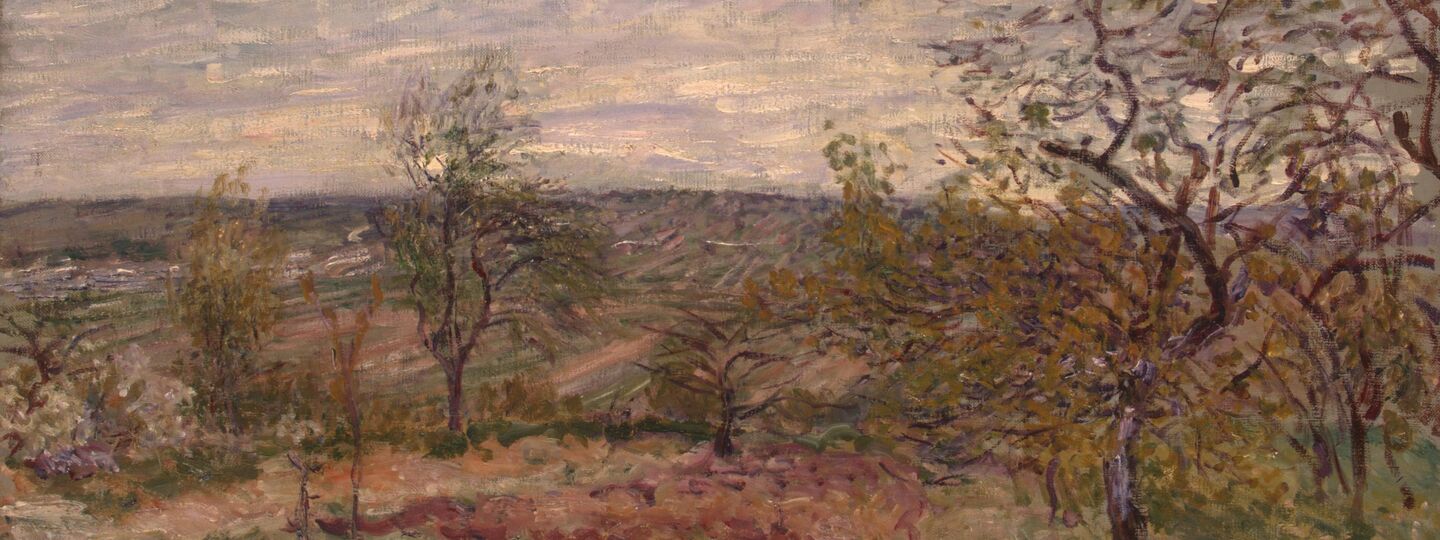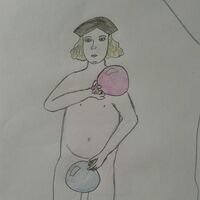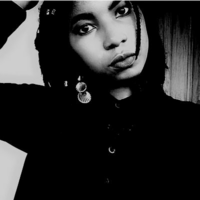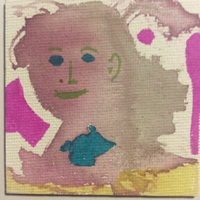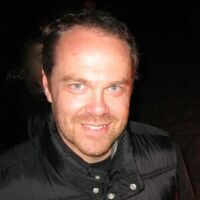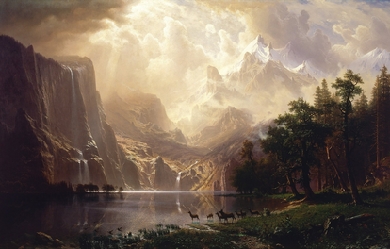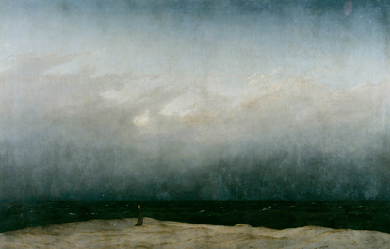
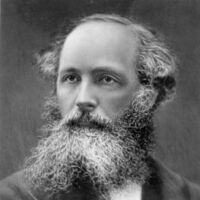
James Clerk Maxwell of Glenlair FRS FRSE (13 June 1831 – 5 November 1879) was a Scottish physicist and mathematician. His most prominent achievement was formulating classical electromagnetic theory. This unites all previously unrelated observations, experiments, and equations of electricity, magnetism, and optics into a consistent theory. Maxwell's equations demonstrate that electricity, magnetism and light are all manifestations of the same phenomenon, namely the electromagnetic field. Subsequently, all other classic laws or equations of these disciplines became simplified cases of Maxwell's equations. Maxwell's achievements concerning electromagnetism have been called the “second great unification in physics”, after the first one realised by Isaac Newton.
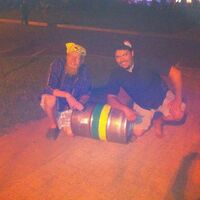
Everyone's entitled to their art; here is mine. Everyone has a lot to process in life and should be able to share the product that results from that construction of meaning. But here it is. Pieces I've written over time and I don't have to tell you explicitly how they all fit together. The whole story is there, but you don't have to understand it like I do. It's for both of us.
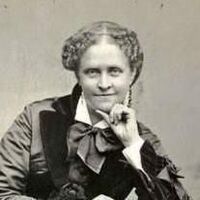
Helen Maria Hunt Jackson, born Helen Fiske (October 15, 1830 – August 12, 1885), was a United States writer who became an activist on behalf of improved treatment of Native Americans by the U.S. government. She detailed the adverse effects of government actions in her history A Century of Dishonor (1881). Her novel Ramona dramatized the federal government's mistreatment of Native Americans in Southern California and attracted considerable attention to her cause, although its popularity was based on its romantic and picturesque qualities rather than its political content. It was estimated to have been reprinted 300 times, and contributed to the growth of tourism in Southern California. Early years She was born Helen Fiske in Amherst, Massachusetts, the daughter of Nathan Welby Fiske and Deborah Waterman Vinal. She had two brothers, both of whom died after birth, and a sister Anne. Her father was a minister, author, and professor of Latin, Greek, and philosophy at Amherst College. Her mother died in 1844 when Helen was fourteen, and her father three years later. Her father provided for her education and arranged for an aunt to care for her. Fiske attended Ipswich Female Seminary and the Abbott Institute, a boarding school run by Reverend J.S.C. Abbott in New York City. She was a classmate of the poet Emily Dickinson, also from Amherst. The two corresponded for the rest of their lives, but few of their letters have survived. Marriage and family In 1852 at age 22, Fiske married U.S. Army Captain Edward Bissell Hunt. They had two sons, one of whom, Murray Hunt, died as an infant in 1854 of a brain disease. In 1863, her husband died in a military accident. Her second son, Rennie Hunt, died of diphtheria in 1865. About 1873-1874, Hunt met William Sharpless Jackson, a wealthy banker and railroad executive, while visiting at Colorado Springs, Colorado, at the resort of Seven Falls. They married in 1875 and she took the name Jackson, under which she was best known for her writings. She was a Unitarian. Career Helen Hunt began writing after the deaths of her family members. She published her early work anonymously, usually under the name "H.H." Ralph Waldo Emerson admired her poetry and used several of her poems in his public readings. He included five of them in his anthology Parnassus. She traveled widely. In the winter of 1873-1874 she was in Colorado Springs, Colorado, in search of a cure for tuberculosis. Here she met the man who would become her second husband. Over the next two years, she published three novels in the anonymous No Name Series, including Mercy Philbrick's Choice and Hetty's Strange History. In 1879 her interests turned to Native Americans after hearing a lecture in Boston by the Ponca Chief Standing Bear. He described the forcible removal of the Ponca from their Nebraska reservation and transfer to the Quapaw Reservation in Indian Territory, where they suffered from disease, climate and poor supplies. Upset about the mistreatment of Native Americans by government agents, Jackson became an activist. She started investigating and publicizing government misconduct, circulating petitions, raising money, and writing letters to the New York Times on behalf of the Ponca. A fiery and prolific writer, Jackson engaged in heated exchanges with federal officials over the injustices committed against American Indians. Among her special targets was U.S. Secretary of Interior Carl Schurz, whom she once called "the most adroit liar I ever knew." She exposed the government's violation of treaties with the American Indian tribes. She documented the corruption of US Indian agents, military officers, and settlers who encroached on and stole Indian lands. Jackson won the support of several newspaper editors who published her reports. Among her correspondents were editor William Hayes Ward of the New York Independent, Richard Watson Guilder of the Century Magazine, and publisher Whitelaw Reid of the New York Daily Tribune. Jackson also wrote a book, the first published under her own name, condemning state and federal Indian policy, and detailing the history of broken treaties. A Century of Dishonor (1881) called for significant reform in government policy toward Native Americans.[10] Jackson sent a copy to every member of Congress with a quote from Benjamin Franklin printed in red on the cover: "Look upon your hands: they are stained with the blood of your relations." The New York Times later wrote that she "soon made enemies at Washington by her often unmeasured attacks, and while on general lines she did some good, her case was weakened by her inability, in some cases, to substantiate the charges she had made; hence many who were at first sympathetic fell away." Jackson went to southern California for respite. Having been interested in the area's missions and the Mission Indians on an earlier visit, she began an in-depth study. While in Los Angeles, she met Don Antonio Coronel, former mayor of the city and a well-known authority on early Californio life in the area. He had served as inspector of missions for the Mexican government. Coronel told her about the plight of the Mission Indians after 1833. They were buffeted by the secularization policies of the Mexican government, as well as later U.S. policies, both of which led to their removal from mission lands. Under its original land grants, the Mexican government provided for resident Indians to continue to occupy such lands. After taking control of the territory in 1848, the U.S. generally disregarded such Mission Indian occupancy claims. In 1852, there were an estimated 15,000 Mission Indians in Southern California. By the time of Jackson's visit, they numbered fewer than 4,000. Coronel's account inspired Jackson to action. The U.S. Commissioner of Indian Affairs, Hiram Price, recommended her appointment as an Interior Department agent. Jackson's assignment was to visit the Mission Indians, ascertain the location and condition of various bands, and determine what lands, if any, should be purchased for their use. With the help of the US Indian agent Abbot Kinney, Jackson traveled throughout Southern California and documented conditions. At one point, she hired a law firm to protect the rights of a family of Saboba Indians facing dispossession from their land at the foot of the San Jacinto Mountains. In 1883, Jackson completed her 56-page report. It recommended extensive government relief for the Mission Indians, including the purchase of new lands for reservations and the establishment of more Indian schools. A bill embodying her recommendations passed the U.S. Senate but died in the House of Representatives. Jackson decided to write a novel to reach a wider audience. When she wrote Coronel asking for details about early California and any romantic incidents he could remember, she explained her purpose: "I am going to write a novel, in which will be set forth some Indian experiences in a way to move people's hearts. People will read a novel when they will not read serious books."[14] She was inspired by her friend Harriet Beecher Stowe's Uncle Tom's Cabin (1852). "If I could write a story that would do for the Indian one-hundredth part what Uncle Tom's Cabin did for the Negro, I would be thankful the rest of my life," she wrote. Although Jackson started an outline in California, she began writing the novel in December 1883 in her New York hotel room, and completed it in about three months. Originally titled In The Name of the Law, she published it as Ramona (1884). It featured Ramona, an orphan girl who was half Indian and half Scots, raised in Spanish Californio society, and her Indian husband Alessandro, and their struggles for land of their own. The characters were based on people known by Jackson and incidents which she had encountered. The book achieved rapid success among a wide public and was popular for generations; it was estimated to have been reprinted 300 times. Its romantic story also contributed to the growth of tourism to Southern California. Encouraged by the popularity of her book, Jackson planned to write a children's story about Indian issues, but did not live to complete it. Her last letter was written to President Grover Cleveland and said: "From my death bed I send you message of heartfelt thanks for what you have already done for the Indians. I ask you to read my Century of Dishonor. I am dying happier for the belief I have that it is your hand that is destined to strike the first steady blow toward lifting this burden of infamy from our country and righting the wrongs of the Indian race." Jackson died of stomach cancer in 1885 in San Francisco, California. Her husband arranged for her burial on a one-acre plot on a high plateau overlooking Colorado Springs, Colorado. Her grave was later moved to Evergreen Cemetery in Colorado Springs. At the time of her death, her estate was valued at $12,642. She used her married names, Helen Hunt and Helen Jackson, but she is most often referred to as Helen Hunt Jackson. The New York Times referred to her as Helen Hunt Jackson in 1885, reporting on her final illness, and in 1886, reporting on visitors to her grave. The name was used during her lifetime by others, though she disliked the practice. "It is not proper to keep one's first married name, after a second marriage", she wrote to Moncure Conway. To Caroline Healey Dall, she admitted she was "positively waging war" against being called "Helen Hunt Jackson". Critical response and legacy Jackson's A Century of Dishonor remains in print, as does a collection of her poetry. A New York Times reviewer said of Ramona that "by one estimate, the book has been reprinted 300 times." One year after Jackson's death the North American Review called Ramona "unquestionably the best novel yet produced by an American woman" and named it, along with Uncle Tom's Cabin, one of two most ethical novels of the 19th century. Sixty years after its publication, 600,000 copies had been sold. There have been over 300 reissues to date and the book has never been out of print. The novel has been adapted for other media, including three films, stage, and television productions. Valery Sherer Mathes assessed the writer and her work: Ramona may not have been another Uncle Tom's Cabin, but it served, along with Jackson's writings on the Mission Indians of California, as a catalyst for other reformers ....Helen Hunt Jackson cared deeply for the Indians of California. She cared enough to undermine her health while devoting the last few years of her life to bettering their lives. Her enduring writings, therefore, provided a legacy to other reformers, who cherished her work enough to carry on her struggle and at least try to improve the lives of America's first inhabitants. Her friend Emily Dickinson once described her limitations: "she has the facts but not the phosphorescence." In a review of a film version, a journalist wrote about the novel, calling it "the long and lugubrious romance by Helen Hunt Jackson, over which America wept unnumbered gallons in the eighties and nineties," and complained of "the long, uneventful stretches of the novel."[26] In reviewing the history of her publisher, Houghton Mifflin, a 1970 reviewer noted that Jackson typified the house's success: "Middle aged, middle class, middlebrow." Jackson herself wrote, "My Century of Dishonor and Ramona are the only things I have done of which I am glad.... They will live, and... bear fruit." A portion of Jackson's Colorado home has been reconstructed in the Colorado Springs Pioneers Museum and furnished with her possessions.

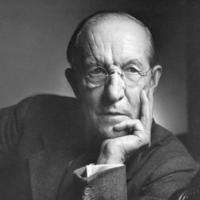
Duncan Campbell Scott (August 2, 1862– December 19, 1947) was a Canadian bureaucrat, poet and prose writer. With Charles G.D. Roberts, Bliss Carman, and Archibald Lampman, he is classed as one of Canada’s Confederation Poets. Scott was a Canadian lifetime civil servant who served as deputy superintendent of the Department of Indian Affairs from 1913 to 1932, and is better known today for advocating the assimilation of Canada’s First Nations peoples in that capacity. Life and legacy Scott was born in Ottawa, Ontario, the son of Rev. William Scott and Janet MacCallum. He was educated at Stanstead Wesleyan College. Early in life, he became an accomplished pianist. Scott wanted to be a doctor, but family finances were precarious, so in 1879 he joined the federal civil service. As the story goes, q:William Scott might not have money [but] he had connections in high places. Among his acquaintances was the prime minister, Sir John A. Macdonald, who agreed to meet with Duncan. As chance would have it, when Duncan arrived for his interview, the prime minister had a memo on his desk from the Indian Branch of the Department of the Interior asking for a temporary copying clerk. Making a quick decision while the serious young applicant waited in front of him, Macdonald wrote across the request: 'Approved. Employ Mr. Scott at $1.50.’ Scott "spent his entire career in the same branch of government, working his way up to the position of deputy superintendent of Indian Affairs in 1913, the highest non-elected position possible in his department. He remained in this post until his retirement in 1932.” Scott’s father also subsequently found work in Indian Affairs, and the entire family moved into a newly built house on 108 Lisgar St., where Duncan Campbell Scott would live for the rest of his life. In 1883 Scott met fellow civil servant, Archibald Lampman. It was the beginning of an instant friendship that would continue unbroken until Lampman’s death sixteen years later.... It was Scott who initiated wilderness camping trips, a recreation that became Lampman’s favourite escape from daily drudgery and family problems. In turn, Lampman’s dedication to the art of poetry would inspire Scott’s first experiments in verse. By the late 1880s Scott was publishing poetry in the prestigious American magazine, Scribner’s. In 1889 his poems “At the Cedars” and “Ottawa” were included in the pioneering anthology, Songs of the Great Dominion. Scott and Lampman "shared a love of poetry and the Canadian wilderness. During the 1890s the two made a number of canoe trips together in the area north of Ottawa.” In 1892 and 1893, Scott, Lampman, and William Wilfred Campbell wrote a literary column, “At the Mermaid Inn,” for the Toronto Globe. "Scott... came up with the title for it. His intention was to conjure up a vision of The Mermaid Inn Tavern in old London where Sir Walter Raleigh founded the famous club whose members included Ben Jonson, Beaumont and Fletcher, and other literary lights. In 1893 Scott published his first book of poetry, The Magic House and Other Poems. It would be followed by seven more volumes of verse: Labor and the Angel (1898), New World Lyrics and Ballads (1905), Via Borealis (1906), Lundy’s Lane and Other Poems (1916), Beauty and Life (1921), The Poems of Duncan Campbell Scott (1926) and The Green Cloister (1935). In 1894, Scott married Belle Botsford, a concert violinist, whom he had met at a recital in Ottawa. They had one child, Elizabeth, who died at 12. Before she was born, Scott asked his mother and sisters to leave his home (his father had died in 1891), causing a long-time rift in the family. In 1896 Scott published his first collection of stories, In the Village of Viger, "a collection of delicate sketches of French Canadian life. Two later collections, The Witching of Elspie (1923) and The Circle of Affection (1947), contained many fine short stories." Scott also wrote a novel, although it was not published until after his death (as The Untitled Novel, in 1979). After Lampman died in 1899, Scott helped publish a number of editions of Lampman’s poetry. Scott “was a prime mover in the establishment of the Ottawa Little Theatre and the Dominion Drama Festival.” In 1923 the Little Theatre performed his one-act play, Pierre; it was later published in Canadian Plays from Hart House Theatre (1926). His wife died in 1929. In 1931 he married poet Elise Aylen, more than 30 years his junior. After he retired the next year, "he and Elise spent much of the 1930s and 1940s travelling in Europe, Canada and the United States.” He died in December 1947 in Ottawa at the age of 85 and is buried in Ottawa’s Beechwood Cemetery. Indian Affairs Prior to taking up his position as head of the Department of Indian Affairs, in 1905 Scott was one of the Treaty Commissioners sent to negotiate Treaty No. 9 in Northern Ontario. Aside from his poetry, Scott made his mark in Canadian history as the head of the Department of Indian Affairs from 1913 to 1932. Even before Confederation, the Canadian government had adopted a policy of assimilation under the Gradual Civilization Act 1857. One biographer of Scott states that: The Canadian government’s Indian policy had already been set before Scott was in a position to influence it, but he never saw any reason to question its assumption that the 'red’ man ought to become just like the 'white’ man. Shortly after he became Deputy Superintendent, he wrote approvingly: ‘The happiest future for the Indian race is absorption into the general population, and this is the object and policy of our government.’... Assimilation, so the reasoning went, would solve the ‘Indian problem,’ and wrenching children away from their parents to 'civilize’ them in residential schools until they were eighteen was believed to be a sure way of achieving the government’s goal. Scott... would later pat himself on the back: ‘I was never unsympathetic to aboriginal ideals, but there was the law which I did not originate and which I never tried to amend in the direction of severity.’ while Scott himself wrote: I want to get rid of the Indian problem. I do not think as a matter of fact, that the country ought to continuously protect a class of people who are able to stand alone… Our objective is to continue until there is not a single Indian in Canada that has not been absorbed into the body politic and there is no Indian question, and no Indian Department, that is the whole object of this Bill. In 1920, under Scott’s direction, and with the concurrence of the major religions involved in native education, an amendment to the Indian Act made it mandatory for all native children between the ages of seven and fifteen to attend school. Attendance at a residential school was made compulsory. Although a reading of Bill 14 states that no particular kind of school was stipulated. Scott was in favour of residential schooling for aboriginal children, as he believed removing them from the influences of home and reserve would hasten the cultural and economic transformation of the whole aboriginal population. In cases where a residential school was the only kind available, residential enrollment did become mandatory, and aboriginal children were compelled to leave their homes, their families and their culture, with or without their parents’ consent. However, in 1901, 226 of the 290 Indian schools across Canada were day schools, and by 1961, the 377 day schools far outnumbered the 56 residential institutions. CBC has reported that "In all, about 150,000 aboriginal, Inuit and Métis children were removed from their communities and forced to attend the schools." The 150,000 enrollment figure is an estimate not disputed by Aboriginal Affairs and Northern Development, but it is not clear what percentage were “removed from their communities and forced to attend the schools.” A percentage of the residential schools were in or close by the children’s communities. Moreover, while many aboriginal parents distrusted the residential schools or preferred to raise and educate their children in a traditional manner, other parents willingly enrolled their children, partly from a belief that the schooling of the “white man” would benefit them, and partly from a knowledge that schools would provide shelter, food and clothing which dire conditions on the reserve could not provide. Harsh criticism has been leveled at Scott and the residential school system, as children who attended some of the more poorly maintained or administered schools lived in terrible conditions; in some cases the mortality rate exceeded fifty percent due to the spread of infectious disease. This situation was made worse by the federal policy that tied funding to enrollment numbers, which resulted in some schools enrolling sick children in order to boost their numbers. Echoing Scott’s desire to absorb aboriginals into the wider Canadian population, many residential and day schools strongly discouraged students from speaking their native language, and harsh punishments were administered. Corporal punishment was sometimes justified by the belief that it was the only way to “save souls”, “civilize” the native children and, in the residential schools, punish runaways who might make the school responsible for injury or death while trying to return home. Many reports of physical, sexual and psychological abuse in the residential schools have surfaced over the years. Because any kind of scandal coming out of the residential schools would have caused Indian Affairs, the churches and the government of the day much embarrassment, incidents of abuse were often discounted or covered up. When Scott retired, his “policy of assimilating the Indians had been so much in keeping with the thinking of the time that he was widely praised for his capable administration.” At the time, Scott was able to point to evidence of success in increasing enrollment and attendance, as the number of First Nations children enrolled in any school rose from 11,303 in 1912 to 17,163 in 1932. Residential school enrollment during the same period rose from 3,904 to 8,213. Actual attendance figures from all schools had also risen sharply, going from 64% of enrollment in 1920 to 75% in 1930, and Scott attributed this rise partly to Bill 14's section on compulsory attendance but also to a more positive attitude among First Nations people toward education. However, despite the encouraging statistics, Scott’s efforts to bring about assimilation through residential schools could be judged a failure, as many former students retained their language, went on to maintain and preserve their tribe’s culture, and refused to accept full Canadian citizenship when it was offered. Moreover, over the long history of the residential system, only a minority of all enrolled students went beyond the elementary grades, and many former students found themselves lacking the skills that would enable them to find employment on or off the reserve. Honours and awards Scott was honoured for his writing during and after his lifetime. He was elected a Fellow of the Royal Society of Canada in 1899 and served as its president from 1921 to 1922. The Society awarded him the second-ever Lorne Pierce Medal in 1927 for his contributions to Canadian literature. In 1934 he was made a Companion of the Order of St. Michael and St. George. He also received honorary degrees from the University of Toronto (Doctor of Letters in 1922) and Queen’s University (Doctor of Laws in 1939). In 1948, the year after his death, he was designated a Person of National Historic Significance. Poetry Scott’s "literary reputation has never been in doubt. He has been well represented in virtually all major anthologies of Canadian poetry published since 1900.” In Poets of the Younger Generation (1901), Scottish literary critic William Archer wrote of Scott: He is above everything a poet of climate and atmosphere, employing with a nimble, graphic touch the clear, pure, transparent colours of a richly-furnished palette.... Though it must not be understood that his talent is merely descriptive. There is a philosophic and also a romantic strain in it... There is scarcely a poem of Mr. Scott’s from which one could not cull some memorable descriptive passage.... As a rule Mr. Scott’s workmanship is careful and highly finished. He is before everything a colourist. He paints in lines of a peculiar and vivid translucency. But he is also a metrist of no mean skill, and an imaginative thinker of no common capacity. The Government of Canada biography of him says that: Although the quality of Scott’s work is uneven, he is at his best when describing the Canadian wilderness and Indigenous peoples. Although they constitute a small portion of his total output, Scott’s widely recognized and valued 'Indian poems’ cemented his literary reputation. In these poems, the reader senses the conflict that Scott felt between his role as an administrator committed to an assimilation policy for Canada’s Native peoples and his feelings as a poet, saddened by the encroachment of European civilization on the Indian way of life. “There is not a really bad poem in the book,” literary critic Desmond Pacey said of Scott’s first book, The Magic House and Other Poems, “and there are a number of extremely good ones.” The 'extremely good ones’ include the strange, dream-like sonnets of “In the House of Dreams.” “Probably the best known poem from the collection is ‘At the Cedars,’ a grim narrative about the death of a young man and his sweetheart during a log-jam on the Ottawa River. It is crudely melodramatic,... but its style—stark understatement, irregular lines, and abrupt rhymes—makes it the most experimental poem in the book.” His next book, Labour and the Angel, “is a slighter volume than The Magic House in size and content. The lengthy title poem makes dreary reading.... Of greater interest is his growing willingness to experiment with stanza form, variations in line length, use of partial rhyme, and lack of rhyme.” Notable new poems included “The Cup” and the sonnet “The Onandaga Madonna.” But arguably “the most memorable poem in the new collection” was the fantasy, “The Piper of Arll.” One person who long remembered that poem was future British Poet Laureate John Masefield, who read “The Piper of Arll” as a teenager and years later wrote to Scott: I had never (till that time) cared very much for poetry, but your poem impressed me deeply, and set me on fire. Since then poetry has been the one deep influence in my life, and to my love of poetry I owe all my friends, and the position I now hold. New World Lyrics and Ballads (1905) revealed “a voice that is sounding ever more different from the other Confederation Poets... his dramatic power is increasingly apparent in his response to the wilderness and the lives of the people who lived there.” The poetry included “On the Way to the Mission” and the much-anthologized “The Forsaken,” two of Scott’s best-known “Indian poems.” Lundy’s Lane and Other Poems (1916) seemed “to have been cobbled together at the insistence of his publishers, who wanted a collection of his work that had not been published in any previous volume.”. The title poem was one that had won Scott, "in the Christmas Globe contest of 1908,... the prize of one hundred dollars, offered for the best poem on a Canadian historical theme.". Other notable poems in the volume include the pretty lyric “A Love Song,” the long meditation, “The Height of Land,” and the even longer “Lines Written in Memory of Edmund Morris.” Anthologist John Garvin called the last “so original, tender and beautiful that it is destined to live among the best in Canadian literature.” “In his old age, Scott would look back upon Beauty and Life (1921) as his favourite among his volumes of verse," E.K. Brown tells us, adding: “In it most of the poetic kinds he cared about are represented.” There is a great diversity, from the moving war elegy “To a Canadian Aviator Who Died For His Country in France,” to the strange, apocalyptic “A Vision.” The Green Cloister, published after Scott’s retirement, "is a travelogue of the sites he visited in Europe with Elise: Lake Como, Ravelllo, Kensington Gardens, East Gloucester, etc.—descriptive and contemplative poems by an observant tourist. Those with a Canadian setting include two Indian poems of near-melodrama—'A Scene at Lake Manitou’ and 'At Gull Lake, August 1810'—that are in stark contrast to the overall serenity of the volume." More typical is the title poem, “Chiostro Verde.” The Circle of Affection (1947) contains 26 poems Scott had written since Cloister, and several prose pieces, including his Royal Society address on “Poetry and Progress.” It includes “At Delos,” which brings to mind the poet’s approaching death: There is no grieving in the world As beauty fades throughout the years: The pilgrim with the weary heart Brings to the grave his tears. Reputation as an assimilationist In 2003, Scott’s Indian Affairs legacy came under attack from Neu and Therrien: [Scott] took a romantic interest in Native traditions, he was after all a poet of some repute (a member of the Royal Society of Canada), as well as being an accountant and a bureaucrat . He was three people rolled into one confusing and perverse soul. The poet romanticized the whole 'noble savage’ theme, the bureaucrat lamented our inability to become civilized, the accountant refused to provide funds for the so-called civilization process. In other words, he disdained all ‘living’ Natives but “extolled the freedom of the savages”. According to Encyclopædia Britannica, Scott is "best known at the end of the 20th century," not for his writing, but “for advocating the assimilation of Canada’s First Nations peoples.” As part of their Worst Canadian poll, a panel of experts commissioned by Canada’s National History Society named Scott one of the Worst Canadians in the August 2007 issue of The Beaver. In his 2013 Conversations with a Dead Man: The Legacy of Duncan Campbell Scott, fabulist Mark Abley explored the paradoxes surrounding Scott’s career. Abley did not attempt to defend Scott’s work as a bureaucrat, but he showed that Scott is more than simply a one-dimensional villain. Controversy over Arc Poetry prize Arc Poetry Magazine renamed the annual “Archibald Lampman Award” (given to a poet in the National Capital Region) to the Lampman-Scott Award in recognition of Scott’s enduring legacy in Canadian poetry, with the first award under the new name given out in 2007. The winner of the 2008 award, Shane Rhodes, turned over half of the $1,500 prize money to the Wabano Centre for Aboriginal Health, a First Nations health centre. “Taking that money wouldn’t have been right, with what I’m writing about,” Rhodes said. The poet was researching First Nations history and found Scott’s name repeatedly referenced. In the words of a CBC News report, Rhodes felt “Scott’s legacy as a civil servant overshadows his work as a pioneer of Canadian poetry”. The editor of Arc Poetry Magazine, Anita Lahey, responded with a statement that she thought Scott’s actions as head of Indian Affairs were important to remember, but did not eclipse his role in the history of Canadian literature. “I think it matters that we’re aware of it and that we think about and talk about these things,” she said. “I don’t think controversial or questionable activities in the life of any artist or writer is something that should necessarily discount the literary legacy that they leave behind.” More recently, the magazine has stated on its website that "For the years 2007 through 2009, the Archibald Lampman Award merged with the Duncan Campbell Scott Foundation to become the Lampman-Scott Award in honour of two great Confederation Poets. This partnership came to an end in 2010, and the prize returned to its former identity as the Archibald Lampman Award for Poetry.” Publications Poetry * The Magic House and Other Poems. London: Methuen and Co. 1893. - The Magic House and Other Poems at Google Books * Labor and the Angel. Boston: Copeland & Day. 1898. – Labor and the Angel at Google Books– Labor and the Angel - Scholar’s Choice Edition at Google Books * New World Lyrics and Ballads. Toronto: Morang & Co. – New World Lyrics and Ballads at Google Books– New World Lyrics and Ballads - Scholar’s Choice Edition at Google Books * Via Borealis. Toronto: W. Tyrell. 1906. * Lundy’s Lane and Other Poems. Toronto: McClelland, Stewart & Stewart. 1916. - Lundy’s Lane and Other Poems at Google Books * To the Canadian Mothers and Three Other Poems. Toronto: Mortimer. 1917. * “After a Night of Storm” (PDF). Dalhousie Review 1 (2). 1921. * Beauty and Life. Toronto: McClelland & Stewart. 1921. - Beauty and Life at Google Books * “Permanence” (PDF). Dalhousie Review 2 (4). 1923. * The Poems of Duncan Campbell Scott. Toronto: McClelland & Stewart. 1926. - The Poems of Duncan Campbell Scott at Google Books * “By the Sea” (PDF). Dalhousie Review 7 (1). 1927. * The Green Cloister: Later Poems. Toronto: McClelland & Stewart. 1935. - The Green Cloister: Later Poems at Google Books * Brown, E.K., ed. (1951). Selected Poems. Toronto: Ryerson. * Clever, Glenn, ed. (1974). Duncan Campbell Scott: Selected Poetry. Ottawa: Tecumseh. ISBN 978-0-9196-6252-0. * Souster, Raymond; Lochhead, Douglas, eds. (1985). Powassan’s Drum: Selected Poems of Duncan Campbell Scott. Ottawa: Tecumseh. ISBN 978-0-9196-6211-7. Fiction * In the Village of Viger. Boston: Copeland & Day. 1896. - In the Village of Viger at Google Books * The Witching of Elspie: A Book of Stories. Toronto: McClelland & Stewart. 1923. * The Circle of Affection and Other Pieces in Prose and Verse. Toronto: McClelland & Stewart. 1947. - mostly prose * Clever, Glenn, ed. (1987) [1972]. Selected Stories of Duncan Campbell Scott (revised 3rd ed.). Ottawa: University of Ottawa Press. ISBN 978-0-7766-0183-0. * Untitled Novel (posthumously published). Moonbeam, Ontario: Penumbra. 1979 [c. 1905]. ISBN 0-920806-04-X. * Ware, Tracy, ed. (2001). “The Uncollected Short Stories of Duncan Campbell Scott”. Duncan Campbell Scott. London, Ontario: Canadian Poetry Press. Non-fiction * John Graves Simcoe. Makers of Canada, volume VII. Toronto: Morang & Co. 1905. - John Graves Simcoe at Google Books * The Administration of Indian Affairs in Canada. Volume 3. Toronto: Canadian Institute of International Affairs. 1931. * Walter J. Phillips. Toronto: Ryerson. 1947. - Walter J. Phillips at Google Books * Bourinot, Arthur S., ed. (1960). More Letters of Duncan Campbell Scott. Ottawa: Bourinot. * Davies, Barrie, ed. (1979). At the Mermaid Inn: Wilfred Campbell, Archibald Lampman, Duncan Campbell Scott in the Globe 1892–93. Toronto: University of Toronto Press. ISBN 978-0-8020-6333-5. * Macdougall, Robert L., ed. (1983). The Poet and the Critic: A Literary Correspondence Between Duncan Campbell Scott and E.K. Brown. Ottawa: Carleton University Press. ISBN 978-0-8862-9013-9. Edited * Lampman, Archibald (1900). Scott, Duncan Campbell, ed. The Poems of Archibald Lampman. Toronto: Morang & Co. * Lampman, Archibald (1925). Scott, Duncan Campbell, ed. Lyrics of Earth: Sonnets and Ballads. Toronto: Musson. * Lampman, Archibald (1943). Scott, Duncan Campbell, ed. At the Long Sault and Other New Poems. Toronto: Ryerson. * Lampman, Archibald (1947). Scott, Duncan Campbell, ed. Selected Poems of Archibald Lampman. Toronto: Ryerson. References Wikipedia—https://en.wikipedia.org/wiki/Duncan_Campbell_Scott


Hi My name is Chyree. I have four children 2 girls 2 boys. After losing their father my husband Joshua in May 2013 to suicide I have found writing poetry a tremendous way to release my feelings. I find it very comforting. I am now engaged to a wonderful man and he inspires my poems now ♥️

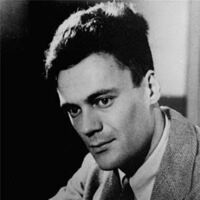
In 1917, Robert Lowell was born into one of Boston's oldest and most prominent families. He attended Harvard College for two years before transferring to Kenyon College, where he studied poetry under John Crowe Ransom and received an undergraduate degree in 1940. He took graduate courses at Louisiana State University where he studied with Robert Penn Warren and Cleanth Brooks. His first and second books, Land of Unlikeness (1944) and Lord Weary's Castle (for which he received a Pulitzer Prize in 1947, at the age of thirty), were influenced by his conversion from Episcopalianism to Catholicism and explored the dark side of America's Puritan legacy. Under the influence of Allen Tate and the New Critics, he wrote rigorously formal poetry that drew praise for its exceptionally powerful handling of meter and rhyme. Lowell was politically involved—he became a conscientious objector during the Second World War and was imprisoned as a result, and actively protested against the war in Vietnam—and his personal life was full of marital and psychological turmoil. He suffered from severe episodes of manic depression, for which he was repeatedly hospitalized. Partly in response to his frequent breakdowns, and partly due to the influence of such younger poets as W. D. Snodgrass and Allen Ginsberg, Lowell in the mid-fifties began to write more directly from personal experience, and loosened his adherence to traditional meter and form. The result was a watershed collection, Life Studies (1959), which forever changed the landscape of modern poetry, much as Eliot's The Waste Land had three decades before. Considered by many to be the most important poet in English of the second half of the twentieth century, Lowell continued to develop his work with sometimes uneven results, all along defining the restless center of American poetry, until his sudden death from a heart attack at age 60. Robert Lowell served as a Chancellor of The Academy of American Poets from 1962 until his death in 1977. Poetry Land of Unlikeness (1944) Lord Weary's Castle (1946) Poems, 1938-1949 (1950) The Mills of the Kavanaughs (1951) Life Studies (1959) Imitations (1961) For the Union Dead (1964) Selected Poems (1965) Near the Ocean (1967) The Voyage and Other Versions of Poems by Baudelaire (1968) Notebooks, 1967-1968 (1969) The Dolphin (1973) For Lizzie and Harriet (1973) History (1973) Selected Poems (1976) Day by Day (1977) Prose The Collected Prose (1987) Anthology Phaedra (1961) Prometheus Bound (1969) Drama The Old Glory (1965) References Poets.org - www.poets.org/poet.php/prmPID/10
#Americans Confessional

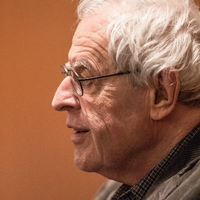
Charles Simic (born Dušan Simić; May 9, 1938) is a Serbian-American poet and was co-poetry editor of the Paris Review. He received the Pulitzer Prize for Poetry in 1990 for The World Doesn’t End, and was a finalist of the Pulitzer Prize in 1986 for Selected Poems, 1963-1983 and in 1987 for Unending Blues. He was appointed the fifteenth Poet Laureate Consultant in Poetry to the Library of Congress in 2007. Biography Early years Dušan Simić was born in Belgrade. In his early childhood, during World War II, he and his family were forced to evacuate their home several times to escape indiscriminate bombing of Belgrade. Growing up as a child in war-torn Europe shaped much of his world-view, Simic states. In an interview from the Cortland Review he said, “Being one of the millions of displaced persons made an impression on me. In addition to my own little story of bad luck, I heard plenty of others. I’m still amazed by all the vileness and stupidity I witnessed in my life.” Simic immigrated to the United States with his brother and mother in order to join his father in 1954 when he was sixteen. He grew up in Chicago. In 1961 he was drafted into the U.S. Army, and in 1966 he earned his B.A. from New York University while working at night to cover the costs of tuition. He is professor emeritus of American literature and creative writing at the University of New Hampshire, where he has taught since 1973 and lives on the shore of Bow Lake in Strafford, New Hampshire. Career He began to make a name for himself in the early to mid-1970s as a literary minimalist, writing terse, imagistic poems. Critics have referred to Simic’s poems as “tightly constructed Chinese puzzle boxes”. He himself stated: “Words make love on the page like flies in the summer heat and the poet is merely the bemused spectator.” Simic writes on such diverse topics as jazz, art, and philosophy. He is a translator, essayist and philosopher, opining on the current state of contemporary American poetry. He held the position of poetry editor of The Paris Review and was replaced by Dan Chiasson. He was elected to The American Academy of Arts and Letters in 1995, received the Academy Fellowship in 1998, and was elected a Chancellor of the Academy of American Poets in 2000. Simic was one of the judges for the 2007 Griffin Poetry Prize and continues to contribute poetry and prose to The New York Review of Books. Simic received the US$100,000 Wallace Stevens Award in 2007 from the Academy of American Poets. He was selected by James Billington, Librarian of Congress, to be the fifteenth Poet Laureate Consultant in Poetry to the Library of Congress, succeeding Donald Hall. In choosing Simic as the poet laureate, Billington cited “the rather stunning and original quality of his poetry”. In 2011, he was the recipient of the Frost Medal, presented annually for “lifetime achievement in poetry.” Awards * PEN Translation Prize (1980) * Ingram Merrill Foundation Fellowship (1983) * MacArthur Fellowship (1984–1989) * Pulitzer Prize finalist (1986) * Pulitzer Prize finalist (1987) * Pulitzer Prize for Poetry (1990) * Wallace Stevens Award (2007) * Frost Medal (2011) * Vilcek Prize in Literature (2011) * The Zbigniew Herbert International Literary Award (2014) * Golden Wreath of the Struga Poetry Evenings (2017) Bibliography References Wikipedia—https://en.wikipedia.org/wiki/Charles_Simic


James Thomson (23 November 1834– 3 June 1882), who wrote under the pseudonym Bysshe Vanolis, was a Scottish Victorian-era poet famous primarily for the long poem The City of Dreadful Night (1874), an expression of bleak pessimism in a dehumanized, uncaring urban environment. Life Thomson was born in Port Glasgow, Scotland, and, after his father suffered a stroke, he was sent to London where he was raised in an orphanage, the Royal Caledonian Asylum on Chalk (later Caledonian after the asylum) Road near Holloway. He spoke with a London accent. He received his education at the Caledonian Asylum and the Royal Military Academy and served in Ireland, where in 1851, at the age of 17, he made the acquaintance of the 18-year-old Charles Bradlaugh, who was already notorious as a freethinker, having published his first atheist pamphlet a year earlier. More than a decade later, Thomson left the military and moved to London, where he worked as a clerk. He remained in contact with Bradlaugh, who was by now issuing his own weekly National Reformer, a “publication for the working man”. For the remaining 19 years of his life, starting in 1863, Thomson submitted stories, essays and poems to various publications, including the National Reformer, which published the sombre poem which remains his most famous work. The City of Dreadful Night came about from the struggle with insomnia, alcoholism and chronic depression which plagued Thomson’s final decade. Increasingly isolated from friends and society in general, he even became hostile towards Bradlaugh. In 1880, nineteen months before his death, the publication of his volume of poetry, The City of Dreadful Night and Other Poems elicited encouraging and complimentary reviews from a number of critics, but came too late to prevent Thomson’s downward slide. Thomson’s remaining poems rarely appear in modern anthologies, although the autobiographical Insomnia and Mater Tenebrarum are well-regarded and contain some striking passages. He admired and translated the works of the pessimistic Italian poet Giacomo Leopardi (1798–1837), but his own lack of hope was darker than that of Leopardi. He is considered by some students of the Victorian age as the bleakest of that era’s poets. He died in London at the age of 47. In 1889, seven years after Thomson’s death, Henry Stephens Salt wrote his first major biography, The Life of James Thomson (B.V.). Thomson’s pseudonym, Bysshe Vanolis, derives from the names of the poets Percy Bysshe Shelley and Novalis. He is often distinguished from the earlier Scottish poet James Thomson by the letters B.V. after the name. References Wikipedia—https://en.wikipedia.org/wiki/James_Thomson_(poet,_born_1834)

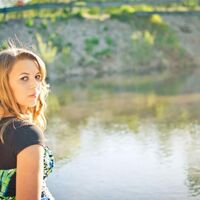
I love to write. It's as simple a fact as that. In third grade I checked out a large book of poetry and wasn't able to go back from there. Writing poetry became the outlet of the heartache of a young girl as boys broke her fragile heart. Then my "brocuz" killed himself and all those words that I had written previously felt empty. I had changed, and so my poetry changed. Writing is an expression of myself. Whether imagined or real every poem I write, every story, every word, is filled with who I am, and how I got to be who I am. Enjoy :)
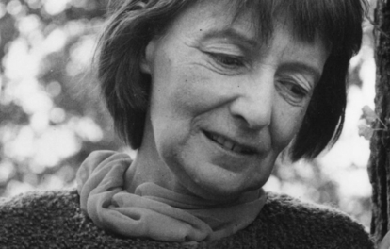
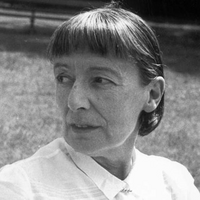
Florence Margaret Smith, known as Stevie Smith (20 September 1902– 7 March 1971) was an English poet and novelist. Life Stevie Smith, born Florence Margaret Smith in Kingston upon Hull, was the second daughter of Ethel and Charles Smith. She was called “Peggy” within her family, but acquired the name “Stevie” as a young woman when she was riding in the park with a friend who said that she reminded him of the jockey Steve Donoghue. Her father was a shipping agent, a business that he had inherited from his father. As the company and his marriage began to fall apart, he ran away to sea and Smith saw very little of her father after that. He appeared occasionally on 24-hour shore leave and sent very brief postcards ("Off to Valparaiso, Love Daddy"). When she was three years old she moved with her mother and sister to Palmers Green in North London where Smith would live until her death in 1971. She resented the fact that her father had abandoned his family. Later, when her mother became ill, her aunt Madge Spear (whom Smith called “The Lion Aunt”) came to live with them, raised Smith and her elder sister Molly and became the most important person in Smith’s life. Spear was a feminist who claimed to have “no patience” with men and, as Smith wrote, “she also had 'no patience’ with Hitler”. Smith and Molly were raised without men and thus became attached to their own independence, in contrast to what Smith described as the typical Victorian family atmosphere of “father knows best”. When Smith was five she developed tubercular peritonitis and was sent to a sanatorium near Broadstairs, Kent, where she remained for three years. She related that her preoccupation with death began when she was seven, at a time when she was very distressed at being sent away from her mother. Death and fear fascinated her and provide the subjects of many of her poems. Her mother died when Smith was 16. When suffering from the depression to which she was subject all her life she was so consoled by the thought of death as a release that, as she put it, she did not have to commit suicide. She wrote in several poems that death was “the only god who must come when he is called”. Smith suffered throughout her life from an acute nervousness, described as a mix of shyness and intense sensitivity. In the Poem “A House of Mercy”, she wrote of her childhood house in North London: It was a house of female habitation, Two ladies fair inhabited the house, And they were brave. For although Fear knocked loud Upon the door, and said he must come in, They did not let him in. Smith was educated at Palmers Green High School and North London Collegiate School for Girls. She spent the remainder of her life with her aunt, and worked as private secretary to Sir Neville Pearson with Sir George Newnes at Newnes Publishing Company in London from 1923 to 1953. Despite her secluded life, she corresponded and socialised widely with other writers and creative artists, including Elisabeth Lutyens, Sally Chilver, Inez Holden, Naomi Mitchison, Isobel English and Anna Kallin. After she retired from Sir Neville Pearson’s service following a nervous breakdown she gave poetry readings and broadcasts on the BBC that gained her new friends and readers among a younger generation. Sylvia Plath became a fan of her poetry and sent Smith a letter in 1962, describing herself as “a desperate Smith-addict.” Plath expressed interest in meeting in person but committed suicide soon after sending the letter. Smith was described by her friends as being naive and selfish in some ways and formidably intelligent in others, having been raised by her aunt as both a spoiled child and a resolutely autonomous woman. Likewise, her political views vacillated between her aunt’s Toryism and her friends’ left-wing tendencies. Smith was celibate for most of her life, although she rejected the idea that she was lonely as a result, alleging that she had a number of intimate relationships with friends and family that kept her fulfilled. She never entirely abandoned or accepted the Anglican faith of her childhood, describing herself as a “lapsed atheist”, and wrote sensitively about theological puzzles;"There is a God in whom I do not believe/Yet to this God my love stretches." Her 14-page essay of 1958, “The Necessity of Not Believing”, concludes: “There is no reason to be sad, as some people are sad when they feel religion slipping off from them. There is no reason to be sad, it is a good thing.” Smith died of a brain tumour on 7 March 1971. Her last collection, Scorpion and other Poems was published posthumously in 1972, and the Collected Poems followed in 1975. Three novels were republished and there was a successful play based on her life, Stevie, written by Hugh Whitemore. It was filmed in 1978 by Robert Enders and starred Glenda Jackson and Mona Washbourne. Fiction Smith wrote three novels, the first of which, Novel on Yellow Paper, was published in 1936. Apart from death, common subjects in her writing include loneliness; myth and legend; absurd vignettes, usually drawn from middle-class British life, war, human cruelty and religion. All her novels are lightly fictionalised accounts of her own life, which got her into trouble at times as people recognised themselves. Smith said that two of the male characters in her last book are different aspects of George Orwell, who was close to Smith. There were rumours that they were lovers; he was married to his first wife at the time. Novel on Yellow Paper (Cape, 1936) Smith’s first novel is structured as the random typings of a bored secretary, Pompey. She plays word games, retells stories from classical and popular culture, remembers events from her childhood, gossips about her friends and describes her family, particularly her beloved Aunt. As with all Smith’s novels, there is an early scene where the heroine expresses feelings and beliefs which she will later feel significant, although ambiguous, regret for. In Novel on Yellow Paper that belief is anti-Semitism, where she feels elation at being the “only Goy” at a Jewish party. This apparently throwaway scene acts as a timebomb, which detonates at the centre of the novel when Pompey visits Germany as the Nazis are gaining power. With horror, she acknowledges the continuity between her feeling “Hurray for being a Goy” at the party and the madness that is overtaking Germany. The German scenes stand out in the novel, but perhaps equally powerful is her dissection of failed love. She describes two unsuccessful relationships, first with the German Karl and then with the suburban Freddy. The final section of the novel describes with unusual clarity the intense pain of her break-up with Freddy. Over the Frontier (Cape, 1938) Smith herself dismissed her second novel as a failed experiment, but its attempt to parody popular genre fiction to explore profound political issues now seems to anticipate post-modern fiction. If anti-Semitism was one of the key themes of Novel on Yellow Paper, Over the Frontier is concerned with militarism. In particular, she asks how the necessity of fighting Fascism can be achieved without descending into the nationalism and dehumanisation that fascism represents. After a failed romance the heroine, Pompey, suffers a breakdown and is sent to Germany to recuperate. At this point the novel changes style radically, as Pompey becomes part of an adventure/spy yarn in the style of John Buchan or Dornford Yates. As the novel becomes increasingly dreamlike, Pompey crosses over the frontier to become a spy and soldier. If her initial motives are idealistic, she becomes seduced by the intrigue and, ultimately, violence. The vision Smith offers is a bleak one: “Power and cruelty are the strengths of our lives, and only in their weakness is there love.” The Holiday (Chapman and Hall, 1949) Smith’s final novel is her own favourite, and most fully realised. It is concerned with personal and political malaise in the immediate post-war period. Most of the characters are either employed in the army or civil service in post-war reconstruction, and its heroine, Celia, works for the Ministry as a cryptographer and propagandist. The Holiday describes a series of hopeless relationships. Celia and her cousin Caz are in love, but cannot pursue their affair since it is believed that, because of their parents’ adultery, they are half-brother and sister. Celia’s other cousin Tom is in love with her, Basil is love with Tom, Tom is estranged from his father, Celia’s beloved Uncle Heber, who pines for a reconciliation; and Celia’s best friend Tiny longs for the married Vera. These unhappy, futureless but intractable relationships are mirrored by the novel’s political concerns. The unsustainability of the British Empire and the uncertainty over Britain’s post-war role are constant themes, and many of the characters discuss their personal and political concerns as if they were seamlessly linked. Caz is on leave from Palestine and is deeply disillusioned, Tom goes mad during the war, and it is telling that the family scandal that blights Celia and Caz’s lives took place in India. Just as Pompey’s anti-semitism was tested in Novel on Yellow Paper, so Celia’s traditional nationalism and sentimental support for colonialism is challenged throughout The Holiday. Poetry Smith’s first volume of poetry, the self-illustrated A Good Time Was Had By All, was published in 1937 and established her as a poet. Soon her poems were found in periodicals. Her style was often very dark; her characters were perpetually saying “goodbye” to their friends or welcoming death. At the same time her work has an eerie levity and can be very funny though it is neither light nor whimsical. “Stevie Smith often uses the word 'peculiar’ and it is the best word to describe her effects” (Hermione Lee). She was never sentimental, undercutting any pathetic effects with the ruthless honesty of her humour. “A good time was had by all” itself became a catch phrase, still occasionally used to this day. Smith said she got the phrase from parish magazines, where descriptions of church picnics often included this phrase. This saying has become so familiar that it is recognised even by those who are unaware of its origin. Variations appear in pop culture, including “Being for the Benefit of Mr. Kite!” by the Beatles. Though her poems were remarkably consistent in tone and quality throughout her life, their subject matter changed over time, with less of the outrageous wit of her youth and more reflection on suffering, faith and the end of life. Her best-known poem is “Not Waving but Drowning”. She was awarded the Cholmondeley Award for Poets in 1966 and won the Queen’s Gold Medal for poetry in 1969. She published nine volumes of poems in her lifetime (three more were released posthumously).
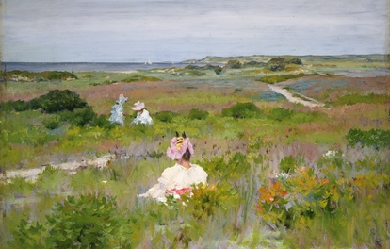

Elinor Morton Wylie (September 7, 1885– December 16, 1928) was an American poet and novelist popular in the 1920s and 1930s. “She was famous during her life almost as much for her ethereal beauty and personality as for her melodious, sensuous poetry.” Elinor was born Elinor Morton Hoyt in Somerville, New Jersey, into a socially prominent family. Her grandfather, Henry M. Hoyt, was a governor of Pennsylvania. Her aunt was Helen Hoyt, a minor poet. Her parents were Henry Martyn Hoyt, Jr., who would be United States Solicitor General from 1903 to 1909; and Anne Morton McMichael (born July 31, 1861 in Pa.).

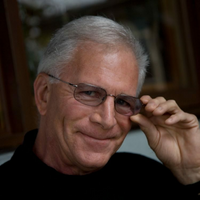
Michael Palmer (born May 11, 1943) is an American poet and translator. He attended Harvard University where he earned a BA in French and an MA in Comparative Literature. He has worked extensively with Contemporary dance for over thirty years and has collaborated with many composers and visual artists. Palmer has lived in San Francisco since 1969. Palmer is the 2006 recipient of the Wallace Stevens Award from the Academy of American Poets. This $100,000 (US) prize recognizes outstanding and proven mastery in the art of poetry. Beginnings Michael Palmer began actively publishing poetry in the 1960s. Two events in the early sixties would prove particularly decisive for his development as a poet. First, he attended the now famous Vancouver Poetry Conference in 1963. This July–August 1963 Poetry Conference in Vancouver, British Columbia spanned three weeks and involved about sixty people who had registered for a program of discussions, workshops, lectures, and readings designed by Warren Tallman and Robert Creeley as a summer course at the University of B.C. There Palmer met writers and artists who would leave an indelible mark on his own developing sense of a poetics, especially Robert Duncan, Robert Creeley, and Clark Coolidge, with whom he formed lifelong friendships. It was a landmark moment as Robert Creeley observed: Vancouver Poetry Conference brought together for the first time, a decisive company of then disregarded poets such as Denise Levertov, Charles Olson, Allen Ginsberg, Robert Duncan, Margaret Avison, Philip Whalen... together with as yet unrecognised younger poets of that time, Michael Palmer, Clark Coolidge and many more.” Palmer’s second initiation into the rites of a public poet began with the editing of the journal Joglars with fellow poet Clark Coolidge. Joglars (Providence, Rhode Island) numbered just three issues in all, published between 1964–66, but extended the correspondence with fellow poets begun in Vancouver. The first issue appeared in Spring 1964 and included poems by Gary Snyder, Michael McClure, Fielding Dawson, Jonathan Williams, Lorine Niedecker, Robert Kelly, and Louis Zukofsky. Palmer published five of his own poems in the second number of Joglars, an issue that included work by Larry Eigner, Stan Brakhage, Russell Edson, and Jackson Mac Low. For those who attended the Vancouver Conference or learned about it later on, it was apparent that the poetics of Charles Olson, proprioceptive or Projectivist in its reach, was exerting a significant and lasting influence on the emerging generation of artists and poets who came to prominence in the 1950s and 1960s. Subsequent to this emerging generation of artists who felt Olson’s impact, poets such as Robert Creeley and Robert Duncan would in turn exert their own huge impact on our national poetries (see also: Black Mountain poets and San Francisco Renaissance). Of this particular company of poets encountered in Vancouver, Palmer says: ...before meeting that group of poets in 1963 at the Vancouver Poetry Conference, I had begun to read them intensely, and they proposed alternatives to the poets I was encountering at that time at Harvard, the confessional poets, whose work was grounded to a greater or lesser degree in New Criticism, at least those were their mentors. The confessional poets struck me as people absolutely lusting for fame, all of them, and they were all trying to write great lines. Early development of poetry and poetics Following the Vancouver Conference, Robert Duncan and Robert Creeley remained primary resources. Both poets had a lasting, active influence on Palmer’s work which has extended until the present. In an essay, “Robert Duncan and Romantic Synthesis” (see 'External links’ below), Palmer recognizes that Duncan’s appropriation and synthesis of previous poetic influences was transformed into a poetics noted for “exploratory audacity... the manipulation of complex, resistant harmonies, and by the kinetic idea of ”composition by field", whereby all elements of the poem are potentially equally active in the composition as 'events’ of the poem". And if this statement marks a certain tendency readers have noted in Palmer’s work all along, or remains a touchstone of sorts, we sense that from the beginning Palmer has consistently confronted not only the problem of subjectivity and public address in poetry, but the specific agency of Poetry and the relationship between poetry and the political: "The implicit... question has always concerned the human and social justification for this strange thing, poetry, when it is not directly driven by the political or by some other, equally other evident purpose [...] Whereas the significant artistic thrust has always been toward artistic independence within the world, not from it.” So for Michael Palmer, this tendency seems there from the beginning. Today these concerns continue through multiple collaborations across the fields of poetry, dance, translation, and the visual arts. Perhaps similar to Olson’s impact on his generation, Palmer’s influence remains singular and palpable, if difficult to measure. Since Olson’s death in 1970, we continue to be, following upon George Oppen’s phrase, carried into the incalculable, As Palmer recently noted in a blurb for Claudia Rankine’s poetic testament Don’t Let Me Be Lonely (2004), ours is “a time when even death and the self have been re-configured as commodities”. Work Palmer is the author of twelve full-length books of poetry, including Thread (2011), Company of Moths (2005) (shortlisted for the 2006 Canadian Griffin Poetry Prize), Codes Appearing: Poems 1979-1988 (2001), The Promises of Glass (2000), The Lion Bridge: Selected Poems 1972-1995 (1998), At Passages (1996), Sun (1988), First Figure (1984), Notes for Echo Lake (1981), Without Music (1977), The Circular Gates (1974), and Blake’s Newton (1972). A prose work, The Danish Notebook, was published in 1999. In the spring of 2007, a chapbook, The Counter-Sky (with translations by Koichiro Yamauchi), was published by Meltemia Press of Japan, to coincide with the Tokyo Poetry and Dance Festival. His work has appeared in literary magazines such as Boundary 2, Berkeley Poetry Review, Sulfur, Conjunctions, Grand Street and O-blek. Besides the 2006 Wallace Stevens Award, Michael Palmer’s honors include two grants from the Literature Program of the National Endowment for the Arts. In 1989-90 he was a Guggenheim Fellow. During the years 1992–1994 he held a Lila Wallace-Reader’s Digest Fund Writer’s Award. From 1999 to 2004, he served as a Chancellor of the Academy of American Poets. In the spring of 2001 he received the Shelly Memorial Prize Prize from the Poetry Society of America. Introducing Palmer for a reading at the DIA Arts Center in 1996, Brighde Mullins noted that Palmer’s poetics is both “situated yet active”. Palmer alludes to this himself, perhaps, when he speaks of poetry signaling a “site of passages”. He says, “The space of the page is taken as a site in itself, a syntactical and visual space to be expressively exploited, as was the case with the Black Mountain poets, as well as writers such as Frank O’Hara, perhaps partly in response to gestural abstract painting.” Elsewhere he observes that “in our reading we have to rediscover the radical nature of the poem.” In turn, this becomes a search for “the essential place of lyric poetry” as it delves “beneath it to its relationship with language”. Since he seems to explore the nature of language and its relation to human consciousness and perception, Palmer is often associated with the Language poets (sometimes referred to as the L=A=N=G=U=A=G=E poets, after the magazine that bears that name). Of this particular association, Palmer comments in a recent (2000) interview: It goes back to an organic period when I had a closer association with some of those writers than I do now, when we were a generation in San Francisco with lots of poetic and theoretical energy and desperately trying to escape from the assumptions of poetic production that were largely dominant in our culture. My own hesitancy comes when you try to create, let’s say, a fixed theoretical matrix and begin to work from an ideology of prohibitions about expressivity and the self—there I depart quite dramatically from a few of the Language Poets. Critical reception Michael Palmer’s poetry has received both praise and criticism over the years. Some reviewers call it abstract. Some call it intimate. Some call it allusive. Some call it personal. Some call it political. And some call it inaccessible. While some reviewers or readers may value Palmer’s work as an “extension of modernism”, they criticize and even reject Palmer’s work as discordant: an interruption of our composure (to invoke Robert Duncan’s phrase). Palmer’s own stated poetics will not allow or settle for “vanguard gesturalism”. In a singular confrontion with the modernist project, the poet must suffer 'loss’, embrace disturbance and paradox, and agonize over what cannot be accounted for. It is a poetry that can, at once, gesture toward post-modern, post-avant-garde, semiotic concerns even as it acknowledges that ...the artist after Dante’s poetics, works with all parts of the poem as polysemous, taking each thing of the composition as generative of meaning, a response to and a contribution to the building form.[...]But this putting together and rendering anew operates in our own apprehension of emerging articulations of time. Every particular is an immediate happening of meaning at large; every present activity in the poem redistributes future as well as past events. This is a presence extended in a time we create as we keep words in mind.” We can recognize that the “weary beauty” of Palmer’s work bespeaks the tension and accord he offers toward the Modernists and the vanguardists, even as he is seeking to maintain or at least continue to search for an ethics of the I/Thou. It is an awkward truce we make with modernism when there is no cessation of hostilities. But sometimes in reading Palmer’s work we recognize (almost against ourselves) a poetry that is described as surreal in context and contour, livid in aural accomplishment, but all the while confronts the reader with a poetics both active and situated. And if Palmer is sometimes praised for this, more often than not he is criticized, rebuked, vilified and dismissed (just as Paul Celan was) for hermeticism, deliberate obscurity, and bogus erudition. Palmer admits to a stated “essential errancy of discovery in the poem” that would not necessarily be a “unified narrative explanation of the self”, but would allow for itself “cloaked meaning and necessary semantic indirection” Confrontation with Modernism He remains candid about the giants of modernism: i.e., Yeats, Eliot and Pound. Whether it is the fascism of Ezra Pound or the less overt but no less insidious anti-semitism found in the work of T. S. Eliot, Palmer’s position is a fierce rejection of their politics, but qualified with the acknowledgment that, as Marjorie Perloff has observed of Pound, “he remains the great inventor of the period, the poet who really MADE THINGS NEW”. Thus, Palmer decries that what remains for us is something quite harrowing “inscribed at the heart of modernism”. Perhaps we can invoke one of Palmer’s real 'heroes’, Antonio Gramsci, and say here, now, what precisely has been inscribed over against what today (in the vicious circles of media and cultural production) is merely forecast as cultural hegemony. So if Palmer, on the one hand, variously describes or defines an Ideology as that which “invades the field of meaning”, we recognize not only in Pound or Eliot, but now as if against ourselves, that ideology implicitly deploys values and premises that must remain unspoken in order for them to function as ideology or to remain hidden in plain sight, as such. At some point we can invoke the 'post-ideological’ stance of Slavoj Žižek who, after Althusser, jettisons the Marxist equation: ideology=false consciousness and say that, perhaps Ideology, to all intents and purposes, IS consciousness. As a way out of this seeming double-bind, or to his admissions that poetry is, as Pound observed, “news that stays news”, that it remains an active and viable (or “actively situated”) principle within the social dynamic, critics and readers alike point to Palmer’s own avowals of an emerging countertradition to the prevailing literary establishment: an 'alternative tradition’ that just slipped under the radar as far as the Academy and its various 'schools’ of poetry are concerned. Though not always so visible, this counter-tradition continues to exert an underground influence. Poetry, as critique or praise, can perhaps in its reach exceed the grasp of modernism and procure for us as visible again, that which is all or nothing except for the 'ghostlier demarcations’ of the social wager within sight of the shipwreck of the singular (as George Oppen characterized it) which denotes or delimits the very idea of the social, if not the very idea that there is a definition of the social other than this: the community of those who have no community. Indeed, the unavowable community (to borrow a title and phrasing from Maurice Blanchot). Faced with shipwreck, “in the dark” amidst the ravished heresies of the unspoken as even against silence itself, we can think with the poem. With fierce determination or graceful adherence we can perhaps even “see” with the poem, account for its usefulness. Even as we use the language, attend to its fissures and abhorrences, language in turn uses us, or has its own uses for us, as Palmer attests: Palmer has repeatedly stated, in interviews and in various talks given across the years, that the situation for the poet is paradoxical: a seeing which is blind, a “nothing you can see”, an “active waiting”, “purposive, sometimes a music”, or a “nowhere” that is "now / here". For Palmer, it is a situation which is never over, and yet it mysteriously starts up again each day, as if describing a circle. Poetry can “interrogate the radical and violent instability of our moment, asking where is the location of culture, where the site of self, selves, among others” (as Palmer has characterized the poetry of Myung Mi Kim). Collaborations Palmer has published translations from French, Russian and Brazilian Portuguese, and has engaged in multiple collaborations with painters. These include the German painter Gerhard Richter, French painter Micaëla Henich, and Italian painter Sandro Chia. He edited and helped translate Nothing The Sun Could Not Explain: Twenty Contemporary Brazilian Poets (Sun & Moon Press, 1997). With Michael Molnar and John High, Palmer helped edit and translate a volume of poetry by the Russian poet Alexei Parshchikov, Blue Vitriol (Avec Books, 1994). He also translated “Theory of Tables” (1994), a book written by Emmanuel Hocquard, a project that grew out of Hocquard’s translations of Palmer’s “Baudelaire Series” into French. Palmer has written many radio plays and works of criticism. But his lasting significance occurs as the singular concerns of the artist extend into the aleatory, the multiple, and the collaborative. Dance For more than thirty years he has collaborated on over a dozen dance works with Margaret Jenkins and her Dance Company. Early dance scenarios in which Palmer participated include Interferences, 1975; Equal Time, 1976; No One but Whitington, 1978; Red, Yellow, Blue, 1980, Straight Words, 1980; Versions by Turns, 1980; Cortland Set, 1982; and First Figure, 1984. A particularly noteworthy example of a recent Jenkins/Palmer collaboration would be The Gates (Far Away Near), an evening-length dance work in which Palmer worked with not only Ms. Jenkins, but also Paul Dresher and Rinde Eckert. This was performed in September 1993 in the San Francisco Bay Area and in July 1994 at New York’s Lincoln Center. Another recent collaboration with Jenkins resulted in “Danger Orange”, a 45-minute outdoor site-specific performance, presented in October 2004 before the Presidential elections. The color orange metaphorically references the national alert systems that are in place that evoke the sense of danger.[see also:Homeland Security Advisory System] Painters and visual artists Similar to his friendship with Robert Duncan and the painter Jess Collins, Palmer’s work with painter Irving Petlin remains generative. Irving’s singular influence from the beginning demonstrated for Palmer a “working” of the poet as “maker” (in the radical sense, even ancient sense of that word). Along with Duncan, Zukofsky, and others, Petlin’s work modeled, demonstrated, circumscribed and, perhaps most importantly for Palmer, verified that “the way” (this way for the artist who is a maker, a creator) would also be, as Gilles Deleuze termed it, “a life”. This in turn delineates Palmer’s own sense of both a poetics and an ongoing counter-poetic tradition, offering him fixture and a place of repair. Recently he worked with painter and visual artist Augusta Talbot, and curated her exhibition at the CUE Art Foundation (March 17 –April 23, 2005). When asked in an interview how collaboration has pushed the boundaries of his work, Palmer responded: There were a variety of influences. One was that, when I was using language—but even when I wasn’t, when I was simply envisioning a structure, for example—I was working with the idea of actual space. Over time, my own language took on a certain physicality or gestural character that it hadn’t had as strongly in the earliest work. Margy (Margaret Jenkins) and I would often work with language as gesture and gesture as language—we would cross these two media, have them join at some nexus. And inevitably then, as I brought certain characteristics of my work to dance, and to dance structure and gesture, it started crossing over into my work. It added space to the poems. It may be that for Palmer, friendship (acknowledging both the multiple and collaborative), becomes in part what Jack Spicer terms a “composition of the real”. Across the fields of painting and dance, Palmer’s work figures as an “unrelenting tentacle of the proprioceptive”. Furthermore, it may signal a Coming Community underscored in the work of Giorgio Agamben, Jean-Luc Nancy and Maurice Blanchot among others. It is a poetry that would, along with theirs, articulate a place for, even spaces where, both the “poetic imaginary” is constituted and a possible social space is envisioned. As Jean-Luc Nancy has written in The Inoperative Community (1991): “These places, spread out everywhere, yield up and orient new spaces... other tracks, other ways, other places for all who are there.” Bibliography Poetry * Plan of the City of O, Barn Dreams Press (Boston, Massachusetts), 1971. * Blake’s Newton, Black Sparrow Press (Santa Barbara, California), 1972. * C’s Songs, Sand Dollar Books (Berkeley, California), 1973. * Six Poems, Black Sparrow Press (Santa Barbara, California), 1973. * The Circular Gates, Black Sparrow Press (Santa Barbara, California), 1974. * (Translator, with Geoffrey Young) Vicente Huidobro, Relativity of Spring: 13 Poems, Sand Dollar Books (Berkeley, California), 1976. * Without Music, Black Sparrow Press (Santa Barbara, California), 1977. * Alogon, Tuumba Press (Berkeley, California), 1980. * Notes for Echo Lake, North Point Press (Berkeley, California), 1981. * (Translator) Alain Tanner and John Berger, Jonah Who Will Be 25 in the Year 2000, North Atlantic Books (Berkeley, California), 1983. * First Figure, North Point Press (Berkeley, California), 1984. * Sun, North Point Press (Berkeley, California), 1988. * At Passages, New Directions (New York, New York), 1995. * The Lion Bridge: Selected Poems, 1972-1995, New Directions (New York, New York), 1998. * The Promises of Glass, New Directions (New York, New York), 2000. * Codes Appearing: Poems, 1979-1988, New Directions (New York, New York), 2001. Notes for Echo Lake, First Figure, and Sun together in one volume. ISBN 978-0-8112-1470-4 * (With Régis Bonvicino) Cadenciando-um-ning, um samba, para o outro: poemas, traduções, diálogos, Atelieì Editorial (Cotia, Brazil), 2001. * Company of Moths, New Directions (New York, New York), 2005. ISBN 978-0-8112-1623-4 * Aygi Cycle, Druksel (Ghent, Belgium), 2009 (chapbook with 10 new poems, inspired by the Russian poet Gennadiy Aygi. * (With Jan Lauwereyns) Truths of Stone, Druksel (Ghent, Belgium), 2010. * Thread, New Directions (New York, New York), 2011. ISBN 978-0-8112-1921-1 * The Laughter of the Sphinx, New Directions (New York, New York), 2016. ISBN 978-0-8112-2554-0 Other * Idem 1-4 (radio plays), 1979. * (Editor) Code of Signals: Recent Writings in Poetics, North Atlantic Books (Berkeley, California), 1983. * The Danish Notebook, Avec Books (Penngrove, California), 1999—prose/memoir * Active Boundaries: Selected Essays and Talks, New Directions (New York, New York), 2008. ISBN 0-8112-1754-X External links Palmer sites and exhibits * Exhibit at The Academy of American Poets includes links to on-line poems by Palmer not listed below * Modern American Poetry site * Author Page at Internationales Literatufestival Berlin site (in English) Palmer was a guest of the ILB (Internationales Literatufestival Berlin/ Germany) in 2001 and 2005. * An internet bibliography for Michael Palmer from LiteraryHistory.com Poems * “Dream of a Language That Speaks” a poem from Company of Moths (2005) @ Jacket Magazine site * “Scale” first published in Richter 858 (ed. David Breskin, The Shifting Foundation, SF MOMA: San Francisco Museum of Modern Art); included in Company of Moths * "Autobiography 3" & Autobiography 5" two poems from Conjunctions magazine’s on-line archive; included in The Promises of Glass (2000) * To the Title (Are there titles?) included in Jacket Magazine 33 * four poems from Thread from Boston Review’s March/April 2010 issue * Late Night Poetry @ Tony Bilson’s Number One: Palmer reads “The Dream of Narcissus” on YouTube Video of Palmer at the 2010 Sydney (Australia) Writers Festival. * Michael Palmer reads Mahmoud Darwish’s “The Strangers’ Picnic” on YouTube Video of Palmer reading a poem from Mahmoud Darwish’s collection Unfortunately, It Was Paradise: Selected Poems * Michael Palmer, Paul Hoover with the poetry of Maria Baranda - September 27, 2015– Palmer reads from his book Thread and from his forthcoming collection The Laughter of the Sphinx. He also reads a single poem from his collection The Company of Moths. Selected essays and talks * Period (senses of duration) this is a version of a talk Palmer gave in San Francisco in February 1982. Scroll down to “Table of Contents” to find the Palmer selection. Here it appears in an e-book representation of Code of Signals (which Palmer edited in 1983, with the subtitle “Recent Writings in Poetics”). * On Robert Duncan reprint of Palmer’s essay “Robert Duncan and Romantic Synthesis” * Michael Palmer audio-files at PENNsound * “On the Sustaining of Culture in Dark Times” text of Palmer’s keynote address given at the 3rd Annual Sustainable Living Conference at Evergreen State College in February 2004 * “Ground Work: On Robert Duncan” Michael Palmer’s “Introduction” to a combined edition of Ground Work: Before the War, and Ground Work II: In the Dark, published by New Directions in April 2006. * Lunch Poems reading by Michael Palmer: Webcast Held on October 5, 2006, in the Morrison Library, University of California at Berkeley: webcast online * “In Company: On Artistic Collaboration and Solitude” This is the title of the lecture/talk that Palmer gave, along with a poetry reading, at the University of Chicago in October 2006. (In audio & video format) * Bad to the bone: What I learned outside Lecture & Talk given in June 2002, when Palmer taught for a brief stint at the Jack Kerouac School of Disembodied Poetics at Naropa in Boulder, Colorado * Poetic Obligations (Talking about Nothing at Temple) This is a talk Palmer gave at Temple University in February 1999, and was originally published in Fulcrum: An annual of poetry and aesthetics (Issue 2, 2003). * Poetry and Contingency: Within a Timeless Moment of Barbaric Thought essay/talk originally published in the Chicago Review (June, 2003) Interviews with Palmer * The River City Interview conducted by Paul Naylor, Lindsay Hill, and J. P. Craig; appeared in 1994. * An Interview with Michael Palmer by Robert Hicks in 2006 * Interview at Berkeley Daily Planet: April 7, 2006 discusses a reading Palmer & Douglas Blazek gave together at Moe’s, a bookstore in Berkeley, California; includes interviews * Interview with Michael Palmer an interview conducted at Washington University in St. Louis in 2008 by the student editors of “Arch Literary Journal” in conjunction with a talk and reading Palmer gave at the school. Includes an introductory essay by one of the editors, Lawrence Revard, “'What Reading?': Play in Michael Palmer’s Poetics” * “An interview with Michael Palmer”. Litshow.com. 2013-02-13. Retrieved 2013-04-23. Others on Palmer * Margaret Jenkins Dance Company info on both Palmer & his collaborators in their on-going work with Dance * Lauri Ramey:"Michael Palmer: The Lion Bridge" Ramey wrote a doctoral dissertation on Palmer, and here reviews his “Selected Poems” * A Collision of “Possible Worlds” A 2002 review of The Promises of Glass by Michael Dowdy @Free Verse website * A review of Company of Moths a book review of Palmer’s 2005 collection * Griffin Poetry Prize biography, including audio and video clips Palmer was shortlisted for this prize in 2006 * Margaret Jenkins Dance Company’s “A Slipping Glimpse” 2006 dance piece in collaboration with Tanushree Shankar Dance School & the text by Palmer * Cultural camaraderie article from Hindustantimes.com on the dance performance A Slipping Glimpse. Article discusses Palmer’s collaboration (includes quotes) * Palmer is Spring 2007 Writer in Residence press release from California College of the Arts * Michael Palmer (Six Introductions) a brief essay by Clayton Eshleman who edited Sulfur magazine, for which Palmer served as a contributing editor. * Hands Across Many Seas: From San Francisco and India, a dance collaboration article by Deborah Jowitt on “A Slipping Glimpse”, performed by the Margaret Jenkins Dance Company at the “Danspace Project” at Saint Mark’s Church, October 4 through 6, 2007 * Lyric Persuasions at Poets House Rae Armantrout and Zoketsu Norman Fischer discuss Michael Palmer’s work as recorded by Vasiliki Katsarou at the Poet’s House in the Spring of 2010 References Wikipedia—https://en.wikipedia.org/wiki/Michael_Palmer_(poet)
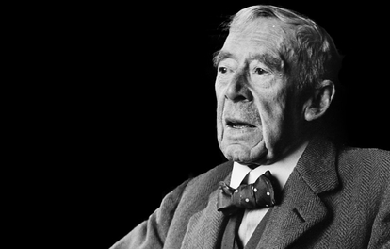
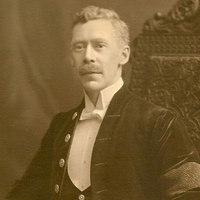
Sir Arthur Thomas Quiller-Couch (21 November 1863 – 12 May 1944) was a Cornish writer who published using the pseudonym Q. Although a prolific novelist, he is remembered mainly for the monumental publication The Oxford Book Of English Verse 1250–1900 (later extended to 1918) and for his literary criticism. He influenced many who never met him, including American writer Helene Hanff, author of 84, Charing Cross Road and its sequel, Q’s Legacy. His Oxford Book of English Verse was a favourite of John Mortimer’s fictional character Horace Rumpole.
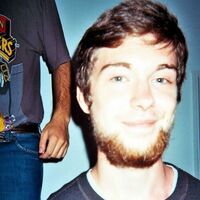
Alexandre is a musician, poet, and philosopher with a deep interest in the mystical, magickal, and occult. While he has been playing music ever since he was 3 years old, his interest in mysticism and poetry came about from the study of philosophy. Beginning in college with the standard western philosophers such as Plato, Kant, Descartes, and Nietzsche, he realized that there was still much more in the realm of wisdom to be explored. Reading about Zen, Taoism, and Cabala instilled an appreciation of simple, poetic verse as a way of communicating wisdom, and led him to the study of the magickal system of Aleister Crowley, known as Thelema, from where he draws much of his inspiration.
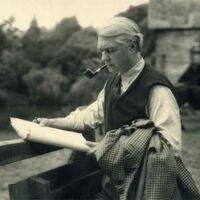
John Drinkwater (1 June 1882 – 25 March 1937) was an English poet and dramatist. Drinkwater was born in Leytonstone, London, and worked as an insurance clerk. In the period immediately before the First World War he was one of the group of poets associated with the Gloucestershire village of Dymock, along with Rupert Brooke and others. In 1919 he had his first major success with his play Abraham Lincoln. He followed it with others in a similar vein, including Mary Stuart and Oliver Cromwell. In 1924, his Lincoln play was adapted for a two-reel short film made by Lee DeForest and J. Searle Dawley featuring Frank McGlynn Sr. as Lincoln, and made in DeForest's Phonofilm sound-on-film process. He had published poetry since The Death of Leander in 1906; the first volume of his Collected Poems was published in 1923. He also compiled anthologies and wrote literary criticism (e.g. Swinburne: an estimate (1913)), and later became manager of Birmingham Repertory Theatre. He was married to Daisy Kennedy, the ex-wife of Benno Moiseiwitsch. Papers relating to John Drinkwater and collected by his stepdaughter are held at the University of Birmingham Special Collections. John Drinkwater made recordings in Columbia Records' International Educational Society Lecture series. They include Lecture 10 – a lecture on The Speaking of Verse (Four 78rpm sides, Cat no. D 40018-40019), and Lecture 70 John Drinkwater reading his own poems (Four 78rpm sides, Cat no. D 40140-40141). Death and commemoration Drinkwater died in London in 1937. He is buried at Piddington, Oxfordshire, where he had spent summer holidays as a child. A road in Leytonstone, formerly a 1960s council estate, is named after Drinkwater, as is a small development of modern houses in Piddington. References Wikipedia – en.wikipedia.org/wiki/John_Drinkwater_(playwright)

I remember my mothers words before the first day of school in 1st, 2nd, 3rd, 4th, and 5th grade. “it will be ok. This is a new year. Just be yourself” but back then I didn't have a self, No personality at all. and somewhere along the time that I started to get one, the phrase “just be yourself” started to die and what came as a replacement was “don't be this” “don't be like that” “don't wear this” “suck in your stomach like that” and so I began to write poetry.
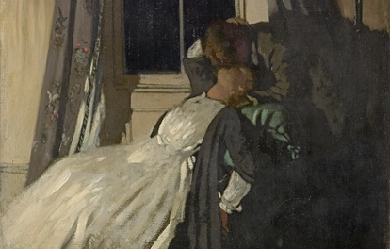
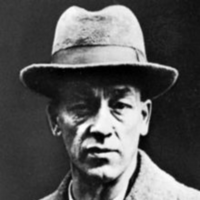
James Stephens (9 February 1880– 26 December 1950) was an Irish novelist and poet. He produced many retellings of Irish myths and fairy tales. His retellings are marked by a rare combination of humour and lyricism (Deirdre, and Irish Fairy Tales are often especially praised). He also wrote several original novels (The Crock of Gold, Etched in Moonlight, Demi-Gods) based loosely on Irish fairy tales. The Crock of Gold in particular has achieved enduring popularity and has often been reprinted.


Bruce Jun Fan Lee was born in the hour of the Dragon, between 6 and 8 a.m., in the year of the Dragon on November 27, 1940 at the Jackson Street Hospital in San Francisco’s Chinatown. Today, a plaque in the hospital’s entry commemorates the place of his birth. Bruce’s birth, in the hour and the year of the Dragon, is a powerful symbol in Chinese astrology. It would be a strong omen of the powerful life that was to be lived by Bruce Lee and the explosive impact his life would have on countless others. Bruce was the fourth child born to Lee Hoi Chuen and his wife Grace Ho. He had two older sisters, Phoebe and Agnes, an older brother, Peter, and a younger brother, Robert. Lee Hoi Chuen was, by profession, a comedian in the Chinese opera and an actor in Cantonese films. At the time Bruce was born, Mr. and Mrs. Lee were on tour with the opera company in the United States. Thus, it was fortuitous for Bruce’s future that his birth took place in America, as he would return 18 years later to claim his birthright of American citizenship. Bruce’s parents gave him the name “Jun Fan.” Since it is Chinese custom to put the surname first, Bruce’s full name is written Lee Jun Fan. The true meaning of Jun Fan deserves an explanation as it, too, would foretell the journey of the newly born Lee son. Literally, JUN means “to arouse to the active state” or “to make prosperous.” It was a common middle name used by Hong Kong Chinese boys in those days, understandably because China and the Chinese people were very vulnerable at that time, and everyone, including Bruce’s parents, wanted the “sleeping lion of the East” to wake up. The FAN syllable refers to the Chinese name for San Francisco, but its true meaning is “fence of a garden” or “bordering subordinate countries of a big country.” During the period of the Ching Dynasty (1644-1911), many Chinese immigrated to Hawaii and San Francisco as laborers, and the implication became that the United States was FAN of the Great Ching Empire. Thus the true meaning of Bruce’s name--JUN FAN--was “to arouse and make FAN (the United States) prosperous.” The gut feeling of many Chinese at that time, who felt suppressed by and inferior to foreign powers, was that they wished to outshine the more superior countries and regain the Golden Age of China. Bruce’s parents wanted Bruce to have his name shine and shake the foreign countries, which he certainly succeeded in doing. The English name, BRUCE, was given to the baby boy by a nurse in the Jackson Street Hospital although he was never to use this name until he entered secondary school and began his study of the English language. The story goes that on the first day of English class, the students were asked to write down their English names, and Bruce, not knowing his name, copied the name of the student next to him. His family almost never used the name Bruce, especially in his growing up years when his nickname in the family was “SAI FON,” which literally means Little Peacock. This is a girl’s nickname, but in being applied to Bruce, it had a serious purpose. The first-born child of Mr. and Mrs. Lee had been a boy who did not survive infancy. Their belief was that if the gods did not favor the birth of a male child, the babe might be taken away. Thus, the name, Little Peacock, was used as a ruse to fool the gods into thinking that Bruce was a girl. It was a term of great affection within the family circle. At the age of three months, Lee Hoi Chuen, his wife Grace and baby Bruce returned to Hong Kong where Bruce would be raised until the age of 18. Probably because of the long ocean voyage and the change in climates, Bruce was not a strong child in his very early years, a condition that would change when he took up the study of gung fu at the age of 13. (Bruce always spelled his Chinese martial art as GUNG FU, which is the Cantonese pronunciation of the more commonly spelled Kung Fu, a Mandarin pronunciation.) Bruce’s most prominent memory of his early years was the occupation of Hong Kong by the Japanese during the World War II years (1941-1945). The residence of the Lee family was a flat at 218 Nathan Road in Kowloon directly across the street from the military encampment of the Japanese. Bruce’s mother often told the story of young Bruce, less than 5 years old, leaning precariously off the balcony of their home raising his fist to the Japanese Zeros circling above. Another nickname the family often applied to Bruce was “Mo Si Ting” which means “never sits still” and aptly described his personality. The Japanese occupation was Bruce’s first prescient memory, but Hong Kong had been a British Crown Colony since the late 1800’s. The English returned to power at the end of the war. It is not hard to see why young Bruce would have rebellious feelings toward foreign usurpation of his homeland. In his teenage years Bruce was exposed to the common practice of unfriendly taunting by English school boys who appeared to feel superior to the Chinese. It is not surprising that Bruce and his friends retaliated by returning the taunts and sometimes getting into fights with the English boys. This atmosphere laid the background for Bruce to begin his study of martial arts. At the age of 13, Bruce was introduced to Master Yip Man, a teacher of the Wing Chun style of gung fu. For five years Bruce studied diligently and became very proficient. He greatly revered Yip Man as a master teacher and wise man and frequently visited with him in later years. When he first took up gung fu, he used his new skills to pummel his adversaries, but it did not take long for Bruce to learn that the real value of martial arts training is that the skills of physical combat instill confidence to the point that one does not feel the constant need to defend one’s honor through fighting. In high school, Bruce, now no longer a weak child, was beginning to hone his body through hard training. One of his accomplishments was winning an interschool Boxing Championship against an English student in which the Marquis of Queensbury rules were followed and no kicking was allowed. Given the graceful movements, which would later be spectacularly displayed in his films, it is no surprise that Bruce was also a terrific dancer, and in 1958 he won the Hong Kong Cha Cha Championship. He studied dancing as assiduously as he did gung fu, keeping a notebook in which he had noted 108 different cha cha steps. It is easy to see that Bruce possessed the traits of self-discipline and hard work which would later hold him in good stead, even though at this stage he was not among the best academic students in the class. In addition to his studies, gung fu and dancing, Bruce had another side interest during his school years. He was a child actor under the tutelage of his father who must have known from an early age that Bruce had a streak of showmanship. Bruce’s very first role was as a babe in arms as he was carried onto the stage. By the time he was 18, he had appeared in 20 films. In those days movie making was not particularly glamorous or remunerative in Hong Kong, but Bruce loved acting. His mother often told stories of how Bruce was impossible to wake up to go to school, but just a tap on the shoulder at midnight would rouse him from his bed to go to the film studio. Movies were most often made at night in Hong Kong in order to minimize the sounds of the city. (See Filmography) At the age of 18, Bruce was looking for new vistas in his life, as were his parents who were discouraged that Bruce had not made more progress academically. It was common practice for high school graduates to go overseas to attend colleges, but that required excellent grades. Bruce’s brother and sister had come to the United States on student visas for their higher education. Although Bruce had not formally graduated from high school, and was more interested in gung fu, dancing and acting, his family decided that it was time for him to return to the land of his birth and find his future there. In April of 1959, with $100 in his pocket, Bruce boarded a steamship in the American Presidents Line and began his voyage to San Francisco. His passage was in the lower decks of the ship, but it didn’t take long for Bruce to be invited up to the first class accommodations to teach the passengers the cha cha. Landing in San Francisco, Bruce was armed with the knowledge that his dancing abilities might provide him a living, so his first job was as a dance instructor. One of his first students was Bob Lee, brother of James Y. Lee, who would become Bruce’s great friend, colleague in the martial arts, and eventually partner and Assistant Instructor of the Oakland Jun Fan Gung Fu Institute. Bruce did not stay long in San Francisco, but traveled to Seattle where a family friend, Ruby Chow, had a restaurant and had promised Bruce a job and living quarters above the restaurant. By now Bruce had left his acting and dancing passions behind and was intent on furthering his education. He enrolled at Edison Technical School where he fulfilled the requirements for the equivalent of high school graduation and then enrolled at the University of Washington. Typical of his personality traits, he attacked learning colloquial English as he had his martial arts training. Not content to speak like a foreigner, he applied himself to learning idiosyncrasies of speech. His library contained numerous books, underlined and dog-eared on common English idiomatic phrases. Although he never quite lost the hint of an English accent when speaking, his ability to turn a phrase or “be cool” was amazing for one who did not speak a word of the language until the age of 12. Bruce’s written English skills exceeded his spoken language abilities at first because he had been well tutored in the King’s proper English prose in Hong Kong. When his wife-to-be met him at the University of Washington, he easily edited her English papers for correct grammar and syntax. At the university, Bruce majored in philosophy. His passion for gung fu inspired a desire to delve into the philosophical underpinnings of the arts. Many of his written essays during those years would relate philosophical principles to certain martial arts techniques. For instance, he wrote often about the principles of yin and yang and how they could translate into hard and soft physical movements. In this way he was completing his education as a true martial artist in the time-honored Chinese sense of one whose knowledge encompasses the physical, mental and spiritual aspects of the arts. In the three years that Bruce studied at the university, he supported himself by teaching gung fu, having by this time given up working in the restaurant, stuffing newspapers or various other odd jobs. He and a few of his new friends would meet in parking lots, garages or any open space and play around with gung fu techniques. In the late ‘50’s and early ‘60’s, “gung fu” was an unknown term; in fact, the only physical art that might be listed in the yellow pages was Judo. Even the name “karate” was not a familiar term. The small group of friends was intrigued by this art called gung fu. One of the first students in this group was Jesse Glover who continues to teach some of Bruce’s early techniques to this day. It was during this period that Bruce and Taky Kimura became friends. Not only would Taky become Bruce’s gung fu student and the first Assistant Instructor he ever had, but the friendship forged between the two men was a source of love and strength for both of them. Taky Kimura has continued to be Bruce’s staunch supporter, devoting endless hours to preserving his art and philosophy throughout the 30 years since Bruce’s passing. The small circle of friends that Bruce had made encouraged him to open a real school of gung fu and charge a nominal sum for teaching in order to support himself while attending school. Renting a small basement room with a half door entry from 8th Street in Seattle’s Chinatown, Bruce decided to call his school the Jun Fan Gung Fu Institute. In 1963, having established a dedicated group of students and having given numerous demonstrations at the university, Bruce thought he might attract more students by opening a larger school at 4750 University Way where he also lived in a small room in the back of the kwoon. One of his students in 1963 was a freshman at the University of Washington, Linda Emery. Linda knew who Bruce was from his guest lectures in Chinese philosophy at Garfield High School, and in the summer after graduating, at the urging of her Chinese girlfriend, SueAnn Kay, Linda started taking gung fu lessons. It wasn’t long before the instructor became more interesting than the lessons. Bruce and Linda were married in 1964. By this time, Bruce had decided to make a career out of teaching gung fu. His plan involved opening a number of schools around the country and training assistant instructors to teach in his absence. Leaving his Seattle school in the hands of Taky Kimura, Bruce and Linda moved to Oakland where Bruce opened his second school with James Lee. The two men had formed a friendship over the years with each traveling frequently between Seattle and Oakland. James was a gung fu man from way back, but when he saw Bruce’s stuff he was so impressed that he wanted to join with him in starting a school. Thus the second branch of the Jun Fan Gung Fu Institute was founded. Having now been in the United States for five years, Bruce had left behind any thought of acting as a career, and devoted himself completely to his choice of martial arts as a profession. Up to this time Bruce’s gung fu consisted mostly of wing chun techniques and theory he had learned from Yip Man. Gradually though, because of his burgeoning interest in the philosophy of martial arts and his desire for self improvement, he was expanding his repertoire. A particular incident accelerated his process of self-exploration. In 1964 Bruce was challenged by some gung fu men from San Francisco who objected to his teaching of non-Chinese students. Bruce accepted the challenge and the men arrived at the kwoon in Oakland on the appointed day for the face off. The terms were that if Bruce were defeated he would stop teaching the non Chinese. It was a short fight with the gung fu man from The City giving up when Bruce had him pinned to the floor after about three minutes. The significance of this fight was that Bruce was extremely disappointed in his own performance. Even though he had won, he was winded and discouraged about his inability to put the man away in under three minutes. This marked a turning point for Bruce in his exploration of his martial art and the enhancement of his physical fitness. Thus began the evolution of Jeet Kune Do. Just as Bruce was cementing his plans to expand his martial arts schools, fate stepped in to move his life in another direction. In the preceding years Bruce had made the acquaintance of Ed Parker, widely regarded as the father of American Kenpo. In August of 1964, Ed invited Bruce to Long Beach, CA to give a demonstration at his First International Karate Tournament. Bruce’s exhibition was spectacular. He used Taky as his partner and demonstrated his blindfolded chi sao techniques. At one point he used a member of the audience to show the power of his one-inch punch. Such was Bruce’s charisma that he spoke conversationally, injecting humor into his comments while at the same time emphatically demonstrating his power, precision and speed. A member of the audience was Jay Sebring, a well-known hair stylist to the stars. As fate would have it, the following week, Jay was styling the hair of William Dozier, an established producer. Mr. Dozier mentioned to Jay that he was looking for an actor to play the part of Charlie Chan’s son in a series to be entitled, “Number One Son.” Jay told the producer about having seen this spectacular young Chinese man giving a gung fu demonstration just a few nights before. Mr. Dozier obtained a copy of the film that was taken at Ed Parker’s tournament. The next week he called Bruce at home in Oakland and invited him to come to Los Angeles for a screen test. Bruce’s screen test was impressive, but in the meantime plans for “Number One Son” had been scuttled. Mr. Dozier was now immersed in the production of the “Batman” TV series, but still he wanted to hang onto Bruce. The plan was that if Batman was successful for more than one season, then Dozier wanted to capitalize on the popularity of another comic book character, “The Green Hornet” with Bruce playing the part of Kato. To keep Bruce from signing with someone else, Mr. Dozier paid him an $1,800 option for one year. About this time things were changing in Bruce’s personal life as well. His own number one son, Brandon Bruce Lee, was born February 1, 1965. One week later Bruce’s father, Lee Hoi Chuen, died in Hong Kong. Bruce was pleased that his father had known about the birth of the first grandchild in the Lee family. Given these events and the arrival of the lump sum option money, Bruce decided it was time to make a trip to Hong Kong to visit his mother and introduce the family to both Linda and Brandon. They stayed in the family flat on Nathan Road for four months. While there Bruce was able to “play gung fu” with Master Yip Man and the students of the wing chun school. Upon leaving Hong Kong, Bruce and his family traveled to Seattle where they stayed with Linda’s family for another four months. During this time Bruce spent a great deal of time with Taky and the students at the Seattle school. After Seattle, the family moved back to James Lee’s house in Oakland for several months before making the move to Los Angeles. In Los Angeles, he got better acquainted with Dan Inosanto whom he had known through Ed Parker. It was not long before Bruce opened his third gung fu school with Dan as his assistant instructor During this entire year of traveling and working closely with his best gung fu colleagues, Bruce was going through a period of intense self-exploration. Bruce was always a goal setter. However, he was never obstinate about his goals and if the wind changed, he could steer his life on a different course. He was in a period of transition at this time, deciding whether to make acting his career or continue on the path of opening nationwide schools of gung fu. His decision was to focus on acting and see if he could turn it into a productive career. He often said his passion was pursuit of the martial arts, but his career choice was filmmaking. The chief reason that Bruce turned his attention to acting was that he had lost interest in spreading his way of martial arts in a wide scale manner. He had begun to see that if his schools became more numerous, he would lose control of the quality of the teaching. Bruce loved to teach gung fu, and he loved his students. Countless hours were spent in his backyard or in the kwoon, one on one with students. They were like members of the family. His love for his martial arts was not something he wanted to turn into a business. In 1966, production started on “The Green Hornet.” The filming lasted for six months, the series for one season, and that was the end of it. Bruce’s take home pay was $313 a week, which seemed like a lot of money at the time. When they first started filming, the cameras were not able to record the fight scenes clearly because of Bruce’s speed. They asked him to slow down to capture the action. Bruce’s gung fu moves thrilled audiences, and the series became a sought-after collector item in later years. Bruce maintained a friendship with Van Williams who played the part of Britt Reid. The years between 1967 and 1971 were lean years for the Lee family. Bruce worked hard at furthering his acting career and did get some roles in a few TV series and films. (See Filmography) To support the family, Bruce taught private lessons in Jeet Kune Do, often to people in the entertainment industry. Some of his clients included Steve McQueen, James Coburn, Stirling Silliphant, Sy Weintraub, Ted Ashley, Joe Hyams, James Garner and others. A great blessing was the arrival of a daughter, Shannon Emery Lee, on April 19, 1969. She brought great joy into the Lee household and soon had her daddy around her little finger. During this time Bruce continued the process he had started in Oakland in 1964, the evolution of his way of martial arts, which he called Jeet Kune Do, “The Way of The Intercepting Fist.” He read and wrote extensively his thoughts about physical combat, the psychology of fighting, the philosophical roots of martial arts, and about motivation, self-actualization and liberation of the individual. Thanks to this period in his life, which was at times frustrating, we know more about the mind of Bruce Lee through his writings. Bruce was devoted to physical culture and trained devotedly. In addition to actual sparring with his students, he believed in strenuous aerobic workouts and weight training. His abdominal and forearm workouts were particularly intense. There was rarely a time when Bruce was doing nothing—in fact, he was often seen reading a book, doing forearm curls and watching a boxing film at the same time. He also paid strict attention to his food consumption and took vitamins and Chinese herbs at times. It was actually his zealousness that led to an injury that was to become a chronic source of pain for the rest of his life. On a day in 1970, without warming up, something he always did, Bruce picked up a 125-pound barbell and did a “good morning” exercise. That consists of resting the barbell on one’s shoulders and bending straight over at the waist. After much pain and many tests, it was determined that he had sustained an injury to the fourth sacral nerve. He was ordered to complete bed rest and told that undoubtedly he would never do gung fu again. For the next six months, Bruce stayed in bed. It was an extremely frustrating, depressing and painful time, and a time to redefine goals. It was also during this time that he did a great deal of the writing that has been preserved. After several months, Bruce instituted his own recovery program and began walking, gingerly at first, and gradually built up his strength. He was determined that he would do his beloved gung fu again. As can be seen by his later films, he did recover full use of his body, but he constantly had to take measures like icing, massage and rest to take care of his back. Bruce was always imagining story ideas. One of the projects he had been working on was the idea of a television series set in the Old West, featuring an Eastern monk who roamed the countryside solving problems. He pitched the idea at Warner Bros. and it was enthusiastically received. The producers talked at great length to Bruce about the proposed series always with the intent that Bruce would play the role of the Eastern wise man. In the end, the role was not offered to Bruce; instead it went to David Carradine. The series was “Kung Fu.” The studio claimed that a Chinese man was not a bankable star at that time. Hugely disappointed, Bruce sought other ways to break down the studio doors. Along with two of his students, Stirling Silliphant, the famed writer, and actor, James Coburn, Bruce collaborated on a script for which he wrote the original story line. The three of them met weekly to refine the script. It was to be called “The Silent Flute.” Again, Warner Bros. was interested and sent the three to India to look for locations. Unfortunately the right locations could not be found, the studio backed off, and the project was put on the back burner. Thwarted again in his effort to make a go of his acting career, Bruce devised a new approach to his goal. In 1970, when Bruce was getting his strength back from his back injury, he took a trip to Hong Kong with son Brandon, age five. He was surprised when he was greeted as “Kato,” the local boy who had been on American TV. He was asked to appear on TV talk shows. He was not aware that Hong Kong film producers were viewing him with interest. In 1971, about the time that “The Silent Flute” failed to materialize, Hong Kong producer Raymond Chow contacted Bruce to interest him in doing two films for Golden Harvest. Bruce decided to do it, reasoning that if he couldn’t enter the front door of the American studios, he would go to Hong Kong, establish himself there and come back in through the side door. In the summer of 1971, Bruce left Los Angeles to fly to Hong Kong, then on to Thailand for the making of “The Big Boss,” later called “Fists of Fury.” Between Hong Kong and Thailand, producer Run Run Shaw attempted to intercede and woo Bruce away from Golden Harvest. But Bruce had signed a deal so he stayed with Raymond Chow. Bruce’s family did not accompany him on this trip because the village where the film was made was not suitable for small children. It was also felt that if this film was not a hit, Bruce might be back in L.A. sooner than expected. Although the working conditions were difficult, and the production quality substandard to what Bruce was accustomed, “The Big Boss” was a huge success. The premier took place at midnight, as was Hong Kong custom. Chinese audiences are infamous for expressing their emotions during films—both positive and negative. The entire cast and production team were very nervous, no one more so than Bruce. At the end of the showing, the entire audience was silent for a moment, then erupted in cheers and hailed their new hero who was viewing from the back of the theater. In September of 1971, with filming set to commence on the second of the contractual films, Bruce moved his family over to Hong Kong and prepared to sell their Los Angeles home. “Fist of Fury,” also called “Chinese Connection” was an even bigger success than the first film breaking all-time box office records. Now that Bruce had completed his contract with Golden Harvest, and had become a bankable commodity, he could begin to have more input into the quality of his films. For the third film, he formed a partnership with Raymond Chow, called Concord Productions. Not only did Bruce write “The Way of the Dragon,” also called “Return of the Dragon,” but he directed and produced it as well. Once again, the film broke records and now, Hollywood was listening. In the fall of 1972, Bruce began filming “The Game of Death,” a story he once again envisioned. The filming was interrupted by the culmination of a deal with Warner Bros. to make the first ever Hong Kong-American co-production. The deal was facilitated mainly by Bruce’s personal relationship with Warner Bros. president, Ted Ashley and by Bruce’s successes in Hong Kong. It was an exciting moment and a turning point in Hong Kong’s film industry. “The Game of Death” was put on hold to make way for the filming of “Enter the Dragon.” Filming “Enter the Dragon” was not an easy undertaking. The American cast and crew and their Chinese counterparts experienced language problems and production difficulties. It was a stressful time for Bruce too as he wanted the film to be especially good and well accepted by Western audiences. “Enter the Dragon” was due to premier at Hollywood’s Chinese theater in August of 1973. Unfortunately, Bruce would not live to see the opening of his film, nor would he experience the accumulated success of more than thirty years of all his films’ popularity. On July 20, 1973, Bruce had a minor headache. He was offered a prescription painkiller called Equagesic. After taking the pill, he went to lie down and lapsed into a coma. He was unable to be revived. Extensive forensic pathology was done to determine the cause of his death, which was not immediately apparent. A nine-day coroner’s inquest was held with testimony given by renowned pathologists flown in from around the world. The determination was that Bruce had a hypersensitive reaction to an ingredient in the pain medication that caused a swelling of the fluid on the brain, resulting in a coma and death. The world lost a brilliant star and an evolved human being that day. His spirit remains an inspiration to untold numbers of people around the world. Copyright @ 2006 Bruce Lee Foundation References Bruce Lee Foundation - http://bruceleefoundation.com/index.cfm/pid/10585

My name is Amber, I have three beautiful children who never seize to inspire me . I have been writing poetry from the age of 14 until now , and I consider it to be a tremendous release . I recently joined "The Greater Cleveland's Writer's Group" , I look forward to gaining as much insight and inspiration as I can from fellow writers My oldest daughter (Tabitha) is deaf , Through her I have learned so much , I went to College to obtain an Associates degree in American Sign Language, which I am fluent in , something I thought I would never be able to do , through my daughter , I have learned there are no limitations on what we can accomplish as an individual or together , the only limitations are the ones we set for ourselves , and fear will only hold you back , "It only takes 20 seconds of courage and I promise ,something great will happen"- We bought A Zoo (one of our favorite movies) .

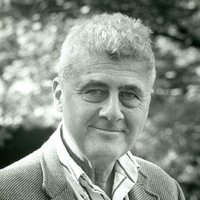
Howard Nemerov (February 29, 1920– July 5, 1991) was an American poet. He was twice Poet Laureate Consultant in Poetry to the Library of Congress, from 1963 to 1964 and again from 1988 to 1990. For The Collected Poems of Howard Nemerov (1977), he won the National Book Award for Poetry, Pulitzer Prize for Poetry, and Bollingen Prize. Nemerov was brother to photographer Diane Nemerov Arbus and father to art historian Alexander Nemerov, Professor of the History of Art and American Studies at Stanford University.

I have always been sincerely passionate for writing. Nothing quite beats a great word or metaphor. Poetry has become my escape in all situations, merely because I find it to be an outer body experience in which I cannot explain. I just recently began sharing my poetry because I felt that certain pieces of my work could help someone get through a tough time, or simply put them at ease and make them realize life is short and beautiful. At age 25, I am now devoting all the time and energy it takes to release my writing to all who appreciate it, and can grow from it. Writing is my passion, my hunger and my thirst and it can move me in a way I never thought possible.


Born in Lowell, Massachusetts on March 12, 1922, Jack Kerouac was baptised Jean Louis Kirouac, the youngest of three children of French-Canadian immigrants from Quebec, Canada. He was raised speaking the French-Canadian working class dialect Joual until he learned English at age five. Kerouac studied at local Catholic public schools and the Horace Mann School in New York City, as well as Columbia University and The New School. He was awarded athletic scholarships to attend Boston College, Notre Dame and Columbia, though an injury during his freshman season at Columbia kept him from playing and eventually led to his dropping out of school. In 1942, Kerouac joined the United States Merchant Marine, and a year later joined the United States Navy—he served only eight days of active duty before being honorably discharged on psychiatric grounds. Soon after, Kerouac was involved as an accessory in the murder of David Kammerer, having helped his friend Lucien Carr dispose of evidence, and was arrested as a material witness. Unable to convince his father to pay for bail, Kerouac agreed to marry fellow writer Edie Parker, who supported him financially, and moved to Detroit, Michigan. Their marriage was quickly annulled due to infidelity, and Kerouac returned to New York in 1944. Upon Kerouac's return to New York, he lived with his parents in Queens, where he wrote his first novel, The Town and the City (1950). Through Lucien Carr, Kerouac had met many of the literary figures now associated with the Beat Generation, including Allen Ginsberg and William S. Burroughs, and in 1949 began his most famous literary work, On the Road, which was tentatively titled "The Beat Generation" and "Gone on the Road". Kerouac finished the largely autobiographical novel in April 1951, though it remained unpublished until 1957. During that time, Kerouac completed ten other autobiographical novels, including The Subterraneans, Doctor Sax, Tristessa, and Desolation Angels. In July of 1957, Kerouac moved to Orlando, Florida, while awaiting the release of On the Road (Viking Press) later that year. Soon after, the New York Times ran a review lauding Kerouac as the voice of a new generation. The success of the novel garnered Kerouac celebrity status as a major American author, and his friendship with Ginsberg, Burroughs, and Gregory Corso cemented the influence of what became known as the Beat Generation. Other poet friends of Kerouac include Philip Lamantia, Gary Snyder, Philip Whalen, Lawrence Ferlinghetti, Michael McClure, Bob Kaufman, Diane di Prima, Lew Welch, and Amiri Baraka. Though best known for his novels, Kerouac is also associated with poetry of the Beat movement, including spoken word. Kerouac wrote that he wanted “to be considered as a jazz poet blowing a long blues in an afternoon jazz session on Sunday.” And in his “Statement on Poetics” for The New American Poetry, he asserts: “Add alluvials to the end of your line when all is exhausted but something has to be said for some specified irrational reason, since reason can never win out, because poetry is NOT a science. The rhythm of how you 'rush' yr statement determines the rhythm of the poem, whether it is a poem in verse-separated lines, or an endless one-line poem called prose . . .” In his introduction to Kerouac's Book of Blues, the poet Robert Creeley writes, “A complaint commonly lodged against Kerouac is that he was at best a self-taught ‘natural’, at worst an example of the cul de sac the autodidact in the arts invariably comes to, a solipsistic ‘world’ of his own limitations and confusions.” He goes on to state that Kerouac's poems themselves “provide an intensely vivid witness of both writer and time.” Jack Kerouac died from a chronic liver disease on October 21, 1969 at St. Anthony's Hospital in St. Petersburg, Florida, the result of a lifetime of heavy drinking.
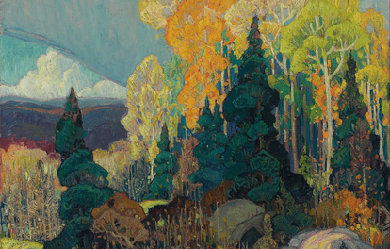
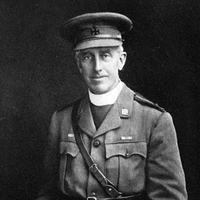
Frederick George Scott (7 April 1861– 19 January 1944) was a Canadian poet and author, known as the Poet of the Laurentians. He is sometimes associated with Canada’s Confederation Poets, a group that included Charles G.D. Roberts, Bliss Carman, Archibald Lampman, and Duncan Campbell Scott. Scott published 13 books of Christian and patriotic poetry. Scott was a British imperialist who wrote many hymns to the British Empire—eulogizing his country’s roles in the Boer Wars and World War I. Many of his poems use the natural world symbolically to convey deeper spiritual meaning. Frederick George Scott was the father of poet F. R. Scott.
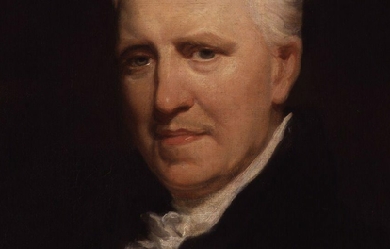

George Crabbe (/kræb/; 24 December 1754– 3 February 1832) was an English poet, surgeon, and clergyman. He is best known for his early use of the realistic narrative form and his descriptions of middle and working-class life and people. In the 1770s, Crabbe began his career as a doctor’s apprentice, later becoming a surgeon. In 1780, he travelled to London to make a living as a poet. After encountering serious financial difficulty and being unable to have his work published, he wrote to the statesman and author Edmund Burke for assistance. Burke was impressed enough by Crabbe’s poems to promise to help him in any way he could. The two became close friends and Burke helped Crabbe greatly both in his literary career and in building a role within the church. Burke introduced Crabbe to the literary and artistic society of London, including Sir Joshua Reynolds and Samuel Johnson, who read The Village before its publication and made some minor changes. Burke secured Crabbe the important position of Chaplain to the Duke of Rutland. Crabbe served as a clergyman in various capacities for the rest of his life, with Burke’s continued help in securing these positions. He developed friendships with many of the great literary men of his day, including Sir Walter Scott, whom he visited in Edinburgh, and William Wordsworth and some of his fellow Lake Poets, who frequently visited Crabbe as his guests. Lord Byron described him as “nature’s sternest painter, yet the best.” Crabbe’s poetry was predominantly in the form of heroic couplets, and has been described as unsentimental in its depiction of provincial life and society. The modern critic Frank Whitehead wrote that “Crabbe, in his verse tales in particular, is an important–indeed, a major–poet whose work has been and still is seriously undervalued.” Crabbe’s works include The Village (1783), Poems (1807), The Borough (1810), and his poetry collections Tales (1812) and Tales of the Hall (1819). Biography Early life Crabbe was born in Aldeburgh, Suffolk, the eldest child of George Crabbe Sr. The elder George Crabbe had been a teacher at a village school in Orford, Suffolk, and later in Norton, near Loddon, Norfolk; he later became a tax collector for salt duties, a position that his own father had held. As a young man he married an older widow named Craddock, who became the mother of his six children: George, his brothers Robert, John, and William, his sister Mary, and another sister who died as an infant. George Jr. spent his first 25 years close to his birthplace. He showed an aptitude for books and learning at an early age. He was sent to school while still very young, and developed an interest in the stories and ballads that were popular among his neighbors. His father owned a few books, and used to read passages from John Milton and from various 18th-century poets to his family. He also subscribed to a country magazine called Martin’s Philosophical Magazine, giving the “poet’s corner” section to George. The senior Crabbe had interests in the local fishing industry, and owned a fishing boat; he had contemplated raising his son George to be a seaman, but soon found that the boy was unsuited to such a career. George’s father respected his son’s interest in literature, and George was sent first to a boarding-school at Bungay near his home, and a few years later to a more important school at Stowmarket, where he gained an understanding of mathematics and Latin, and a familiarity with the Latin classics. His early reading included the works of William Shakespeare, Alexander Pope, who had a great influence on George’s future works, Abraham Cowley, Sir Walter Raleigh and Edmund Spenser. He spent three years at Stowmarket before leaving school to find a physician to be apprenticed to, as medicine had been settled on as his future career. In 1768 he was apprenticed to a local doctor at Wickhambrook, near Bury St Edmunds. This doctor practiced medicine while also keeping a small farm, and George ended up doing more farm labour and errands than medical work. In 1771 he changed masters and moved to Woodbridge, where he remained until 1775. While at Woodbridge he joined a small club of young men who met at an inn for evening discussions. Through his contacts at Woodbridge he met his future wife, Sarah Elmy. Crabbe called her “Mira”, later referring to her by this name in some of his poems. During this time he began writing poetry. In 1772, a lady’s magazine offered a prize for the best poem on the subject of hope, which Crabbe won. The same magazine printed other short pieces of Crabbe’s throughout 1772. They were signed “G. C., Woodbridge,” and included some of his lyrics addressed to Mira. Other known verses written while he was at Woodbridge show that he made experiments in stanza form modeled on the works of earlier English poets, but only showed some slight imitative skill. 1775 to 1785 His first major work, a satirical poem of nearly 400 lines in Pope’s couplet form entitled Inebriety, was self-published in 1775. Crabbe later said of the poem, which received little or no attention at the time, “Pray let not this be seen... there is very little of it that I’m not heartily ashamed of.” By this time he had completed his medical training and had returned home to Aldeburgh. He had intended to go on to London to study at a hospital, but he was forced through low finances to work for some time as a local warehouseman. He eventually travelled to London in 1777 to practice medicine, returning home in financial difficulty after a year. Crabbe continued to practice as a surgeon after returning to Aldeburgh, but as his surgical skills remained deficient, he attracted only the poorest patients, and his fees were small and undependable. This hurt his chances of an early marriage, but Sarah stayed devoted to him. In late 1779 he decided to move to London and see if he could make it as a poet, or, if that failed, as a doctor. He moved to London in April 1780, where he had little success, and by the end of May he had been forced to pawn some of his possessions, including his surgical instruments. He composed a number of works but was refused publication. He wrote several letters seeking patronage, but these were also refused. In June Crabbe witnessed instances of mob violence during the Gordon Riots, and recorded them in his journal. He was able to publish a poem at this time entitled The Candidate, but it was badly received by critics. He continued to rack up debts that he had no way of paying, and his creditors pressed him. He later told Walter Scott and John Gibson Lockhart that “during many months when he was toiling in early life in London he hardly ever tasted butchermeat except on a Sunday, when he dined usually with a tradesman’s family, and thought their leg of mutton, baked in the pan, the perfection of luxury.” In early 1781 he wrote a letter to Edmund Burke asking for help, in which he included samples of his poetry. Burke was swayed by Crabbe’s letter and a subsequent meeting with him, giving him money to relieve his immediate wants, and assuring him that he would do all in his power to further Crabbe’s literary career. Among the samples that Crabbe had sent to Burke were pieces of his poems The Library and The Village. A short time after their first meeting Burke told his friend Sir Joshua Reynolds that Crabbe had “the mind and feelings of a gentleman.” Burke gave Crabbe the footing of a friend, admitting him to his family circle at Beaconsfield. There he was given an apartment, supplied with books, and made a member of the family. The time he spent with Burke and his family helped by enlarging his knowledge and ideas, and introducing him to many new and valuable friends including Charles James Fox and Samuel Johnson. He completed his unfinished poems and revised others with the help of Burke’s criticism. Burke helped him have his poem, The Library, published anonymously in June 1781, by a publisher that had previously refused some of his work. The Library was greeted with modest praise from critics, and slight public appreciation. Through their friendship, Burke discovered that Crabbe was more suited to be a clergyman than a surgeon. Crabbe had a good knowledge of Latin and an evident natural piety, and was well read in the scriptures. He was ordained to the curacy of his native town on 21 December 1781 through Burke’s recommendation. He returned to live in Aldeburgh with his sister and father, his mother having died in his absence. Crabbe was surprised to find that he was poorly treated by his fellow townsmen, who resented his rise in social class. With Burke’s help, Crabbe was able to leave Aldeburgh to become chaplain to the Duke of Rutland at Belvoir Castle in Leicestershire. This was an unusual move on Burke’s part, as this kind of preferment would usually have been given to a family member or personal friend of the Duke or through political interest. Crabbe’s experience as Chaplain at Belvoir was not altogether happy. He was treated with kindness by the Duke and Duchess, but his slightly unpolished manners and his position as a literary dependent made his relations with others in the Duke’s house difficult, especially the servants. However, the Duke and Duchess and many of their noble guests shared an interest in Crabbe’s literary talent and work. During his time there, his poem The Village was published in May 1783, achieving popularity with the public and critics. Samuel Johnson said of the poem in a letter to Reynolds “I have sent you back Mr. Crabbe’s poem, which I read with great delight. It is original, vigorous, and elegant.” Johnson’s friend and biographer James Boswell also praised The Village. It was said at the time of publication that Johnson had made extensive changes to the poem, but Boswell responded by saying that “the aid given by Johnson to the poem, as to The Traveller and Deserted Village of Goldsmith, were so small as by no means to impair the distinguished merit of the author.” Crabbe was able to keep up his friendships with Burke, Reynolds, and others during the Duke’s occasional visits to London. He visited the theatre, and was impressed with the actresses Sarah Siddons and Dorothea Jordan. Around this time it was decided that, as Chaplain to a noble family, Crabbe was in need of a college degree, and his name was entered on the boards of Trinity College, Cambridge, through the influence of Bishop Watson of Llandaff, so that Crabbe could obtain a degree without residence. This was in 1783, but almost immediately afterwards he received an LL.B. degree from the Archbishop of Canterbury. This degree allowed Crabbe to be given two small livings in Dorsetshire, Frome St Quintin and Evershot. This promotion does not seem to have interfered with Crabbe’s residence at Belvoir or in London; it is likely that curates were placed in these situations. On the strength of these preferments and a promise of future assistance from the Duke, Crabbe and Sarah Elmy were married in December 1783, in the parish church of Beccles, where Miss Elmy’s mother lived, and a few weeks later went to live together at Belvoir Castle. In 1784 the Duke of Rutland became Lord Lieutenant of Ireland. It was decided that Crabbe was not to be on the Duke’s staff in Ireland, though the two men parted as close friends. The young couple stayed on at Belvoir for nearly another eighteen months before Crabbe accepted a vacant curacy in the neighbourhood, that of Stathern in Leicestershire, where Crabbe and his wife moved in 1785. A child had been born to them at Belvoir, dying only hours after birth. During the following four years at Stathern they had three other children; two sons, George and John, in 1785 and 1787, and a daughter in 1789, who died in infancy. Crabbe later told his children that his four years at Stathern were the happiest of his life. 1785 to 1810 In October 1787 the Duke of Rutland died at the Vice-Regal Lodge in Dublin, after a short illness, at the early age of 35. Crabbe assisted at the funeral at Belvoir. The Duchess, anxious to have their former chaplain close by, was able to get Crabbe the two livings of Muston, Leicestershire, and Allington, Lincolnshire, in exchange for his old livings. Crabbe brought his family to Muston in February 1789. His connection with the two livings lasted for over 25 years, but during 13 of these years he was a non-resident. He stayed three years at Muston. Another son, Edmund, was born in 1790. In 1792, through the death of one of Sarah’s relations and soon after of her older sister, the Crabbe family came into possession of an estate in Parham, which removed all of their financial worries. Crabbe soon moved his family to this estate. Their son William was born the same year. Crabbe’s life at Parham was not happy. The former owner of the estate had been very popular for his hospitality, while Crabbe’s lifestyle was much more quiet and private. His solace here was the company of his friend Dudley Long North and his fellow Whigs who lived nearby. Crabbe soon sent his two sons George and John to school in Aldeburgh. After four years at Parham, the Crabbes moved to a home in Great Glemham, Suffolk, placed at his disposal by Dudley North. The family remained here for four or five years. In 1796 their third son, Edmund died at the age of six. This was a heavy blow to Sarah who began suffering from a nervous disorder from which she never recovered. Crabbe, a devoted husband, tended her with exemplary care until her death in 1813. Robert Southey, writing about Crabbe to his friend, Neville White, in 1808, said “It was not long before his wife became deranged, and when all this was told me by one who knew him well, five years ago, he was still almost confined in his own house, anxiously waiting upon this wife in her long and hopeless malady. A sad history! It is no wonder that he gives so melancholy a picture of human life.” During his time at Glemham, Crabbe composed several novels, none of which were published. After Glemham, Crabbe moved to the village of Rendham in Suffolk, where he stayed until 1805. His poem The Parish Register was all but completed while at Rendham, and The Borough was also begun. 1805 was the last year of Crabbe’s stay in Suffolk, and it was made memorable in literature by the appearance of the Lay of the Last Minstrel by Walter Scott. Crabbe first saw it in a bookseller’s shop in Ipswich, read it nearly through while standing at the counter, and pronounced that a new and great poet had appeared. In October 1805, Crabbe returned with his wife and two sons to the parsonage at Muston. He had been absent for nearly 13 years, of which four had been spent at Parham, five at Great Glemham, and four at Rendham. In September 1807, Crabbe published a new volume of poems. Included in this volume were The Library, The Newspaper, and The Village; the principal new poem was The Parish Register, to which were added Sir Eustace Grey and The Hall of Justice. The volume was dedicated to Henry Vassall-Fox, 3rd Baron Holland, nephew and sometime ward of Charles James Fox. An interval of 22 years had passed since Crabbe’s last appearance as an author, and he explained in the preface to this volume the reasons for this lapse as being his higher calling as a clergyman and his slow progress in poetical ability. This volume led to Crabbe’s general acceptance as an important poet. Four editions were issued during the following year and a half, the fourth appearing in March 1809. The reviews were unanimous in approval, headed by Francis Jeffrey in the Edinburgh Review. In 1809 Crabbe sent a copy of his poems in their fourth edition to Walter Scott, who acknowledged them in a friendly reply. Scott told Crabbe “how for more than twenty years he had desired the pleasure of a personal introduction to him, and how, as a lad of eighteen, he had met with selections from The Village and The Library in The Annual Register.” This exchange of letters led to a friendship that lasted for the rest of their lives, both authors dying in 1832. Crabbe’s favorite among Scott’s “Waverley” novels was The Heart of Midlothian. The success of The Parish Register in 1807 encouraged Crabbe to proceed with a far longer poem, which he had been working on for several years. The Borough was begun at Rendham in Suffolk in 1801, continued at Muston after his return in 1805, and finally completed during a long visit to Aldeburgh in the autumn of 1809. It was published in 1810. In spite of its defects, The Borough was an outright success. The poem appeared in February 1810, and went through six editions in the next six years. When he visited London a few years later and was received with general welcome in the literary world, he was very surprised. “In my own village,” he told James Smith, “they think nothing of me.” The three years following the publication of The Borough were especially lonely for him. He did have his two sons, George and John, with him; they had both passed through Cambridge, one at Trinity and the other at Caius, and were now clergymen themselves, each holding a curacy in the neighbourhood, enabling them to live under the parental roof, but Mrs. Crabbe’s health was now very poor, and Crabbe had no daughter or female relative at home to help him with her care. Later life Crabbe’s next volume of poetry, Tales was published in the summer of 1812. It received a warm welcome from the poet’s admirers, and was favorably reviewed by Jeffrey in the Edinburgh Review and is considered to be his masterpiece. In the summer of 1813, Mrs. Crabbe felt well enough to want to see London again, and the father and mother and two sons spent nearly three months in rooms in a hotel. Crabbe was able to visit Dudley North and some of his other old friends, and to visit and help the poor and distressed, remembering his own want and misery in the great city thirty years earlier. The family returned to Muston in September, and Mrs. Crabbe died at the end of October at the age of 63. Within days of his wife’s death Crabbe fell seriously ill, and was in danger of dying. He rallied, however, and returned to the duties of his parish. In 1814, he became Rector of Trowbridge in Wiltshire, a position given to him by the new Duke of Rutland. He remained at Trowbridge for the rest of his life. His two sons followed him, as soon as their existing engagements allowed them to leave Leicestershire. The younger, John, who married in 1816, became his father’s curate, and the elder, who married a year later, became curate at Pucklechurch, also nearby. Crabbe’s reputation as a poet continued to grow in these years. His growing reputation soon made him a welcome guest in many houses to which his position as vicar of Trowbridge might not have admitted him. Nearby was the poet William Lisle Bowles, who introduced Crabbe to the noble family at Bowood House, home of the Marquess of Lansdowne, who was always ready to welcome those distinguished in literature and the arts. It was at Bowood House that Crabbe first met the poet Samuel Rogers, who became a close friend and had an influence on Crabbe’s poetry. In 1817, on the recommendation of Rogers, Crabbe stayed in London from the middle of June to the end of July in order to enjoy the literary society of the capital. While there he met Thomas Campbell, and through him and Rogers was introduced to his future publisher John Murray. In June 1819, Crabbe published his collection Tales of the Hall. The last 13 years of Crabbe’s life were spent at Trowbridge, varied by occasional visits among his friends at Bath and the surrounding neighbourhood, and by yearly visits to his friend Samuel Hoare Jr in Hampstead. From here it was easy to visit his literary friends in London, while William Wordsworth, Southey, and others occasionally stayed with the family. Around 1820 Crabbe began suffering from frequent severe attacks of neuralgia, and this illness, together with his age, made him less and less able to travel to London. In the spring of 1822, Crabbe met Walter Scott for the first time in London, and promised to visit him in Scotland in the fall. He kept this promise during George IV’s visit to Edinburgh, in the course of which the King met Scott and the poet was given a wine glass from which the King had drunk. Scott returned from the meeting with the King to find Crabbe at his home. As John Gibson Lockhart related in his Life of Sir Walter Scott, Scott entered the room that had been set aside for Crabbe, wet and hurried, and embraced Crabbe with brotherly affection. The royal gift was forgotten—the ample skirt of the coat within which it had been packed, and which he had hitherto held cautiously in front of his person, slipped back to its more usual position—he sat down beside Crabbe, and the glass was crushed to atoms. His scream and gesture made his wife conclude that he had sat down on a pair of scissors, or the like: but very little harm had been done except the breaking of the glass. Later in 1822, Crabbe was invited to spend Christmas at Belvoir Castle, but was unable to make the trip because of the winter weather. While at home, he continued to write a large amount of poetry, leaving 21 manuscript volumes at his death. A selection from these formed the Posthumous Poems, published in 1834. Crabbe continued to visit at Hampstead throughout the 1820s, often meeting the writer Joanna Baillie and her sister Agnes. In the autumn of 1831, Crabbe visited the Hoares. He left them in November, expressing his pain and sadness at leaving in a letter, feeling that it might be the last time he saw them. He left Clifton in November, and went direct to his son George, at Pucklechurch. He was able to preach twice for his son, who congratulated him on the power of his voice, and other encouraging signs of strength. “I will venture a good sum, sir,” he said, “that you will be assisting me ten years hence.” “Ten weeks” was Crabbe’s answer, and the prediction was right almost to the day. After a short time at Pucklechurch, Crabbe returned to his home at Trowbridge. Early in January he reported continued drowsiness, which he felt was a sign of increasing weakness. Later in the month he was prostrated by a severe cold. Other complications arose, and it soon became apparent that he would not live much longer. He died on 3 February 1832, with his two sons and his faithful nurse by his side. Poetry Crabbe’s poetry was predominantly in the form of heroic couplets, and has been described as unsentimental in its depiction of provincial life and society. John Wilson wrote that “Crabbe is confessedly the most original and vivid painter of the vast varieties of common life that England has ever produced;” and that “In all the poetry of this extraordinary man, we see a constant display of the passions as they are excited and exacerbated by the customs, laws, and institutions of society.” The Cambridge History of English Literature saw Crabbe’s importance to be more in his influence than in his works themselves: “He gave the poetry of nature new worlds to conquer (rather than conquered them himself) by showing that the world of plain fact and common detail may be material for poetry”. Although Augustan literature played an important role in Crabbe’s life and poetical career, his body of work is unique and difficult to classify. His best works are an original achievement in a new realistic poetical form. The major factor in Crabbe’s evolving from the Augustan influence to his use of realistic narrative was the changing readership of the late 18th–early 19th century. In the mid-18th century, literature was confined to the aristocratic and highly educated class; with the rise of the middle class at the turn of the 19th century, which came with a growing number of provincial papers, the heightening in production of books in weekly installments, and the establishment of circulating libraries, the need for literature was spread throughout the middle class. Narrative poetry was not a generally accepted mode in Augustan literature, making the narrative form of Crabbe’s mature works an innovation. This was due to some extent to the rise in popularity of the novel in the late 18th–early 19th century. Another innovation is the attention that Crabbe pays to details, both in description and characterization. Augustan critics had espoused the view that minute details should be avoided in favor of generality. Crabbe also broke with Augustan tradition by not dealing with exalted and aristocratic characters, but rather choosing people from middle and working-class society. Poor characters like Crabbe’s often anthologized “Peter Grimes” from The Borough would have been completely unacceptable to Augustan critics. In this way, Crabbe created a new way of presenting life and society in poetry. Criticism Wordsworth predicted that Crabbe’s poetry would last “from its combined merits as truth and poetry fully as long as anything that has been expressed in verse since it first made its appearance”, though on another occasion, according to Henry Crabb Robinson, he “blamed Crabbe for his unpoetical mode of considering human nature and society.” This last opinion was also held by William Hazlitt, who complained that Crabbe’s characters “remind one of anatomical preservations; or may be said to bear the same relation to actual life that a stuffed cat in a glass-case does to the real one purring on the hearth.” Byron, besides what he said in English Bards and Scotch Reviewers, declared, in 1816, that he considered Crabbe and Coleridge “the first of these times in point of power and genius.” Byron had felt that English poetry had been steadily on the decline since the depreciation of Pope, and pointed to Crabbe as the last remaining hope of a degenerate age. Other admirers included Jane Austen, Alfred, Lord Tennyson and Sir Walter Scott, who used numerous quotes from Crabbe’s poems in his novels. During Scott’s final illness, Crabbe was the last writer he asked to have read to him. Lord Byron admired Crabbe’s poetry, and called him “nature’s sternest painter, yet the best”. According to critic Frank Whitehead, “Crabbe, in his verse tales in particular, is an important—indeed, a major—poet whose work has been and still is seriously undervalued.” His early poems, which were non-narrative essays in poetical form, gained him the approval of literary men like Samuel Johnson, followed by a period of 20 years in which he wrote much, destroying most of it, and published nothing. In 1807, he published his volume Poems which started off the new realistic narrative method that characterized his poetry for the rest of his career. Whitehead states that this narrative poetry, which occupies the bulk of Crabbe’s output, should be at the center of modern critical attention. Q. D. Leavis said of Crabbe: “He is (or ought to be—for who reads him?) a living classic.” His classic status was also supported by T. S. Eliot in an essay on the poetry of Samuel Johnson in which Eliot grouped Crabbe together favorably with Johnson, Pope, and several other poets. Eliot said that “to have the virtues of good prose is the first and minimum requirement of good poetry.” Critic Arthur Pollard believes that Crabbe definitely met this qualification. Critic William Caldwell Roscoe, answering William Hazlitt’s question of why Crabbe hadn’t in fact written prose rather than verse said “have you ever read Crabbe’s prose? Look at his letters, especially the later ones, look at the correct but lifeless expression of his dedications and prefaces—then look at his verse, and you will see how much he has exceeded 'the minimum requirement of good poetry’.” Critic F. L. Lucas summed up Crabbe’s qualities: "naïve, yet shrewd; straightforward, yet sardonic; blunt, yet tender; quiet, yet passionate; realistic, yet romantic." Crabbe, who is seen as a complicated poet, has been and often still is dismissed as too narrow in his interests and in his way of responding to them in his poetry. “At the same time as the critic is making such judgments, he is all too often aware that Crabbe, nonetheless, defies classification,” says Pollard. Pollard has attempted to examine the negative views of Crabbe and the reasons for limited readership since his lifetime: "Why did Crabbe’s 'realism’ and his discovery of what in effect was the short story in verse fail to appeal to the fiction-dominated Victorian age? Or is it that somehow psychological analysis and poetry are uneasy bedfellows? But then why did Browning succeed and Crabbe descend to the doldrums or to the coteries of admiring enthusiasts? And why have we in this century (the 20th century) failed to get much nearer to him? Does this mean that each succeeding generation must struggle to find his characteristic and essential worth? FitzGerald was only one of many among those who would make 'cullings from’ or 'readings in’ Crabbe. The implications of such selection are clearly that, though much has vanished, much deserves to remain.” Entomology Crabbe was known as a coleopterist and recorder of beetles, and is credited for discovering the first specimen of Calosoma sycophanta L. to be recorded from Suffolk. He published an essay on the Natural History of the Vale of Belvoir in John Nichols’s, Bibliotheca Topographia Britannica, VIII, Antiquities in Leicestershire, 1790. It includes a very extensive list of local coleopterans, and references more than 70 species. Bibliography * Inebriety (published 1775) * The Candidate (published 1780) * The Library (published 1781) * The Village (published 1782) * The Newspaper (published 1785) * Poems (published 1807) * The Borough (published 1810) * Tales in Verse (published 1812) * Tales of the Hall (published 1819) * Posthumous Tales (published 1834) Adaptations * Benjamin Britten’s opera Peter Grimes is based on The Borough. Britten also set an extract from The Borough as the third of his Five Flower Songs, op. 47. Charles Lamb’s verse play The Wife’s Trial; or, The Intruding Widow, written in 1827 and published the following year in Blackwood’s Magazine, was based on Crabbe’s tale “The Confidant”. References Wikipedia—https://en.wikipedia.org/wiki/George_Crabbe

The Split Man sculpture represents the mental state of the dysfunctional human (here represented as a 30 year old). This human (male or female) is falling apart because he/she cannot or will not dedicate his or her life to one goal, consequently can’t create his/her true self, and, by failing to apply that true self, achieve self-realization. Failure to make the goal a reality results in en-darkenment, to wit, (energy) depression. Achievement of the goal results in en-lightenment, to wit, (energy) elation, and the experience of rapturous joy. The Split Man wants to die, in fact, needs to die. He/she needs to return to his/her original state in order to recover his/her essential self, therefore his or her unique life purpose (read: dharma). It’s the 100% application of life purpose (or dharma) that leads to the experience of the true self. Split Man, Victoria’s Way, Co Wicklow Ireland
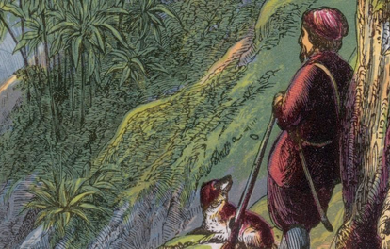
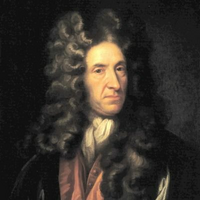
Daniel Defoe (c. 1660 – 24 April 1731), born Daniel Foe, was an English trader, writer, journalist, pamphleteer and spy. He is most famous for his novel Robinson Crusoe, which is second only to the Bible in its number of translations. He has been seen as one of the earliest proponents of the English novel, and helped to popularise the form in Britain with others such as Aphra Behn and Samuel Richardson. Defoe wrote many political tracts and often was in trouble with the authorities, including a spell in prison. Intellectuals and political leaders paid attention to his fresh ideas and sometimes consulted with him. Defoe was a prolific and versatile writer, producing more than three hundred works—books, pamphlets, and journals—on diverse topics, including politics, crime, religion, marriage, psychology, and the supernatural. He was also a pioneer of business journalism and economic journalism. Early life Daniel Foe (his original name) was probably born in Fore Street in the parish of St Giles Cripplegate, London. Defoe later added the aristocratic-sounding “De” to his name, and on occasion claimed descent from the family of De Beau Faux. His birthdate and birthplace are uncertain, and sources offer dates from 1659 to 1662, with the summer or early autumn of 1660 considered the most likely. His father, James Foe, was a prosperous tallow chandler and a member of the Worshipful Company of Butchers. In Defoe’s early life, he experienced some of the most unusual occurrences in English history: in 1665, 70,000 were killed by the Great Plague of London, and the next year, the Great Fire of London left standing only Defoe’s and two other houses in his neighbourhood. In 1667, when he was probably about seven, a Dutch fleet sailed up the Medway via the River Thames and attacked the town of Chatham in the raid on the Medway. His mother, Annie, had died by the time he was about ten. Education Defoe was educated at the Rev. James Fisher’s boarding school in Pixham Lane in Dorking, Surrey. His parents were Presbyterian dissenters, and around the age of 14, he attended a dissenting academy at Newington Green in London run by Charles Morton, and he is believed to have attended the Newington Green Unitarian Church and kept practising his Presbyterian religion. During this period, the English government persecuted those who chose to worship outside the Church of England. Business career Defoe entered the world of business as a general merchant, dealing at different times in hosiery, general woollen goods, and wine. His ambitions were great and he was able to buy a country estate and a ship (as well as civets to make perfume), though he was rarely out of debt. He was forced to declare bankruptcy in 1692. On 1 January 1684, Defoe married Mary Tuffley at St Botolph’s Aldgate. She was the daughter of a London merchant, receiving a dowry of £3,700—a huge amount by the standards of the day. With his debts and political difficulties, the marriage may have been troubled, but it lasted 47 years and produced eight children.In 1685, Defoe joined the ill-fated Monmouth Rebellion but gained a pardon, by which he escaped the Bloody Assizes of Judge George Jeffreys. Queen Mary and her husband William III were jointly crowned in 1689, and Defoe became one of William’s close allies and a secret agent. Some of the new policies led to conflict with France, thus damaging prosperous trade relationships for Defoe, who had established himself as a merchant. In 1692, Defoe was arrested for debts of £700, though his total debts may have amounted to £17,000. His laments were loud and he always defended unfortunate debtors, but there is evidence that his financial dealings were not always honest. He died with little wealth and evidence of lawsuits with the royal treasury.Following his release, he probably travelled in Europe and Scotland, and it may have been at this time that he traded wine to Cadiz, Porto and Lisbon. By 1695, he was back in England, now formally using the name “Defoe” and serving as a “commissioner of the glass duty”, responsible for collecting taxes on bottles. In 1696, he ran a tile and brick factory in what is now Tilbury in Essex and lived in the parish of Chadwell St Mary. Writing As many as 545 titles have been ascribed to Defoe, ranging from satirical poems, political and religious pamphlets, and volumes. (Furbank and Owens argue for the much smaller number of 276 published items in Critical Bibliography (1998).) Pamphleteering and prison Defoe’s first notable publication was An essay upon projects, a series of proposals for social and economic improvement, published in 1697. From 1697 to 1698, he defended the right of King William III to a standing army during disarmament, after the Treaty of Ryswick (1697) had ended the Nine Years’ War (1688–1697). His most successful poem, The True-Born Englishman (1701), defended the king against the perceived xenophobia of his enemies, satirising the English claim to racial purity. In 1701, Defoe presented the Legion’s Memorial to Robert Harley, then Speaker of the House of Commons—and his subsequent employer—while flanked by a guard of sixteen gentlemen of quality. It demanded the release of the Kentish petitioners, who had asked Parliament to support the king in an imminent war against France. The death of William III in 1702 once again created a political upheaval, as the king was replaced by Queen Anne who immediately began her offensive against Nonconformists. Defoe was a natural target, and his pamphleteering and political activities resulted in his arrest and placement in a pillory on 31 July 1703, principally on account of his December 1702 pamphlet entitled The Shortest-Way with the Dissenters; Or, Proposals for the Establishment of the Church, purporting to argue for their extermination. In it, he ruthlessly satirised both the High church Tories and those Dissenters who hypocritically practised so-called “occasional conformity”, such as his Stoke Newington neighbour Sir Thomas Abney. It was published anonymously, but the true authorship was quickly discovered and Defoe was arrested. He was charged with seditious libel. Defoe was found guilty after a trial at the Old Bailey in front of the notoriously sadistic judge Salathiel Lovell. Lovell sentenced him to a punitive fine of 200 marks, to public humiliation in a pillory, and to an indeterminate length of imprisonment which would only end upon the discharge of the punitive fine. According to legend, the publication of his poem Hymn to the Pillory caused his audience at the pillory to throw flowers instead of the customary harmful and noxious objects and to drink to his health. The truth of this story is questioned by most scholars, although John Robert Moore later said that “no man in England but Defoe ever stood in the pillory and later rose to eminence among his fellow men”. After his three days in the pillory, Defoe went into Newgate Prison. Robert Harley, 1st Earl of Oxford and Earl Mortimer, brokered his release in exchange for Defoe’s co-operation as an intelligence agent for the Tories. In exchange for such co-operation with the rival political side, Harley paid some of Defoe’s outstanding debts, improving his financial situation considerably.Within a week of his release from prison, Defoe witnessed the Great Storm of 1703, which raged through the night of 26/27 November. It caused severe damage to London and Bristol, uprooted millions of trees, and killed more than 8,000 people, mostly at sea. The event became the subject of Defoe’s The Storm (1704), which includes a collection of witness accounts of the tempest. Many regard it as one of the world’s first examples of modern journalism.In the same year, he set up his periodical A Review of the Affairs of France which supported the Harley Ministry, chronicling the events of the War of the Spanish Succession (1702–1714). The Review ran three times a week without interruption until 1713. Defoe was amazed that a man as gifted as Harley left vital state papers lying in the open, and warned that he was almost inviting an unscrupulous clerk to commit treason; his warnings were fully justified by the William Gregg affair. When Harley was ousted from the ministry in 1708, Defoe continued writing the Review to support Godolphin, then again to support Harley and the Tories in the Tory ministry of 1710–1714. The Tories fell from power with the death of Queen Anne, but Defoe continued doing intelligence work for the Whig government, writing “Tory” pamphlets that undermined the Tory point of view.Not all of Defoe’s pamphlet writing was political. One pamphlet was originally published anonymously, entitled "A True Relation of the Apparition of One Mrs. Veal the Next Day after her Death to One Mrs. Bargrave at Canterbury the 8th of September, 1705." It deals with interaction between the spiritual realm and the physical realm and was most likely written in support of Charles Drelincourt’s The Christian Defense against the Fears of Death (1651). It describes Mrs. Bargrave’s encounter with her old friend Mrs. Veal after she had died. It is clear from this piece and other writings that the political portion of Defoe’s life was by no means his only focus. Anglo-Scottish Union of 1707 In despair during his imprisonment for the seditious libel case, Defoe wrote to William Paterson, the London Scot and founder of the Bank of England and part instigator of the Darien scheme, who was in the confidence of Robert Harley, 1st Earl of Oxford and Earl Mortimer, leading minister and spymaster in the English Government. Harley accepted Defoe’s services and released him in 1703. He immediately published The Review, which appeared weekly, then three times a week, written mostly by himself. This was the main mouthpiece of the English Government promoting the Act of Union 1707.In 1709, Defoe authored a rather lengthy book entitled The History of the Union of Great Britain, an Edinburgh publication printed by the Heirs of Anderson. The book was not published anonymously and cites Defoe twice as being its author. The book attempts to explain the facts leading up to the Act of Union 1707, dating all the way back to 6 December 1604 when King James I was presented with a proposal for unification. This so-called “first draft” for unification took place 100 years before the signing of the 1707 accord, which respectively preceded the commencement of Robinson Crusoe by another ten years. Defoe began his campaign in The Review and other pamphlets aimed at English opinion, claiming that it would end the threat from the north, gaining for the Treasury an “inexhaustible treasury of men”, a valuable new market increasing the power of England. By September 1706, Harley ordered Defoe to Edinburgh as a secret agent to do everything possible to help secure acquiescence in the Treaty of Union. He was conscious of the risk to himself. Thanks to books such as The Letters of Daniel Defoe (edited by G. H. Healey, Oxford 1955), far more is known about his activities than is usual with such agents. His first reports included vivid descriptions of violent demonstrations against the Union. “A Scots rabble is the worst of its kind”, he reported. Years later John Clerk of Penicuik, a leading Unionist, wrote in his memoirs that it was not known at the time that Defoe had been sent by Godolphin: … to give a faithful account to him from time to time how everything past here. He was therefor a spy among us, but not known to be such, otherways the Mob of Edin. had pull him to pieces. Defoe was a Presbyterian who had suffered in England for his convictions, and as such he was accepted as an adviser to the General Assembly of the Church of Scotland and committees of the Parliament of Scotland. He told Harley that he was “privy to all their folly” but “Perfectly unsuspected as with corresponding with anybody in England”. He was then able to influence the proposals that were put to Parliament and reported, Having had the honour to be always sent for the committee to whom these amendments were referrèd, I have had the good fortune to break their measures in two particulars via the bounty on Corn andproportion of the Excise. For Scotland, he used different arguments, even the opposite of those which he used in England, usually ignoring the English doctrine of the Sovereignty of Parliament, for example, telling the Scots that they could have complete confidence in the guarantees in the Treaty. Some of his pamphlets were purported to be written by Scots, misleading even reputable historians into quoting them as evidence of Scottish opinion of the time. The same is true of a massive history of the Union which Defoe published in 1709 and which some historians still treat as a valuable contemporary source for their own works. Defoe took pains to give his history an air of objectivity by giving some space to arguments against the Union but always having the last word for himself. He disposed of the main Union opponent, Andrew Fletcher of Saltoun, by ignoring him. Nor does he account for the deviousness of the Duke of Hamilton, the official leader of the various factions opposed to the Union, who seemingly betrayed his former colleagues when he switched to the Unionist/Government side in the decisive final stages of the debate. Defoe made no attempt to explain why the same Parliament of Scotland which was so vehement for its independence from 1703 to 1705 became so supine in 1706. He received very little reward from his paymasters and of course no recognition for his services by the government. He made use of his Scottish experience to write his Tour thro’ the whole Island of Great Britain, published in 1726, where he admitted that the increase of trade and population in Scotland which he had predicted as a consequence of the Union was “not the case, but rather the contrary”. Defoe’s description of Glasgow (Glaschu) as a “Dear Green Place” has often been misquoted as a Gaelic translation for the town’s name. The Gaelic Glas could mean grey or green, while chu means dog or hollow. Glaschu probably means “Green Hollow”. The “Dear Green Place”, like much of Scotland, was a hotbed of unrest against the Union. The local Tron minister urged his congregation “to up and anent for the City of God”. The “Dear Green Place” and “City of God” required government troops to put down the rioters tearing up copies of the Treaty at almost every mercat cross in Scotland. When Defoe visited in the mid-1720s, he claimed that the hostility towards his party was “because they were English and because of the Union, which they were almost universally exclaimed against”. Late writing The extent and particulars are widely contested concerning Defoe’s writing in the period from the Tory fall in 1714 to the publication of Robinson Crusoe in 1719. Defoe comments on the tendency to attribute tracts of uncertain authorship to him in his apologia Appeal to Honour and Justice (1715), a defence of his part in Harley’s Tory ministry (1710–1174). Other works that anticipate his novelistic career include The Family Instructor (1715), a conduct manual on religious duty; Minutes of the Negotiations of Monsr. Mesnager (1717), in which he impersonates Nicolas Mesnager, the French plenipotentiary who negotiated the Treaty of Utrecht (1713); and A Continuation of the Letters Writ by a Turkish Spy (1718), a satire of European politics and religion, ostensibly written by a Muslim in Paris. From 1719 to 1724, Defoe published the novels for which he is famous (see below). In the final decade of his life, he also wrote conduct manuals, including Religious Courtship (1722), The Complete English Tradesman (1726) and The New Family Instructor (1727). He published a number of books decrying the breakdown of the social order, such as The Great Law of Subordination Considered (1724) and Everybody’s Business is Nobody’s Business (1725) and works on the supernatural, like The Political History of the Devil (1726), A System of Magick (1727) and An Essay on the History and Reality of Apparitions (1727). His works on foreign travel and trade include A General History of Discoveries and Improvements (1727) and Atlas Maritimus and Commercialis (1728). Perhaps his greatest achievement with the novels is the magisterial A tour thro’ the whole island of Great Britain (1724–1727), which provided a panoramic survey of British trade on the eve of the Industrial Revolution. The Complete English Tradesman Published in 1726, The Complete English Tradesman is an example of Defoe’s political works. He discusses the role of the tradesman in England in comparison to tradesmen internationally, arguing that the British system of trade is far superior. He also implies that trade is the backbone of the British economy: “estate’s a pond, but trade’s a spring.” He praises the practicality of trade not only within the economy but the social stratification as well. Most of the British gentry, he argues is at one time or another inextricably linked with the institution of trade, either through personal experience, marriage or genealogy. Oftentimes younger members of noble families entered into trade. Marriage to a tradesman’s daughter by a nobleman was also common. Overall Defoe demonstrated a high respect for tradesmen, being one himself. Not only does Defoe elevate individual British tradesmen to the level of gentleman, but he praises the entirety of British trade as a superior system. Trade, Defoe argues is a much better catalyst for social and economic change than war. He states that through imperialism and trade expansion the British empire is able to “increase commerce at home” through job creation and increased consumption. He states that increased consumption, by laws of supply and demand, increases production and in turn raises wages for the poor therefore lifting part of British society further out of poverty. Novels Robinson Crusoe Published in his late fifties, this novel relates the story of a man’s shipwreck on a desert island for twenty-eight years and his subsequent adventures. Throughout its episodic narrative, Crusoe’s struggles with faith are apparent as he bargains with God in times of life-threatening crises, but time and again he turns his back after his deliverances. He is finally content with his lot in life, separated from society, following a more genuine conversion experience. Usually read as fiction, a coincidence of background geography suggests that this may be non-fiction. In the opening pages of The Farther Adventures of Robinson Crusoe, the author describes how Crusoe settled in Bedford, married and produced a family, and that when his wife died, he went off on these further adventures. Bedford is also the place where the brother of “H. F.” in A Journal of the Plague Year retired to avoid the danger of the plague, so that by implication, if these works were not fiction, Defoe’s family met Crusoe in Bedford, from whence the information in these books was gathered. Defoe went to school in Stoke Newington, London, with a friend named Caruso. The novel has been assumed to be based in part on the story of the Scottish castaway Alexander Selkirk, who spent four years stranded in the Juan Fernández Islands, but this experience is inconsistent with the details of the narrative. The island Selkirk lived on was named Más a Tierra (Closer to Land) at the time and was renamed Robinson Crusoe Island in 1966. It has been supposed that Defoe may have also been inspired by the Latin or English translation of a book by the Andalusian-Arab Muslim polymath Ibn Tufail, who was known as “Abubacer” in Europe. The Latin edition of the book was entitled Philosophus Autodidactus and it was an earlier novel that is also set on a deserted island. Captain Singleton Defoe’s next novel was Captain Singleton (1720), an adventure story whose first half covers a traversal of Africa and whose second half taps into the contemporary fascination with piracy. It has been commended for its sensitive depiction of the close relationship between the hero and his religious mentor, Quaker William Walters. Memoirs of a Cavalier Memoirs of a Cavalier (1720) is set during the Thirty Years’ War and the English Civil War. A Journal of the Plague Year A novel often read as non-fiction, this is an account of the Great Plague of London in 1665. It is undersigned by the initials “H. F.”, suggesting the author’s uncle Henry Foe as its primary source. It is an historical account of the events based on extensive research, published in 1722. Bring out your dead! The ceaseless chant of doom echoed through a city of emptied streets and filled grave pits. For this was London in the year of 1665, the Year of the Great Plague … In 1721, when the Black Death again threatened the European Continent, Daniel Defoe wrote “A Journal of the Plague Year” to alert an indifferent populace to the horror that was almost upon them. Through the eyes of a saddler who had chosen to remain while multitudes fled, the master realist vividly depicted a plague-stricken city. He re-enacted the terror of a helpless people caught in a tragedy they could not comprehend: the weak preying on the dying, the strong administering to the sick, the sinful orgies of the cynical, the quiet faith of the pious. With dramatic insight he captured for all time the death throes of a great city.—Back cover of the New American Library version of “A Journal of the Plague Year”; Signet Classic, 1960 Colonel Jack Colonel Jack (1722) follows an orphaned boy from a life of poverty and crime to colonial prosperity, military and marital imbroglios, and religious conversion, driven by a problematic notion of becoming a “gentleman.” Moll Flanders Also in 1722, Defoe wrote Moll Flanders, another first-person picaresque novel of the fall and eventual redemption, both material and spiritual, of a lone woman in 17th-century England. The titular heroine appears as a whore, bigamist, and thief, lives in The Mint, commits adultery and incest, and yet manages to retain the reader’s sympathy. Her savvy manipulation of both men and wealth earns her a life of trials but ultimately an ending in reward. Although Moll struggles with the morality of some of her actions and decisions, religion seems to be far from her concerns throughout most of her story. However, like Robinson Crusoe, she finally repents. Moll Flanders is an important work in the development of the novel, as it challenged the common perception of femininity and gender roles in 18th-century British society, and it has come to be widely regarded as an example of erotica. Roxana Moll Flanders and Defoe’s final novel, Roxana: The Fortunate Mistress (1724), are examples of the remarkable way in which Defoe seems to inhabit his fictional characters (yet “drawn from life”), not least in that they are women. Roxana narrates the moral and spiritual decline of a high society courtesan. Roxana differs from other Defoe works because the main character does not exhibit a conversion experience, even though she claims to be a penitent later in her life, at the time that she’s relaying her story. Death Daniel Defoe died on 24 April 1731, probably while in hiding from his creditors. He often was in debtors’ prison. The cause of his death was labelled as lethargy, but he probably experienced a stroke. He was interred in Bunhill Fields (today Bunhill Fields Burial and Gardens), Borough of Islington, London, where a monument was erected to his memory in 1870.Defoe is known to have used at least 198 pen names. Selected works Novels * The Consolidator, or Memoirs of Sundry Transactions from the World in the Moon: Translated from the Lunar Language (1705) * Robinson Crusoe (1719) – originally published in two volumes:The Life and Strange Surprizing Adventures of Robinson Crusoe, of York, Mariner: Who Lived Eight and Twenty Years [...] * The Farther Adventures of Robinson Crusoe: Being the Second and Last Part of His Life [...] * Serious Reflections During the Life and Surprising Adventures of Robinson Crusoe: With his Vision of the Angelick World (1720) * Captain Singleton (1720) * Memoirs of a Cavalier (1720) * A Journal of the Plague Year (1722) * Colonel Jack (1722) * Moll Flanders (1722) * Roxana: The Fortunate Mistress (1724) Non-fiction * An Essay Upon Projects (1697) – which includes a chapter suggesting a national insurance scheme. * The Storm (1704) – describes the worst storm ever to hit Britain in recorded times. Includes eyewitness accounts. * Atlantis Major (1711) * The Family Instructor (1715) * Memoirs of the Church of Scotland (1717) * The History of the Remarkable Life of John Sheppard (1724) – describing Sheppard’s life of crime and concluding with the miraculous escapes from prison for which he had become a public sensation. * A Narrative of All The Robberies, Escapes, &c. of John Sheppard (1724) – written by or taken from Sheppard himself in the condemned cell before he was hanged for theft, apparently by way of conclusion to the Defoe work. * A tour thro’ the whole island of Great Britain, divided into circuits or journies (1724–1727) * The Political History of the Devil (1726) * The Complete English Tradesman (1726) * A treatise concerning the use and abuse of the marriage bed... (1727) * A Plan of the English Commerce (1728) Pamphlets or essays in prose * The Poor Man’s Plea (1698) * The History of the Kentish Petition (1701) * The Shortest Way with the Dissenters (1702) * The Great Law of Subordination Consider’d (1704) * Giving Alms No Charity, and Employing the Poor (1704) * An Appeal to Honour and Justice, Tho’ it be of his Worst Enemies, by Daniel Defoe, Being a True Account of His Conduct in Publick Affairs (1715) * A Vindication of the Press: Or, An Essay on the Usefulness of Writing, on Criticism, and the Qualification of Authors (1718) * Every-body’s Business, Is No-body’s Business (1725) * The Protestant Monastery (1726) * Parochial Tyranny (1727) * Augusta Triumphans (1728) * Second Thoughts are Best (1729) * An Essay Upon Literature (1726) * Mere Nature Delineated (1726) * Conjugal Lewdness (1727) Pamphlets or essays in verse * The True-Born Englishman: A Satyr (1701) * Hymn to the Pillory (1703) * An Essay on the Late Storm (1704) Some contested works attributed to Defoe * A Friendly Epistle by way of reproof from one of the people called Quakers, to T. B., a dealer in many words (1715). * The King of Pirates (1719) – purporting to be an account of the pirate Henry Avery. * The Pirate Gow (1725) – an account of John Gow. * A General History of the Pyrates (1724, 1725, 1726, 1828) – published in two volumes by Charles Rivington, who had a shop near St. Paul’s Cathedral, London. Published under the name of Captain Charles Johnson, it sold in many editions. * Captain Carleton’s Memoirs of an English Officer (1728). * The life and adventures of Mrs. Christian Davies, commonly call’d Mother Ross (1740) – published anonymously; printed and sold by R. Montagu in London; and attributed to Defoe but more recently not accepted. References Wikipedia—https://en.wikipedia.org/wiki/Daniel_Defoe

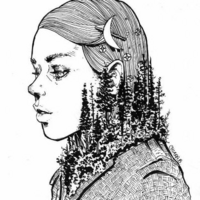
Everything in life is a matter of perspective. What we think and feel are all temporary and fading shreds that fluctuate based on our perception. Poetry is the art of eloquently and passionately jotting down our attempts at understanding what we perceive and how it evolves. I can't say that everything I offer here is pleasant truthfully most of it is probably not. I write to release it helps me cope with what is going on around me. These are the peaks of my ever changing thoughts, feelings and experiences. I hope you are able to find something useful in them.
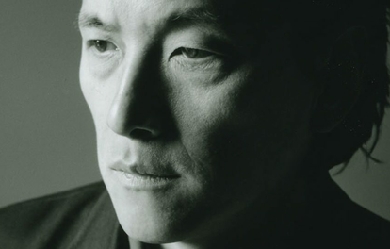

Li-Young Lee (李立揚, pinyin: Lǐ Lìyáng) (born August 19, 1957) is an American poet. He was born in Jakarta, Indonesia, to Chinese parents. His maternal great-grandfather was Yuan Shikai, China’s first Republican President, who attempted to make himself emperor. Lee’s father, who was a personal physician to Mao Zedong while in China, relocated his family to Indonesia, where he helped found Gamaliel University. His father was exiled and spent 19 months in an Indonesian prison camp in Macau. In 1959 the Lee family fled the country to escape anti-Chinese sentiment and after a five-year trek through Hong Kong and Japan, they settled in the United States in 1964. Li-Young Lee attended the University of Pittsburgh and the University of Arizona, and the State University of New York at Brockport. Development as a poet Lee attended the University of Pittsburgh, where he began to develop his love for writing. He had seen his father find his passion for ministry and as a result of his father reading to him and encouraging Lee to find his passion, Lee began to dive into the art of language. Lee’s writing has also been influenced by classic Chinese poets, such as Li Bai and Du Fu. Many of Lee’s poems are filled with themes of simplicity, strength, and silence. All are strongly influenced by his family history, childhood, and individuality. He writes with simplicity and passion which creates images that take the reader deeper and also requires his audience to fill in the gaps with their own imagination. These feelings of exile and boldness to rebel take shape as they provide common themes for poems. Lee’s influence on Asian American poetry Li-Young Lee has been an established Asian American poet who has been doing interviews for the past twenty years. Breaking the Alabaster Jar: Conversations with Li-Young Lee (BOA Editions, 2006, ed. Earl G. Ingersoll), is the first edited and published collection of interviews with an Asian American poet. In this book, Earl G. Ingersoll has collected interviews with the poet consisting of “conversational” questions meant to bring out Lee’s views on Asian American poetry, writing, and identity. Awards and honors * Lee has won numerous poetry awards: * 1986: Delmore Schwartz Memorial Award, from New York University, for Rose * 1988: Whiting Award * 1990: Lamont Poetry Selection for The City in Which I Love You * 1995: Lannan Literary Award * 1995: American Book Award, from the Before Columbus Foundation, for The Wingéd Seed: A Remembrance * 2002: William Carlos Williams Award for Book of My Nights (American Poets Continuum) Judge: Carolyn Kizer * 2003: Fellowship of the Academy of American Poets, which does not accept applications and which includes a $25,000 stipend * Fellowship, National Endowment for the Arts * Fellowship, John Simon Guggenheim Memorial Foundation * Grant, Illinois Arts Council * Grant, Commonwealth of Pennsylvania * Grant, Pennsylvania Council on the Arts Other recognition * 2011: Lee’s poem ″A Story″ was featured in the AP English Literature and Composition 2011 Free-Response Questions. Selected bibliography Poetry * * 1986: Rose. Rochester: BOA Editions Limited, ISBN 0-918526-53-1 * 1990: The City In Which I Love You. Rochester: BOA Editions Limited, ISBN 0-918526-83-3 * 2001: Book of My Nights. Rochester: BOA Editions Limited, ISBN 1-929918-08-9 * 2008: Behind My Eyes. New York: W.W. Norton & Co., ISBN 0-393-33481-3 Memoir * * The Wingéd Seed: A Remembrance. (hardcover) New York: Simon & Schuster, 1995. ASIN: B000NGRB2G (paperback) St. Paul: Ruminator, 1999. ISBN 1-886913-28-5 References Wikipedia—https://en.wikipedia.org/wiki/Li-Young_Lee

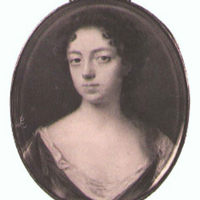
Anne Finch (née Kingsmill), Countess of Winchilsea (April 1661– 5 August 1720), was an English poet, the third child of Sir William Kingsmill of Sydmonton Court and his wife, Anne Haslewood. She was well-educated as her family believed in good education for girls as well as for boys. In 1682, Anne Kingsmill went to St James’s Palace to become a maid of honour to Mary of Modena (wife of James, Duke of York, who later became King James II). There she met the courtier Heneage Finch whom she married on 15 May 1684. It was a happy marriage and Anne wrote several love poems to her husband, most famous perhaps A Letter to Dafnis, though her most well-known works speak on her bouts of depression and her fervent belief in social justice for women. Finch’s works often express a desire for respect as a female poet, lamenting her difficult position as a woman in the literary establishment and the court, while writing of an intense artistic impulse to write despite the difficulties. On 4 August 1712, Charles Finch, 4th Earl of Winchilsea, died childless. This made Anne’s husband, his uncle, the 5th Earl of Winchilsea, and Anne, the Countess of Winchilsea. She died in Westminster in 1720 and was buried at her home at Eastwell, Kent. Works * Did I, my lines intend for public view, How many censures, would their faults pursue, Some would, because such words they do affect, Cry they’re insipid, empty, and uncorrect. And many have attained, dull and untaught, The name of wit only by finding fault. True judges might condemn their want of wit, * And all might say, they’re by a woman writ…" (Finch, The Introduction) * With these lines, written in the poem The Introduction by Anne Finch, Countess of Winchilsea, readers are welcomed into a vibrant, emotional, and opinionated style. They are unapologetically let in on the distinctly female voice that is to come. Melancholy, full of wit, and socially conscious, Anne Finch wrote verse and dramatic literature with a talent that has caused her works to not only survive, but to flourish in an impressive poetic legacy throughout the centuries since her death. * Finch’s range as a writer was vast. She experimented with the poetic traditions of her day, often straying from the fold through her use of rhyme, meter and content, which ranged from the simplistic to the metaphysical. Additionally, Finch wrote several satiric vignettes modelled after the short tales of French fabulist Jean de La Fontaine. She mocked La Fontaine’s fables, offering social criticism through biting sarcasm. Finch’s more melancholy fare, however, gained her wider acclaim. Her famous poems in this sullen vein include A Nocturnal Reverie and Ardelia to Melancholy, both depicting severe depression. Her poetry is often considered to fall in the category of Augustan, reflecting upon nature and finding both an emotional and religious relationship to it in her verse. Finch also skilfully employed the Pindaric ode, exploring complex and irregular structures and rhyme schemes. Her most famous example of this technique is in The Spleen (1709), a poetic expression of depression and its effects: * What art thou, Spleen, which ev’ry thing dost ape? * Thou Proteus to abused mankind, Who never yet thy real cause could find, Or fix thee to remain in one continued shape. Still varying thy perplexing form, Now a Dead Sea thou’lt represent, A calm of stupid discontent, Then, dashing on the rocks wilt rage into a storm. Trembling sometimes thou dost appear, * Dissolved into a panic fear… (Finch, The Spleen) * This poem was first published anonymously, though it went on to become one of her most renowned pieces. As Virginia Woolf, a later proponent of intellectual investigation into Finch’s life and work, once famously wrote, “I would venture to guess that Anon, who wrote so many poems without signing them, was often a woman” (Woolf, A Room of One’s Own). * Anne Finch is known today as one of the most versatile and gifted poets (one of her poems was set to music by Purcell) of her generation. Biography * (The following essay is taken from the Biography Reference Center.) * As a poet, Finch attained a modest amount of notoriety during her lifetime, which spanned the late 17th and early 18th centuries. However, her large body of work, written during the Augustan period (approximately 1660–1760), would earn greater attention after her death. While Finch also authored fables and plays, today she is best known for her poetry: lyric poetry, odes, love poetry and prose poetry. Later literary critics recognised the diversity of her poetic output as well as its personal and intimate style. * In her works Finch drew upon her own observations and experiences, demonstrating an insightful awareness of the social mores and political climate of her era. But she also artfully recorded her private thoughts, which could be joyful or despairing, playful or despondent. The poems also revealed her highly developed spiritual side. * Finch was born Anne Kingsmill in April 1661 in Sydmonton, Hampshire, located in the southern part of England. Her parents were Sir William Kingsmill and Anne Haslewood. She was the youngest of three children. Her siblings included William and Bridget Kingsmill. * The young Anne never knew her father, as he died only five months after she was born. In his will, he specified that his daughters receive financial support equal to that of their brother for their education. Her mother remarried in 1662, to Sir Thomas Ogle, and later bore Anne Kingsmill’s half-sister, Dorothy Ogle. Anne would remain close to Dorothy for most of their lives. * Finch’s mother died in 1664. Shortly before her death she wrote a will giving control of her estate to her second husband. The will was successfully challenged in a Court of Chancery by Anne Kingsmill’s uncle, William Haslewood. Subsequently, Anne and Bridget Kingsmill lived with their grandmother, Lady Kingsmill, in Charing Cross, London, while their brother lived with his uncle William Haslewood. * In 1670 Lady Kingsmill filed her own Court of Chancery suit, demanding from William Haslewood a share in the educational and support monies for Anne and Bridget. The court split custody and financial support between Haslewood and Lady Kingsmill. When Lady Kingsmill died in 1672, Anne and Bridget rejoined their brother to be raised by Haslewood. The sisters received a comprehensive and progressive education, something that was uncommon for females at the time, and Anne Kingsmill learned about Greek and Roman mythology, the Bible, French and Italian languages, history, poetry, and drama. At the court of Charles II * The sisters remained in the Haslewood household until their uncle’s death in 1682. 21 years old at the time, Anne Kingsmill then went to live at St James’s Palace, joining the court of Charles II. She became one of six maids of honour to Mary of Modena, who was the wife of James, Duke of York, who would later become King James II. * Apparently Anne’s interest in poetry began at the palace, and she started writing her own verse. Her friends included Sarah Churchill and Anne Killigrew, two other maids of honour who also shared poetic interests. However, when Anne Kingsmill witnessed the derision within the court that greeted Killigrew’s poetic efforts (poetry was not a pursuit considered suitable for women), she decided to keep her own writing attempts to herself and her close friends. She remained secretive about her poetry until much later in her life, when she was encouraged to publish under her own name. * While residing at court, Anne Kingsmill also met Colonel Heneage Finch, the man who would become her husband. A courtier as well as a soldier, Colonel Finch had been appointed Groom of the Bedchamber to James, Duke of York, in 1683. His family had strong Royalist connections, as well as a pronounced loyalty to the Stuart dynasty, and his grandmother had become Countess of Winchilsea in 1628. Finch met Kingsmill and fell in love with her, but she at first resisted his romantic overtures. However, Finch proved a persistent suitor and the couple was finally married on 15 May 1684. * Upon her marriage, Anne Finch resigned her court position, but her husband retained his own appointment and would serve in various government positions. As such, the couple remained involved in court life. During the 1685 coronation of James II, Heneage Finch carried the canopy of the Queen, Mary of Modena, who had specifically requested his service. * The couple’s marriage proved to be enduring and happy, in part due to the aspects of equality in their partnership. Indeed, part of the development of her poetic skills was brought about by expressing her joy in her love for her husband and the positive effects of his lack of patriarchal impingement on her artistic development. These early works, many written to her husband (such as "A Letter to Dafnis: April 2d 1685"), celebrated their relationship and ardent intimacy. In expressing herself in such a fashion, Anne Finch quietly defied contemporary social conventions. In other early works she aimed a satiric disapproval at prevailing misogynistic attitudes. Still, her husband strongly supported her writing activities. * Despite their court connections, Anne and Heneage Finch led a rather sedate life. At first they lived in Westminster; then, as Heneage Finch became more involved in public affairs, they moved to London. His involvement had increased when James II took the throne in 1685. The couple demonstrated great loyalty to the king in what turned out to be a brief reign. Refusal to take Oath of Allegiance to King William * James II was deposed in 1688 during the “Bloodless Revolution”. During his short reign, James fell under intense criticism for his autocratic manner of rule. Eventually he fled England for exile in Saint-Germain, France. As a result, the British Parliament offered William of Orange the English crown. When the new monarchs, William and Mary, assumed the throne, oaths of allegiance became a requirement for both the public and the clergy. William and Mary were Protestants, and the Finches remained loyal to the Catholic Stuart court, refusing to take the oath. They also viewed their oaths to the previous monarchy as morally binding and constant. But such a stance invited trouble. Heneage Finch lost his government position and retreated from public life. As the loss of his position entailed a loss of income, the Finches were forced to live with friends in London for a period. However, while living in the city the couple faced harassment, fines and potential imprisonment. * In April 1690 Heneage Finch was arrested and charged with Jacobitism for attempting to join the exiled James II in France. It was a difficult time for Jacobites and Nonjurors (those who had refused to take the oath of allegiance, such as the Finches), as their arrests and punishments were abusive. Because of his arrest, Heneage and Anne Finch remained separated from April until November of that year. Understandably, the circumstances caused the couple a great deal of emotional turmoil. Living with friends in Kent while her husband prepared his defence in London, Anne Finch often succumbed to bouts of depression, something that afflicted her for most of her adult life. The poems that she wrote during this period, such as “Ardelia to Melancholy”, reflected her mental state. Other poems involved political themes. But all of her work was noticeably less playful and joyous than her earlier output. Move to country estate * After Heneage Finch was released and his case dismissed, his nephew Charles Finch, the fourth Earl of Winchelsea, invited the couple to permanently move into the family’s Eastwell Park, Kent, estate. The Finches took up residence in late 1690 and found peace and security on the beautiful estate, where they would live for more than 25 years in the quiet countryside. * For Anne Finch, the estate provided a fertile and supportive environment for her literary efforts. Charles Finch was a patron of the arts and, along with Heneage Finch, he encouraged Anne’s writing. Her husband’s support was practical. He began collecting a portfolio of her 56 poems, writing them out by hand and making corrective changes. One significant change involved Anne’s pen name, which Heneage changed from “Areta” to “Ardelia”. * The peace and seclusion at Eastwell fostered the development of Finch’s poetry, and the retirement in the country provided her with her most productive writing period. Her work revealed her growing knowledge of contemporary poetic conventions, and the themes she addressed included metaphysics, the beauty of nature (as expressed in “A Nocturnal Reverie”), and the value of friendship (as in “The Petition for an Absolute Retreat”). Return to public life * By the early 18th century the political climate in England had generally improved for the Finches. King William died in 1702, and his death was followed by the succession to the throne of Queen Anne, the daughter of James II, who had died in 1701. With these developments, the Finches felt ready to embrace a more public lifestyle. Heneage Finch ran for a parliamentary seat three times (in 1701, 1705, and 1710), but was never elected. Still, the Finches felt the time was right to leave the seclusion of the country life and move into a house in London. * In London, Anne Finch was encouraged to publish her poetry under her own name. Earlier, in 1691, she had anonymously published some of her poetry. In 1701 she published “The Spleen” anonymously. This well-received reflection on depression would prove to be the most popular of her poems in her lifetime. When the Finches returned to London, Anne acquired some important and influential friends, including renowned writers such as Jonathan Swift and Alexander Pope, who encouraged her to write and publish much more openly. * She was reluctant, as she felt the current social and political climate remained oppressive as far as women were concerned. (In her poem “The Introduction,” which was privately circulated, she reflected on contemporary attitudes toward female poets.) When she published Miscellany Poems, on Several Occasions in 1713, the cover page of the first printing indicated that the collected works (which included 86 poems as well as a play) were “Written by a Lady.” However, on subsequent printings, Finch (as Anne, Countess of Winchilsea) received credit as the author. Lady Winchilsea * Anne Finch became Countess of Winchilsea upon the sudden and unexpected death of Charles Finch on 4 August 1712. As Charles Finch had no children, his uncle Heneage Finch (died 1726) became the Earl of Winchilsea, making Anne the Countess. However, the titles came with a cost. The Finches had to assume Charles Finch’s financial and legal burdens. The issues were eventually settled in the Finches’ favour in 1720, but not before the couple had endured nearly seven years of emotional strain. * During this period, Heneage and Anne Finch faced renewed strains resulting from court politics. When Queen Anne died in 1714, she was succeeded by George I. Subsequently, a Whig government, which was hostile to the Jacobite cause, rose to power. The Jacobite rebellion, which took place in Scotland in 1715, further aggravated the tense political situation. The Finches became greatly concerned about their safety, especially after a friend, Matthew Prior, who shared their political sympathies, was sent to prison. Deteriorating health * All of her worries combined started to take a toll on Anne Finch’s health, which began to seriously deteriorate. For years she had been vulnerable to depression, and in 1715 she became seriously ill. Her later poems reflected her turmoil. In particular, “A Suplication for the joys of Heaven” and “A Contemplation” expressed her concerns about her life and political and spiritual beliefs. * She died in Westminster, London, and her body was returned to Eastwell for burial, according to her previously stated wishes. Her husband produced an obituary that praised her talents as a writer and her virtues as an individual. A portion of it read, “To draw her Ladyship’s just Character, requires a masterly Pen like her own (She being a fine Writer, and an excellent Poet); we shall only presume to say, she was the most faithful Servant to her Royall Mistresse, the best Wife to her Noble Lord, and in every other Relation, publick and private, so illustrious an Example of such extraordinary Endowments, both of Body and Mind, that the Court of England never bred a more accomplished Lady, nor the Church of England a better Christian.” Poetry rediscovered * The only major collection of Anne Finch’s writings that appeared in her lifetime was Miscellany Poems, on Several Occasions. Nearly a century after her death her poetic output had been largely forgotten, until the great English poet William Wordsworth praised her nature poetry in an essay included in his 1815 volume Lyrical Ballads. * A major collection titled The Poems of Anne, Countess of Winchilsea, edited by Myra Reynolds, was published in 1903. For many years it was considered the definitive collection of her writings. It remains the only scholarly collection of Finch’s poetry, and includes all of the poems from Miscellany Poems and poems retrieved from manuscripts. Further, Reynolds’s impressive introduction did as much to re-establish Finch’s reputation as Wordsworth’s previous praise. * Later, The Wellesley Manuscript, which contained 53 unpublished poems, was released. Literary scholars have noted Finch’s distinctive voice and her poems’ intimacy, sincerity, and spirituality. They also expressed appreciation for her experimentation as well as her assured usage of Augustan diction and forms. * According to James Winn (The Review of English Studies, lix, 2008, pp 67–85) Anne Finch is the librettist of Venus and Adonis, with music by John Blow; the work is considered by some scholars to be the first true opera in the English language. In his critical edition of the opera for the Purcell Society, Bruce Wood agrees with Winn. * In 1929, in her classic essay A Room of One’s Own, Virginia Woolf both critiques Finch’s writing and expresses great admiration for it. In Woolf’s examination of the “female voice” and her search for the history of female writers, she argues that Finch’s writing is “harassed and distracted with hates and grievances,” pointing out that to Finch “men are hated and feared, because they have the power to bar her way to what she wants to do—which is to write.” However, Woolf excuses the flaws she perceives in Finch’s work by claiming that Finch surely had to “encourage herself to write by supposing that what she writes will never be published.” She goes on to acknowledge that in Finch’s work, "Now and again words issue of pure poetry…It was a thousand pities that the woman who could write like that, whose mind was turned to nature, and reflection, should have been forced to anger and bitterness." Woolf goes on in defence of her as a gifted but sometimes understandably misguided example of women’s writing. It is evident that Woolf sympathises deeply with Finch’s plight as a female poet, and though she takes issue with some of the content in Finch’s writing, she expresses grief that Finch is so unknown: "…when one comes to seek out the facts about Lady Winchilsea, one finds, as usual, that almost nothing is known about her." Woolf wishes to know more about “this melancholy lady, who loved wandering in the fields and thinking about unusual things and scorned, so rashly, so unwisely, ‘the dull manage of a servile house.’”

I write poetry when I'm in a bad mood, or when I'm depressed. Which is often. I play clarinet, cello, and guitar, and I'm a singer. Sprint cars and rock stars. Classic rock, heavy metal and pop punk fan. Journey and Bon Jovi are life. Green Day saved me. Working on poetry now. Will post when completed.

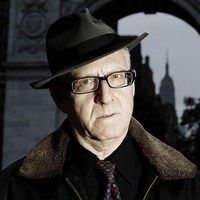
David Lehman (born June 11, 1948 in New York City) is a poet and the series editor for The Best American Poetry series. He teaches at The New School in New York City. Career David Lehman grew up the son of European Holocaust refugees in Manhattan’s northernmost neighborhood of Inwood. He attended Stuyvesant High School and Columbia University, and Cambridge University in England on a Kellett Fellowship. On his return to New York, he received a Ph.D. in English from Columbia, where he was Lionel Trilling’s research assistant. Lehman’s poem “The Presidential Years” appeared in The Paris Review No. 43 (Summer, 1968) while he was a Columbia undergraduate. His books of poetry include New and Selected Poems (2013), Yeshiva Boys (November 2009), When a Woman Loves a Man (2005), The Evening Sun (2002), The Daily Mirror (2000), and Valentine Place (1996), all published by Scribner. Princeton University Press published Operation Memory (1990), and An Alternative to Speech (1986). He collaborated with James Cummins on a book of sestinas, Jim and Dave Defeat the Masked Man (Soft Skull Press, 2005), and with Judith Hall on a book of poems and collages, Poetry Forum (Bayeux Arts, 2007). Since 2009, new poems have been published in 32 Poems, The Atlantic, The Awl, Barrow Street, The Common, Green Mountains Review, Hanging Loose, Hot Street, New Ohio Review, The New Yorker, Poetry, Poetry London, Sentence, Smartish Pace, Slate, and The Yale Review. Lehman’s poems appear in Chinese in the bilingual anthology, Contemporary American Poetry, published through a partnership between the NEA and the Chinese government, and in the Mongolian-English Anthology of American Poetry. Lehman’s work has been translated into sixteen languages overall, including Spanish, French, German, Danish, Russian, Polish, Korean and Japanese. In 2013, his translation of Goethe’s “Wandrers Nachtlied” into English appeared under the title “Goethe’s Nightsong” in The New Republic, and his translation of Guillaume Apollinaire’s “Zone” was published with an introductory essay in Virginia Quarterly Review. The translation and commentary won the journal’s Emily Clark Balch Prize for 2014. Additionally, his poem, “French Movie” appears in the third season of Motionpoems. Lehman is the series editor of The Best American Poetry, which he initiated in 1988. Lehman has edited The Oxford Book of American Poetry (Oxford University Press, 2006), The Best American Erotic Poems: From 1800 to the Present (Scribner, 2008), and Great American Prose Poems: From Poe to the Present (Scribner, 2003). He is the author of six nonfiction books, including, most recently, A Fine Romance: Jewish Songwriters, American Songs (Nextbook, 2009), for which he received a 2010 ASCAP Deems Taylor award from the American Society of Composers, Authors and Publishers. Sponsored by the American Library Association, Lehman curated, wrote, and designed a traveling library exhibit based on his book A Fine Romance that toured 55 libraries in 25 states between May 2011 and April 2012 with appearances at three libraries in New York state and Maryland. In an interview published in Smithsonian Magazine, Lehman discusses the artistry of the great lyricists: “The best song lyrics seem to me so artful, so brilliant, so warm and humorous, with both passion and wit, that my admiration is matched only by my envy... these lyricists needed to work within boundaries, to get complicated emotions across and fit the lyrics to the music, and to the mood thereof. That takes genius.” Lehman’s other books of criticism include The Last Avant-Garde: The Making of the New York School of Poets (Doubleday, 1998), which was named a "Book to Remember 1999" by the New York Public Library; The Big Question (1995); The Line Forms Here (1992) and Signs of the Times: Deconstruction and the Fall of Paul de Man (1991). His study of detective novels, The Perfect Murder (1989), was nominated for an Edgar Award from the Mystery Writers of America. A new edition of The Perfect Murder appeared in 2000. In October, 2015, he published Sinatra’s Century: One Hundred Notes on the Man and His World. Lehman worked as a free-lance journalist for many years. His by-line appeared frequently in Newsweek in the 1980s and he has written on a variety of subjects for journals ranging from the New York Times, the Washington Post, People, and The Wall Street Journal to The American Scholar, The Academy of American Poets, National Public Radio, Salon, Slate, Smithsonian, and Art in America. The Library of Congress commissioned an essay from Lehman, “Peace and War in American Poetry,” and posted it online in April 2013. In 2013, Lehman wrote the introduction to The Collected Poems of Joseph Ceravolo. He had previously written introductory essays to books by A. R. Ammons, Kenneth Koch, Philip Larkin, Alfred Leslie, Fairfield Porter, Karl Shapiro, and Mark Van Doren. In 1994 he succeeded Donald Hall as the general editor of the University of Michigan Press’s Poets on Poetry series, a position he held for twelve years. In 1997 he teamed with Star Black in creating and directing the famed KGB Bar Monday night poetry series in New York City’s East Village. Lehman and Black co-edited The KGB Bar Book of Poems (HarperCollins, 2000). They directed the reading series until 2003. He has taught in the graduate writing program of the New School in New York City since the program’s inception in 1996 and has served as poetry coordinator since 2003. In an interview with Tom Disch in the Cortland Review, Lehman addresses his great variety of poetic styles: “I write in a lot of different styles and forms on the theory that the poems all sound like me in the end, so why not make them as different from one another as possible, at least in outward appearance? If you write a new poem every day, you will probably have by the end of the year, if you’re me, an acrostic, an abecedarium, a sonnet or two, a couple of prose poems, poems that have arbitrary restrictions, such as the one I did that has only two words per line.” At the request of the editors of The American Scholar, Lehman initiated “Next Line, Please,” a poetry-writing contest, on the magazine’s website. The first project was a crowd-sourced sonnet, “Monday,” which was completed in August 2014. There followed a haiku, a tanka, an anagram based on Ralph Waldo Emerson’s middle name, a couplet (which grew into a “sonnet ghazal”), and a “shortest story” competition. Lehman devises the puzzles—or prompts—and judges the results. Lehman has been awarded fellowships from the Guggenheim Foundation, the Ingram Merrill Foundation, and the NEA, and received an award in literature from the American Academy of Arts and Letters and a Lila Wallace-Reader’s Digest Writer’s Award. He has lectured widely in the United States and abroad. Lehman divides his time between Ithaca, New York, and New York City. He is married to Stacey Harwood. Bibliography * works written by David Lehman: * Sinatra’s Century: One Hundred Notes on the Man and His World (2015) * New and Selected Poems (2013) * A Fine Romance (2009) * Yeshiva Boys (2009) * When a Woman Loves a Man (Scribner, 2005) * The Evening Sun (Scribner, 2002) * The Daily Mirror: A Journal in Poetry (2000) * The Last Avant-Garde: The Making of the New York School of Poets (1998) * Valentine Place (1996) * The Big Question (1995) * The Line Forms Here (1992) * Signs of the Times: Deconstruction and the Fall of Paul de Man (1991) * Operation Memory (1990) * The Perfect Murder: A Study in Detection (1989) * An Alternative to Speech (1986) * Beyond Amazement: New Essays on John Ashbery (1980) * works edited by David Lehman: * The Best American Erotic Poems (2008) * The Oxford Book of American Poetry (2006) * A. R. Ammons: Selected Poems (2006) * Great American Prose Poems: From Poe to the Present (2003) * Ecstatic Occasions, Expedient Forms: 85 Leading Contemporary Poets Select and Comment on Their Poems (1987, expanded 1996) * The Best American Poetry with guest editors: * Terrance Hayes (2014), Denise Duhamel (2013), Mark Doty (2012), Kevin Young (2011), Amy Gerstler (2010), David Wagoner (2009), Charles Wright (2008), Heather McHugh (2007), Billy Collins (2006), Paul Muldoon (2005), Lyn Hejinian (2004), Yusef Komunyakaa (2003), Robert Creeley (2002), Robert Hass (2001), Rita Dove (2000), Robert Bly (1999), John Hollander (1998), James Tate (1997), Adrienne Rich (1996), Richard Howard (1995), A.R. Ammons (1994), Louise Glück (1993), Charles Simic (1992), Mark Strand (1991), Jorie Graham (1990), Donald Hall (1989) and John Ashbery (1988). * works written collaboratively: * Poetry Forum: A Play Poem: A Pl’em with Judith Hall (Bayeux Arts, 2007) * Jim and Dave Defeat the Masked Man with James Cummins (Soft Skull Press, 2005) * works edited collaboratively: * The Best of the Best American Poetry: 25th Anniversary Edition with Robert Pinsky (Scribner, 2013) * The KGB Bar Book of Poems with Star Black (HarperCollins, 2000) * The Best of the Best American Poetry, 1988-1997 with Harold Bloom (Scribner, 1998) * James Merrill: Essays in Criticism with Charles Berger (Cornell University Press, 1983) References Wikipedia—https://en.wikipedia.org/wiki/David_Lehman


Adam Lindsay Gordon (19 October 1833 – 24 June 1870) was a British-Australian poet, horseman, police officer and politician. He was the first Australian poet to gain considerable recognition overseas, and according to his contemporary, writer Marcus Clarke, Gordon's work represented “the beginnings of a national school of Australian poetry”.
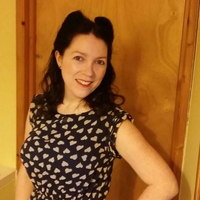
Welcome to my Poeticous page, I've been writing since I was 13 but in the past 5 years have fallen back in love with writing since studying English at college. I'm currently in the process of adding my work which is often inspired my prompts communities online. I hope you enjoy my words


Charlotte Brontë (21 April 1816 – 31 March 1855) was an English novelist and poetese, the eldest of the three Brontë sisters who survived into adulthood, whose novels are English literature standards. She wrote Jane Eyre under the pen name Currer Bell. Charlotte was born in Thornton, Yorkshire in 1816, the third of six children, to Maria (née Branwell) and her husband Patrick Brontë (formerly surnamed Brunty or Prunty), an Irish Anglican clergyman. In 1820, the family moved a few miles to the village of Haworth, where Patrick had been appointed Perpetual Curate of St Michael and All Angels Church. Charlotte's mother died of cancer on 15 September 1821, leaving five daughters and a son to be taken care of by her sister Elizabeth Branwell.

A summary? How is thou to write a summary, when a summary is a description of something worthful? I have had few worthful experiences since i turned 12. Now my life is very different. I am emo, emotional, a cutter, and a very hurt, and depressed about to be teen. I might even be bipolar. I cannot tell you of a life oh so FULL of happiness, because if I said that's how my life is or was, I would be lying. I cannot tell of a time, since I turned 12, that I have not thought of killing myself neither. I see things, That's the main cause of my negative feelings. They caused almost all of this pain and hurt. But they made me realize how really cruel the world is, and how it's oh so full of pain, tears, and sadness, and even fear. I am the way I am, and all of it together in the past year, has made me suicidal. i am the way I am, and I do NOT want to live a different life, but this one DOES need help. I am just too afraid to get help. I have told people of my problems. Some have told me to get help. WELL HOW ABOUT YOU OUT YOUR HEART WHERE YOUR MIND THINKS IT'S PLACE IS RIGHTFUL!!! I know I need help, but I need you to help. Any and everyone. Please pray for me, and PLEASE don't tell me to get help. I dont want you to TELL me to get help, I want you to BE help.
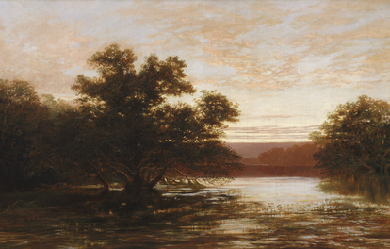
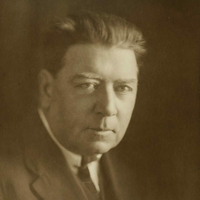
Christopher John Brennan (1 November 1870– 5 October 1932) was an Australian poet and scholar. Brennan was born in Sydney, to Christopher Brennan (d. 1919), a brewer, and his wife Mary Ann née Carroll (d. 1924), both Irish immigrants. His education took place at two schools in Sydney: he first attended St Aloysius’ College, and after gaining a scholarship from Patrick Moran, he boarded at St Ignatius’ College, Riverview. Brennan entered the University of Sydney in 1888, taking up studies in the Classics, and won a travelling scholarship to Berlin. There he met his future wife, Anna Elisabeth Werth; there, also, he encountered the poetry of Stéphane Mallarmé. About this time, he decided to become a poet. In 1893 Brennan’s article “On the Manuscripts of Aeschylus” appeared in the Journal of Philology.
#Australians #XIXCentury #XXCentury

I am a student at the University of Washington in my early twenties that is currently majoring in Japanese literature and political science. My interest in poetry started near the end of middle school. I typically like to write English poems inspired by Japanese poetic structures like the haiku or tanka. Otherwise I would describe my poetry as very freestyle. I am a Christian, my all-time favorite band is the Avett Brothers, and I'm deeply invested in Japanese pop culture.
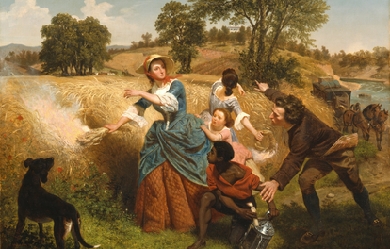
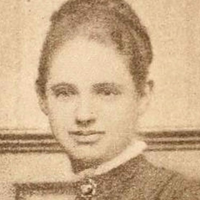
Mary Elizabeth Coleridge (23 September 1861– 25 August 1907) was a British novelist and poet who also wrote essays and reviews. She taught at the London Working Women’s College for twelve years from 1895 to 1907. She wrote poetry under the pseudonym Anodos, taken from George MacDonald; other influences on her were Richard Watson Dixon and Christina Rossetti. Robert Bridges, the Poet Laureate, described her poems as ‘wonderously beautiful… but mystical rather and enigmatic’. She published five novels, the best known of those being The King with Two Faces.


Robert Silliman Hillyer (June 3, 1895– December 24, 1961) was an American poet. Life Hillyer was born in East Orange, New Jersey. He attended Kent School in Kent, Connecticut, and graduated from Harvard in 1917, after which he went to France and volunteered with the S.S.U. 60 of the Norton-Harjes Ambulance Corps serving the Allied Forces in World War I. He had long links to Harvard University, including holding a position as a Professor of English. From 1948 to 1951 Hillyer was a visiting professor at Kenyon College and from there went to serve on the faculty at the University of Delaware. While teaching at Trinity College in Hartford, Connecticut in the late 1920s, Hillyer was made a member of the Epsilon chapter of the prestigious St. Anthony Hall Delta Psi literary fraternity in 1927. His work is in meter and often rhyme. He is known for his sonnets and for such poems as “Theme and Variations” (on his war experiences) and the light “Letter to Robert Frost”. American composer Ned Rorem’s most famous art song is a setting of Hillyer’s “Early in the Morning”. Hillyer is remembered as a kind of villain by Ezra Pound scholars, who associate him with his 1949 attacks on The Pisan Cantos in the Saturday Review of Literature which sparked the Bollingen Controversy. Hillyer was identified with the Harvard Aesthetes grouping. He was 66 when he died in Wilmington, Delaware. Awards * Pulitzer Prize for Poetry for “Collected Verse” in 1934. Works Poetry * The Collected Poems. Knopf. 1961. * The relic & other poems. Knopf. 1957. * The suburb by the sea: new poems. Knopf. 1952. * The death of Captain Nemo: a narrative poem. A.A. Knopf. 1949. * Poems for music, 1917–1947. A. A. Knopf. 1947. * The Collected Verse of Robert Hillyer. A.A. Knopf. 1933. * The Coming Forth by Day: An Anthology of Poems from the Egyptian Book of the Dead. B.J. Brimmer Company. 1923. * Hillyer, Robert (1920). Alchemy: A Symphonic Poem. Illustrator Beatrice Stevens. Kessinger Publishing, LLC. * Hillyer, Robert (1920). The Five Books of Youth. Brentano’s. * Hillyer, Robert (1917). Sonnets and Other Lyrics. Harvard University Press. * Hillyer, Robert (1917). The Wise Old Apple Tree in the Spring. Harvard University Press. Novels * Riverhead (1932) Criticism * In Pursuit of Poetry. McGraw-Hill. 1960. * First Principles of Verse. The Writer. 1950. Translations * Oluf Friis (1922). A Book of Danish Verse: Translated in the Original Meters. Translators Samuel Foster Damon, Robert Hillyer. The American-Scandinavian Foundation. Editors * Kahlil Gibran (1959). Hayim Musa Nahmad, Robert Hillyer, ed. A Tear and a Smile. A. A. Knopf. * Samuel Foster Damon, Robert Hillyer, ed. (1923). Eight More Harvard Poets. Brentano’s. References Wikipedia—https://en.wikipedia.org/wiki/Robert_Hillyer
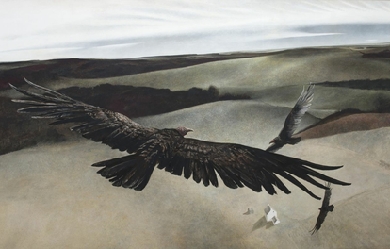

Not too much to say besides: Hey, maybe I'll share some stuff with you. Many things I've written I realize are basic. I am definitely not self-absorbed enough to think any of my writings are superior but, I also hope at least somebody else out there can relate. :) I also will probably hardly ever update this.
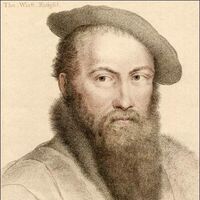
Sir Thomas Wyatt (1503 – 11 October 1542) was a 16th-century English lyrical poet credited with introducing the sonnet into English. He was born at Allington Castle, near Maidstone in Kent – though his family was originally from Yorkshire. His mother was Anne Skinner and his father, Henry Wyatt, had been one of Henry VII's Privy Councillors, and remained a trusted adviser when Henry VIII came to the throne in 1509. In his turn, Thomas Wyatt followed his father to court after his education at St John's College, Cambridge. None of Wyatt's poems were published during his lifetime—the first book to feature his verse was printed a full fifteen years after his death. Education and diplomatic career Wyatt was over six feet tall, reportedly both handsome and physically strong. Wyatt was not only a poet, but also an ambassador in the service of Henry VIII. He first entered Henry's service in 1515 as 'Sewer Extraordinary', and the same year he began studying at St John's College of the University of Cambridge. He married Elizabeth Brooke (1503–1550), the sister of George Brooke, 9th Baron Cobham, in 1522, and a year later she gave birth to a son, Thomas Wyatt, the younger, who led Wyatt's rebellion many years after his father's death. In 1524 Henry VIII assigned Wyatt to be an Ambassador at home and abroad, and some time soon after he separated from his wife on the grounds of adultery. He accompanied Sir John Russell, 1st Earl of Bedford to Rome to help petition Pope Clement VII to annul the marriage of Henry VIII to his first wife, Catherine of Aragon, an embassy whose goal was to make Henry free to marry Anne Boleyn. According to some, Wyatt was captured by the armies of Emperor Charles V when they captured Rome and imprisoned the Pope in 1527 but managed to escape and then made it back to England. In 1535 Wyatt was knighted and appointed High Sheriff of Kent for 1536. In December 1541 he was elected knight of the shire (M.P.) for Kent. Wyatt's poetry and influence Wyatt's professed object was to experiment with the English tongue, to civilise it, to raise its powers to those of its neighbours. Although a significant amount of his literary output consists of translations of sonnets by the Italian poet Petrarch, he wrote sonnets of his own. Wyatt's sonnets first appeared in Tottle's Miscellany, now on exhibit in the British Library in London. In addition to imitations of works by the classical writers Seneca and Horace, he experimented in stanza forms including the rondeau, epigrams, terza rima, ottava rima songs, satires and also with monorime, triplets with refrains, quatrains with different length of line and rhyme schemes, quatrains with codas, and the French forms of douzaine and treizaine in addition to introducing contemporaries to his poulter's measure form (Alexandrine couplets of twelve syllable iambic lines alternating with a fourteener, fourteen syllable line). and is acknowledged a master in the iambic tetrameter. While Wyatt's poetry reflects classical and Italian models, he also admired the work of Chaucer and his vocabulary reflects Chaucer’s (for example, his use of Chaucer’s word newfangleness, meaning fickle, in They flee from me that sometime did me seek). His best-known poems are those that deal with the trials of romantic love. Others of his poems were scathing, satirical indictments of the hypocrisies and flat-out pandering required of courtiers ambitious to advance at the Tudor court. Wyatt was one of the earliest poets of the Renaissance. He was responsible for many innovations in English poetry. He, along with Surrey, introduced the sonnet from Italy into England. His lyrics show great tenderness of feeling and purity of diction. He is one of the originators of the convention in love poetry according to which the mistress is painted as hard-hearted and cruel. Attribution The Egerton Manuscript, originally an album containing Wyatt's personal selection of his poems and translations, preserves 123 texts, partly in the poet's hand. Tottel's Miscellany (1557), the Elizabethan anthology which created Wyatt's posthumous reputation, ascribes 96 poems to him, (33 not extant in the Egerton Manuscript). These 156 poems can be ascribed to Wyatt with certainty, on the basis of objective evidence. Another 129 poems have been ascribed to Wyatt purely on the basis of subjective editorial judgment. They derive mostly from two Tudor manuscript anthologies, the Devonshire and Blage manuscripts. R A Rebholz in his preface to Sir Thomas Wyatt, The Complete Poems, comments, 'the problem of determining which poems Wyatt wrote is as yet unsolved'. However, as Richard Harrier's The Canon of Sir Thomas Wyatt's Poetry (1975) shows, the problem of determining which poems aren't Wyatt's is much simpler. Harrier examines the documentary evidence of the manuscripts (handwritings, organization, etc.) and establishes that there is insufficient textual warrant for assigning any of these poems to Wyatt. The only basis for ascribing these poems to Wyatt resides in editorial evaluation of their style and poetic merits. Compared with the indubitable standard presented in Wyatt's 156 unquestionably ascribable poems, fewer than 30 of these 129 poems survive scrutiny. Most can be dismissed at once. The best edition of Wyatt thus far is Joost Daalder's (1975). It presents 199 poems, including 25 misascriptions (mostly segregated as "Unascribed") and is missing a dozen poems likely to be Wyatt's. A new edition of this major poet, the inventor of lyric poetry in Modern English, is urgently needed. Assessment Critical opinions of his work have varied widely. Thomas Warton, the eighteenth century critic, considered Wyatt 'confessedly an inferior' to his contemporary Henry Howard, Earl of Surrey and that Wyatt's 'genius was of the moral and didactic species and be deemed the first polished English satirist'. The 20th century saw an awakening in his popularity and a surge in critical attention. C. S. Lewis called him ‘the father of the Drab Age’ (i.e. the unornate), from what Lewis calls the 'golden' age of the 16th century, while others see his love poetry, with its complex use of literary conceits, as anticipating that of the metaphysical poets in the next century. More recently, the critic Patricia Thomson, describes Wyatt as "the Father of English Poetry” Rumored affair with Anne Boleyn Many legends and conjectures have grown up around the notion that the young, unhappily married Wyatt fell in love with the young Anne Boleyn in the early-to-mid 1520s. The exact nature of their relationship remains uncertain today. Their acquaintance is certain. However, whether or not the two shared a romantic relationship is unknown to this day. Nineteenth-century critic Rev. George Gilfillan implies that Wyatt and Boleyn were romantically connected. To quote a modern historian "that they did look into each others eyes, and felt that to each other they were all too lovely.." is a quite possible scenario. In his poetry, Thomas calls his mistress Anna, and often embeds pieces of information that correspond with her life into his poetry. "And now I follow the coals that be quent, From Dover to Calais against my mind..." These lines could refer to Anne's trip to France in 1532 right before her marriage to Henry VIII. This could imply that Thomas followed her to France to try and persuade her otherwise or merely to be with her. Later in his life, Thomas writes, while referring to a woman, "Graven in diamonds with letters plain, There is written her fair neck round about, Noli me tangere, Caesar's, I am;" This shows Wyatt's obvious attraction to a royal lady. According to his grandson George Wyatt, who wrote a biography of Anne Boleyn many years after her death, the moment Thomas Wyatt had seen "this new beauty" on her return from France in winter 1522 he had fallen in love with her. When she attracted King Henry VIII's attentions sometime around 1525, Wyatt was the last of Anne's other suitors to be ousted by the king. According to Wyatt's grandson, after an argument over her during a game of bowls with the King, Wyatt was sent on, or himself requested, a diplomatic mission to Italy. Imprisonment on charges of adultery In May 1536 Wyatt was imprisoned in the Tower of London for allegedly committing adultery with Anne Boleyn. He was released from the Tower later that year, thanks to his friendship or his father's friendship with Thomas Cromwell, and he returned to his duties. During his stay in the Tower he may have witnessed not only the execution of Anne Boleyn (May 19, 1536) from his cell window but also the prior executions of the five men with whom she was accused of adultery. Wyatt is known to have written a poem inspired by the experience, which, though it stays clear of declaring the executions groundless, expresses grief and shock. In the 1530s, he wrote poetry in the Devonshire MS declaring his love for a woman; employing the basic acrostic formula, the first letter of each line spells out SHELTUN. A reply is written underneath it, signed by Mary Shelton, rejecting him. Mary, Anne Boleyn's first cousin, had been the mistress of Henry VIII between February and August 1535. In 1540 he was again in favor, as evident by the fact that he was granted the site and many of the manorial estates of the dissolved Boxley Abbey. However, in 1541 he was charged again with treason and the charges were again lifted—though only thanks to the intervention of Henry's fifth wife, then-Queen Catherine Howard, and upon the condition of reconciling with his adulterous wife. He was granted a full pardon and restored once again to his duties as ambassador. After the execution of Catherine Howard, there were rumours that Wyatt's wife, Elizabeth, was a possibility for wife number six, despite the fact that she was still married to Wyatt. He became ill not long after, and died on 11 October 1542 around the age of 39, while staying with his friend Sir John Horsey at Clifton Maybank House in Dorset. He is buried in nearby Sherborne Abbey. Descendants and relatives Long after Thomas Wyatt's death, his only son, Thomas Wyatt the younger, led a thwarted rebellion against Henry's daughter, Queen Mary I, for which he was executed. The rebellion's aim was to set the Protestant-minded Elizabeth, the daughter of Anne Boleyn, on the throne. His sister Margaret Wyatt was the mother of Henry Lee of Ditchley, from whom descend the Lees of Virginia, including Robert E. Lee. Thomas Wyatt's great grandson was Virginia Governor Francis Wyatt. References Wikipedia - http://en.wikipedia.org/wiki/Thomas_Wyatt_(poet)
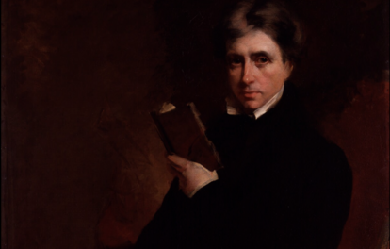
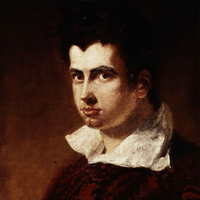
James Henry Leigh Hunt (19 October 1784– 28 August 1859), best known as Leigh Hunt, was an English critic, essayist, poet, and writer, born at Southgate, London, where his parents had settled after leaving the United States. His father Isaac, a lawyer from Philadelphia, and his mother, Mary Shewell, a merchant’s daughter and a devout Quaker, had been forced to come to Britain because of their loyalist sympathies during the American War of Independence. Hunt’s father took holy orders and became a popular preacher, but he was unsuccessful in obtaining a permanent living. Hunt’s father was then employed by James Brydges, 3rd Duke of Chandos, as tutor to his nephew, James Henry Leigh (father of Chandos Leigh), after whom the boy was named.


Thomas Chatterton (20 November 1752– 24 August 1770) was an English poet and forger of pseudo-medieval verse. Although fatherless and raised in poverty, he was an exceptionally studious child, publishing mature work by the age of eleven. He was able to pass-off as an imaginary 15th-century poet called Thomas Rowley, chiefly because few people at the time were familiar with medieval poetry, though he was denounced by Horace Walpole. At seventeen, he sought outlets for his political writings in London, having impressed the Lord Mayor, William Beckford, and the radical leader John Wilkes, but his earnings were not enough to keep him, and he poisoned himself in despair. His unusual life and death attracted much interest among the romantic poets, and Alfred de Vigny wrote a play about him that is still performed today. The oil-painting The Death of Chatterton by Pre-Raphaelite artist Henry Wallis has enjoyed lasting fame.


